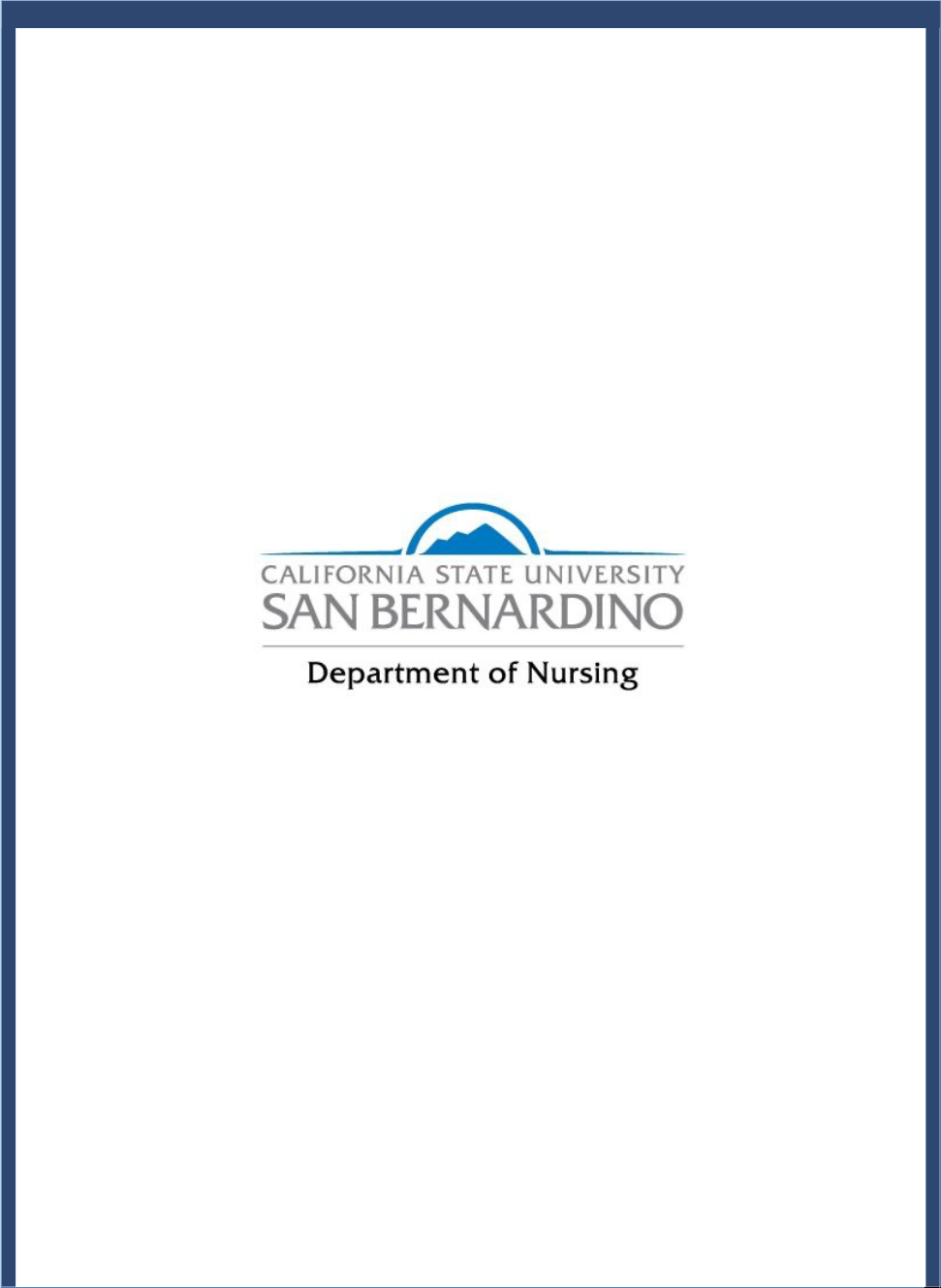
1
.
CALIFORNIA STATE UNIVERSITY,
SAN BERNARDINO
College of Natural Sciences
Pre-Licensure
Bachelor of Science in Nursing
Student Handbook
2023-2024
Revised December 2023
2
SECTION I: INTRODUCTION

3
Letter from the Department Chair & Undergraduate Program Director
Dear Students,
Welcome to the nursing program at California State University, San Bernardino (CSUSB). We
are pleased you will be joining us. The Department of Nursing faculty have developed
information and written policies for all pre-licensure nursing students that are compiled in this
handbook. The purpose of this handbook is to provide a source of documents, including CSUSB
and California Board of Nursing (BRN) policies and procedures, to guide you as you proceed in
the program.
It is essential you read this handbook within the next few days to become familiar with policies,
learning expectations and your evolving role as a nursing student. If you have questions please
talk with your faculty, Dr. Gagalang, the Undergraduate Program Director, or me. Please
complete the BSN Program Nursing Student Handbook Acknowledgement of Review page
indicating that you have received, read and understand this handbook and its contents. This form
is to be submitted to the Department of Nursing office by the deadline provided in your
compliance packet.
Please keep this handbook and its updates for reference throughout your time in the nursing
program. Updates to the handbook will be made available annually and as required by the
department, the university and/or the California BRN. It is your responsibility as a student to
notify the Department of Nursing in writing of any changes in your contact information and/or
program status. Please review your Coyote email frequently as that is the official means of
communicating by the nursing program. It is important that you receive and review changes in
expectations and/or policy. You will find additional information from time to time on the
Department of Nursing website (https://www.csusb.edu/nursing) and CSUSB learning
management system (LMS). You will find current information posted about meetings,
education, employment opportunities and scholarships on bulletin boards placed throughout the
department office hallways. Be sure to check for information often.
Please note that as we make changes in response to the COVID-19 pandemic, you may be
notified by the university, college, department or faculty of short term and/or long-term variations
in policy, procedures, program content, or course delivery. Additional precautions, learning and
documentation may be required. These variations are to promote the safety of students, faculty,
staff, patients, and clients. Please continue to monitor nursing and university communications.
We thank you for your compliance with these expectations.
We wish you a professionally challenging, positive and rewarding experience.
Sincerely,
Dr. J. Yu, PhD, APRN, FNP-BC, FNP-C, RN, Department Chair and Dr. A. Gagalang, PhD,
MSN, RN, Undergraduate Program Director

4
Pre-licensure BSN Program Student Handbook Acknowledgment of Review
I, have received a copy of the Pre-
Licensure BSN Program Student Handbook. I have read its contents and have had the
opportunity to ask questions to better understand the information. I understand it is my
responsibility to notify the Department of Nursing in writing of any changes in contact
information (address, telephone number, etc.) along with any changes in program status. I
will review my Coyote email regularly for information from CSUSB nursing program and
its faculty. I hereby agree to all policies and procedures listed in the handbook in addition
to any updates that may come about during my time in the program. This includes
requirements and/or changes defined by our external partners such as our clinical agencies.
Student’s Name: _________________________________________
Signature:________________________________________ Date:______________
Coyote ID:___________________________ Term Admitted:_____________________
5
6
Table&of&Contents&
SECTION I: INTRODUCTION .................................................................................................... 2
Letter from the Department Chair & Undergraduate Program Director .................................. 3
Pre-licensure BSN Program Student Handbook Acknowledgment of Review ......................... 4
SECTION II: ACADEMIC PRINCIPLES .................................................................................. 9
California State University, San Bernardino Department of Nursing (DON) ......................... 10
Our Mission ................................................................................................................................ 10
Our Vision .................................................................................................................................. 10
Our Values ................................................................................................................................. 10
DON Philosophy ........................................................................................................................ 11
Program Learning Outcomes (PLOs) ....................................................................................... 12
DON Pre-Licensure BSN Approval/Accreditation ................................................................... 12
BSN Curriculum Plan: Term-Based (Fall 2020) ..................................................................... 13
Five (5) Term Nursing Course Roadmap, Fall Entry as Freshman, Spring Admission to BSN
program, eight (8) Term Total ................................................................................................... 14
BSN Curriculum Plan: Term-Based (Effective Fall 2020) ...................................................... 15
Communication .......................................................................................................................... 15
SECTION III: FACULTY ........................................................................................................... 16
CSUSB DON Organizational and Communication Chart ....................................................... 17
DON Faculty & Staff ................................................................................................................. 18
Channels of Communication, Chain of Command, Concerns and Grievances ...................... 19
Grade Grievance ........................................................................................................................ 20
SECTION IV: ACADEMIC POLICIES .................................................................................... 22
Examination Policy .................................................................................................................... 23
Study guide in nursing courses ................................................................................................. 23
Guidelines: ................................................................................................................................. 23
Grading Policy ........................................................................................................................... 24
Assignment Policy ...................................................................................................................... 25
Grading Scale Policy .................................................................................................................. 25
Competency Assessment Integration Policy .............................................................................. 26
Sequence of ATI Integrated Competency Assessments in the Prelicensure BSN Curriculum 31
Selected Graded Practice Quizzes for Each Graded Proctored Exam ..................................... 32
DON Pre-licensure Program Credit by Examination Policy ................................................... 34
Academic Attendance ................................................................................................................. 37
Absences ..................................................................................................................................... 39
Readmission to the Nursing Program ....................................................................................... 42
University Process for Leave of Absence .................................................................................. 44
Academic Honesty ...................................................................................................................... 44
Academic Honesty Policy .......................................................................................................... 45
Academic Integrity Review Procedure ...................................................................................... 46
Academic Probation & Disqualification ................................................................................... 48
Academic Disqualification ......................................................................................................... 49
Academic Expectations .............................................................................................................. 49
Specific Requirements for Nursing Courses ............................................................................. 50
7
CSUSB Undergraduate Student Option to Take 5000-level MS in Nursing Program Courses
.................................................................................................................................................... 50
Term Withdrawal ....................................................................................................................... 51
Leave of Absence from Nursing Program ................................................................................ 51
Program Dismissal Policy .......................................................................................................... 51
SECTION V: STUDENT RESOURCES .................................................................................... 53
Academic Advisement ................................................................................................................ 53
University Catalog and Schedule of Classes ............................................................................. 54
Strategic Plan for Success Policy (SPS) .................................................................................... 54
List of Student Resources Financial Aid ................................................................................... 56
Office of the Registrar ............................................................................................................... 56
Student Health Center* ............................................................................................................. 56
Services to Students with Disabilities (SSD)* ........................................................................... 57
The Career Center ...................................................................................................................... 57
The Writing Center .................................................................................................................... 58
ELSC Students ........................................................................................................................... 58
Graduation Requirement Check ................................................................................................ 58
SECTION VI: SAFETY, CLASSROOM, AND CLINICAL/LAB PRACTICES ................... 59
Student Requirements and Compliance .................................................................................... 60
Essential Duties to Meet Clinical Requirements ...................................................................... 64
Professional Standards in Clinical Practice ............................................................................. 65
The Code of Ethics for Nurses .................................................................................................. 66
Integrity ...................................................................................................................................... 67
Civility Definition ....................................................................................................................... 67
Candidates with Disabilities-Request for Accommodations in an Examination setting for the
NCLEX-RN ................................................................................................................................ 68
Clinical/Simulation Center Injuries .......................................................................................... 68
DON Incident or Near Miss Policy ........................................................................................... 70
Medical Clearance ..................................................................................................................... 71
Impaired Student Policy ............................................................................................................ 71
Policy for Prescribed Medication Use by Students in the Clinical Setting .............................. 72
Study Expectations ..................................................................................................................... 73
Abuse Reporting ......................................................................................................................... 73
Classroom & Clinical Expectations .......................................................................................... 73
Clinical Experience .................................................................................................................... 74
Clinical & On Campus Lab Uniform & Dress Code ................................................................ 76
Copying or Transmitting Client Records/HIPAA ..................................................................... 79
Social Media Network Guidelines and Policy ........................................................................... 79
Criteria for Unsafe Clinical Practice ........................................................................................ 80
Delivery of Health Care ............................................................................................................. 81
Patient Abandonment ................................................................................................................ 81
Infection Control ........................................................................................................................ 81
Communicable Disease .............................................................................................................. 81
Standard Precautions ................................................................................................................. 81
Student Needlestick/Blood & Body Fluid Exposure Guidelines .............................................. 83
Nursing Students Post Blood Exposure/Needle Stick Procedure ............................................ 85
8
Loss of Clinical/Lecture Due to Public Emergency ................................................................. 87
Medication Calculation Competency Policy ............................................................................. 87
Medication Administration Guidelines ..................................................................................... 89
Health Fair Medication Administration ................................................................................... 93
IV Push Policy ............................................................................................................................ 94
Nursing Clinical-Ten Mandatory Elements .............................................................................. 95
Skills Lab Policy ......................................................................................................................... 96
Testing Lab Security Policy ....................................................................................................... 99
Certified Nursing Assistant ...................................................................................................... 100
SECTION VII: RECOGNITION AND CEREMONIES ........................................................ 102
Commencement Ceremonies ................................................................................................... 103
Academic Regalia ..................................................................................................................... 103
Honors for Graduation ............................................................................................................ 103
Department of Nursing Honors ............................................................................................... 103
Department of Nursing Outstanding Academic Achievement Award ................................... 104
Department of Nursing Outstanding Student Leadership Award .......................................... 104
Honor Cords ............................................................................................................................. 104
Dedication to the Profession Ceremony .................................................................................. 104
Recognition & Pinning Ceremony .......................................................................................... 105
Responsibilities for Pre-Licensure Dedication to the Profession Ceremony ......................... 105
Responsibilities for Recognition and Pinning Ceremony ...................................................... 106
Dress Code for Nursing Ceremonies ....................................................................................... 107
SECTION VIII: STUDENT ACTIVITIES .............................................................................. 108
STTI, International Nursing Honor Society ........................................................................... 109
Nursing Student Organization ................................................................................................ 109
Student Nurses Association/ National Student Nurses Association (SNA/NSNA) & California
Student Nurses Association (CSNA) ....................................................................................... 110
NSNA Code of Academic and Clinical Conduct ..................................................................... 111
SECTION IX: APPENDICES ................................................................................................... 113
CSUSB Incident and Near Miss Report .................................................................................. 114
Abandonment of Patients ........................................................................................................ 116
Standards of Competent Performance .................................................................................... 117
BRN Impaired Policy ............................................................................................................... 118
Other Department of Nursing Pathways ................................................................................. 119
Licensed Vocational Nurses (LVN) Thirty (30)- Unit Option at CSU San Bernardino
(CSUSB) ................................................................................................................................... 119
9
SECTION II: ACADEMIC PRINCIPLES
10
California State University, San Bernardino
Department of Nursing (DON)
Our Mission
The mission of the CSUSB DON is to promote and support:
● development of students in preparation for professional practice, scholarship,
leadership, and lifelong learning.
● collaboration to address health needs and promote principles of social justice and
health equity of diverse populations in the community and globally.
● respect, inclusivity, and collegiality among diverse students, faculty, and staff.
● faculty professional development in teaching, scholarship, service and practice.
● wellness among students, faculty, staff, and the global community whom we serve.
Our Vision
To be a center of collaboration and innovation in nursing education, scholarship, practice,
and service.
Our Values
Integrity, Professionalism, and Ethical Accountability
Excellence, Innovation, and Leadership Caring,
Respect, Diversity and Cultural Humility
Community Collaboration and Social Justice
Revised 5.20.2022; Effective Fall 2022
11
DON Philosophy
The Department of Nursing (DON) at California State University, San Bernardino (CSUSB) is
committed to the university's broad mission of teaching and service, research excellence, and
intellectual interaction and creativity included in the full range of programs offered through
the DON.
The philosophy of the Department of Nursing is derived from a synthesis of beliefs and values
shared by faculty, staff, students, alumni and clinical agencies, and community stakeholders
concerning nursing, nursing education, nursing students and the university. This philosophy and
purpose stems from the mission, vision, and core values of the department. The mission and
vision speak to collaboration, innovation, and excellence. The core values are integrity,
professionalism, and ethical accountability; excellence, innovation, and leadership; caring,
respect, and cultural sensitivity; community collaboration and social justice.
Professional nursing is both an art and a science, entrusted by society to provide services to
promote, maintain, and restore the health and well-being of individuals, families and
communities from diverse backgrounds in a variety of settings. Nursing as a discipline is
grounded in theory and research that directs and validates clinical practice decisions and actions,
and generates knowledge for practice. Nursing as a profession derives its authentic authority over
nursing education, research, practice and service from a social and ethical contract with the
public. This contract mandates that the profession act responsibly in promoting person-centered,
safe, evidence-based collaborative care, utilizing informatics with a focus on quality
improvement for the public's health and well-being.
The faculty recognize that student-centered learning requires an environment which promotes
strategies that encompass students learning styles and facilitates learning outcomes which are
cognitive, affective and psychomotor and driven by the idea of continuous improvement. Rich
and varied educational opportunities are an integral part of lifelong learning and demonstrating
professionalism in partnership with communities. Successful CSUSB nursing students are
expected to learn, to lead, and to transform themselves, the profession, and the community by
fulfilling leadership roles and providing evidence-based nursing practice.
Graduate nursing education builds upon the baccalaureate curriculum to prepare nursing students
for advanced nursing roles by promoting the development of advanced knowledge, concepts and
skills.
Revised 7/18/19

12
Program Learning Outcomes (PLOs)
BSN graduates will:
1. Demonstrate competent practice, and evidence-based care on the foundations of biological,
physical, social, and nursing sciences in caring for individuals, families, and communities.
2. Demonstrate competence in critical thinking and clinical reasoning skills in the practice of
nursing.
3. Apply the nursing process to provide ethical, patient-centered, holistic, culturally sensitive, and
precise care, health promotion, and disease and injury prevention to individuals, families,
communities, and populations across the lifespan, including care of acute and chronic health
conditions and during public health disasters.
4. Utilize various forms of communication, including oral, written, and technological applications
for disseminating accurate patient information and plans of care in order to maximize safety
and optimize health outcomes.
5. Demonstrates leadership as a professional nurse and collaborates in clinical practice within a
multidisciplinary team to monitor outcomes, improve patient care, and apply and promote
health policies and regulatory standards that advocate for comprehensive and safe delivery of
healthcare.
6. Apply evidence as a basis for practice, and support, facilitate and participate in research.
7. Assume the responsibility for knowledge acquisition of nursing science, excellence in clinical
practice, nursing professional code of conduct and nursing values which serves as the basis for
lifelong learning and professional development.
Effective Fall 2017, Rev.1.17.2020
DON Pre-Licensure BSN Approval/Accreditation
The DON Pre-Licensure BSN program is approved by the California Board of Registered
Nursing (BRN). The baccalaureate degree in nursing at CSUSB is accredited by the
Commission on Collegiate Nursing Education (http://www.ccneaccreditation.org).
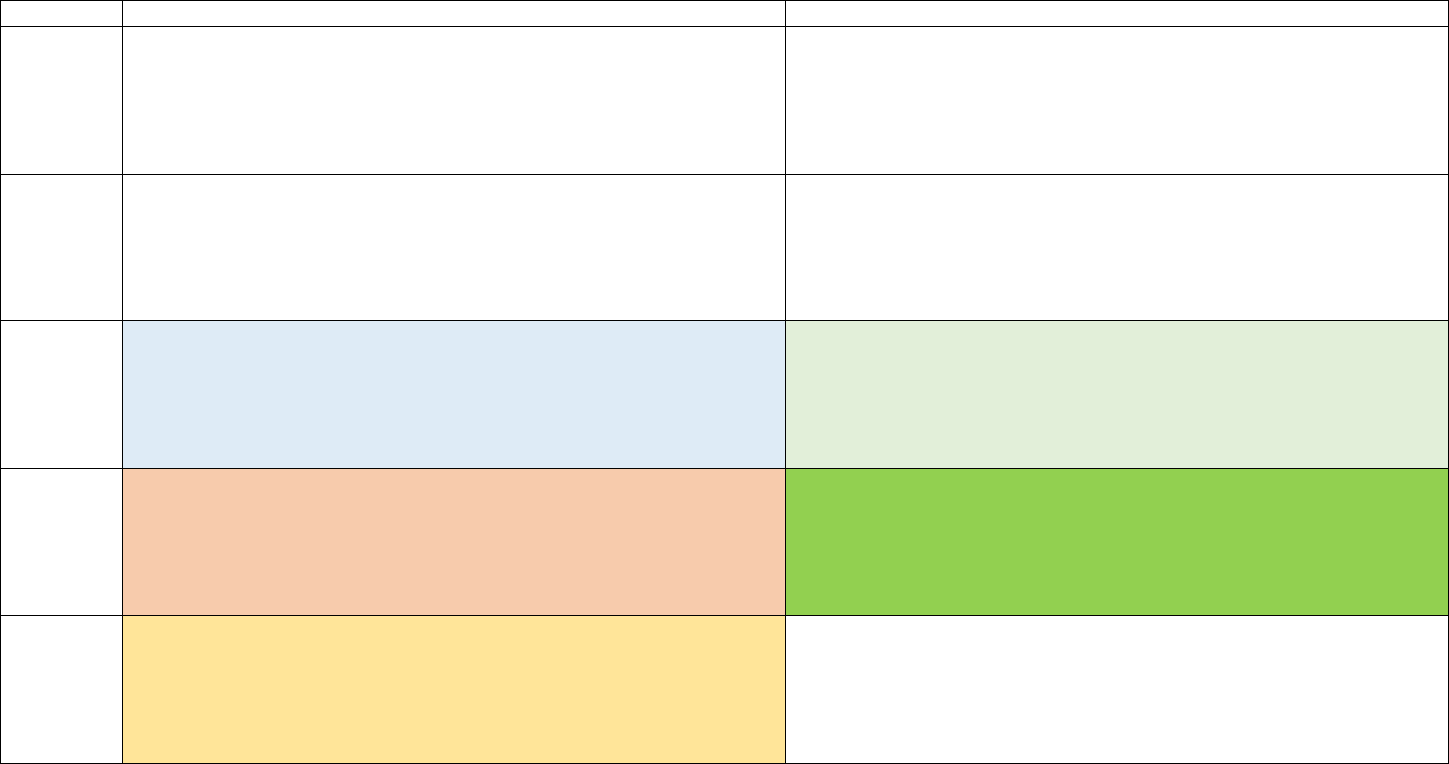
13
BSN Curriculum Plan: Term-Based (Fall 2020)
Five (5) Term Nursing Course Roadmap, Fall Entry as Freshman, Fall Admission to BSN Program, Nine (9) Term Total
Fall Semester
Spring Semester
Freshman
(Seeker)
GE (B1) CHEM 2070 5 (4:1)
BIOL 2230 A & P I 4 (3:1)
GE (A2) ENG 1070A Written Communication 3
GE Foundation Seminar (E) 3
15 total units
GE (B2) BIOL 2240 A & P II 4 (3:1)
GE (D) PSYC 1100 3
GE (A1) COMM 1006 Oral Communication 3
GE (A3) COMM 1007 Critical Thinking 3
GE* (D) US History 3
16 total units
Sophomore
(Seeker/
Knower)
BIOL 2200 Microbiology 4 (3:1)
GE (B4) MATH 1201 Math/Statistics 3
PSYC 2201 Developmental Psyc 3
GE (C2) World Language or Lit 3
GE* (D) American Government. 3
16 total units
GE* (C2) Philosophy 3
GE (C1) Arts 3
GE (C2) UD Literature 3
Ethnic Studies course 3
12 total units
Junior
(Maker)
NURS 2602 Foundational Concepts 2
NURS 2821 Foundational Theory & Skills 6 (3:3, 135 hrs, campus lab
+ clinical) (effective for Spring 23 cohort)
NURS 3016 Health Assessment 3 (1:2, 90 hrs campus lab)
FREE Elective 1
11 total units
NURS 3080 Pathophysiologic Concepts 3
NURS 3082 Pharmacology & Therapeutics 3
NURS 3221 Nsg Care Adults/Older Adults I 6 (Theory 3 + Clinical 3) (135 hrs)
12 total units
Senior
(Doer)
NURS 3633 Nsg Care Children & Families 5 (Theory 3 + Clinical 2) (90 hrs)
NURS 3635 Nsg Care Women, Infants, & Fams 5 (Theory 3 + Clinical 2) (90 hrs)
NURS 3640 Intro to Theories of Nsg & Health + WI 3
13 total units
NURS 4222 Intro to Nsg Research & EBP + GE B UD SI 3
NURS 4415 Psychiatric & MH Nursing Practice 5 (Theory 3 + Clinical 2) (90
hrs)
NURS 4417 Comm & PH Nsg Pract + GE-D UD SS + DI 5 (Theory 3 + Clinical 2)
(90 hrs)
13 total units
Senior
(Doer)
NURS 4833 Nsg Care Adults/Older Adults II 7 (Theory 3 + Clinical 4) (180
hrs)
NURS 4840 Leadership & Management 2 (effective for Spring 23 cohort)
NURS 4920 Integration Knowledge for Nsg Pract 2
12 total units
*Note: One of these courses should also carry the WI designation.
Note: All courses must be completed with a grade of “C” or higher. This plan does not include all required General Education (GE) courses
needed for graduation.
Approved FO 10.23.2020, Rev. 4.8.2023
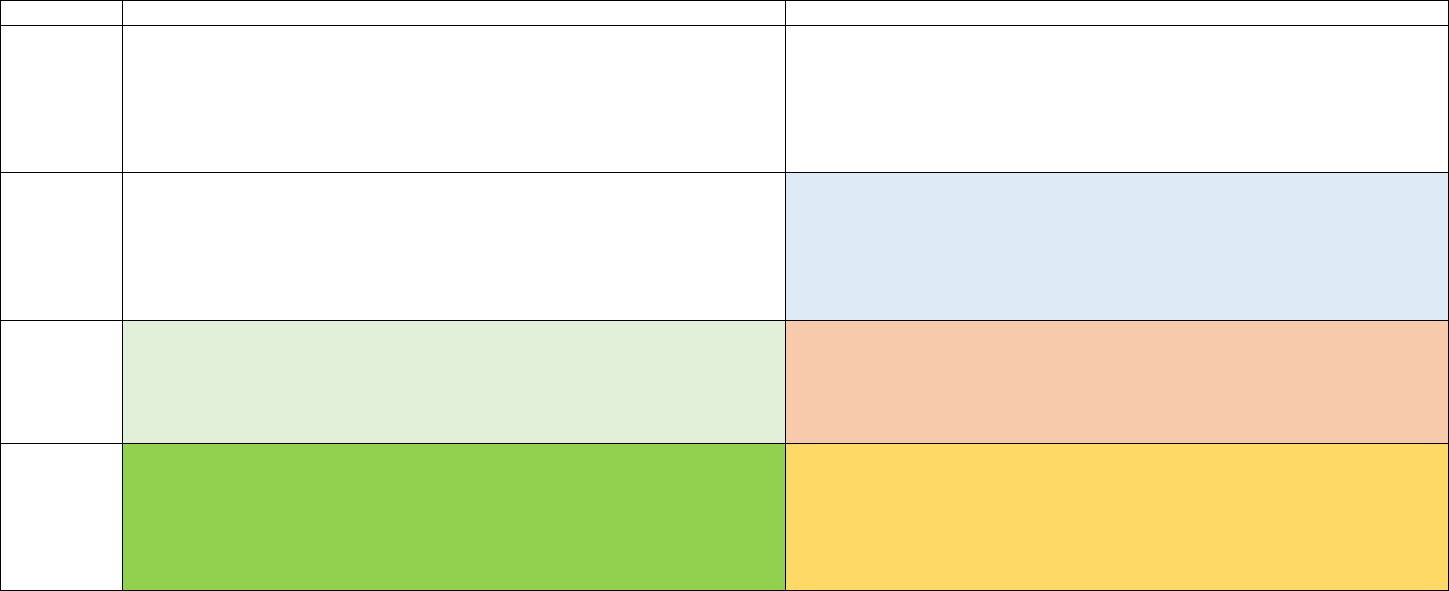
14
Five (5) Term Nursing Course Roadmap, Fall Entry as Freshman, Spring Admission to BSN program, eight (8) Term Total
Fall Semester
Spring Semester
Freshman
(Seeker)
GE (B1) CHEM 2070 5 (4:1)
BIOL 2230 A & P I 4 (3:1)
GE (A2) ENG 1070A Written Communication 3
GE Foundation Seminar (E) 3
15 total units
GE (B2) BIOL 2240 A & P II 4 (3:1)
GE (D) PSYC 1100 3
GE (A1) COMM 1006 Oral Communication 3
GE (A3) COMM 1007 Critical Thinking 3
GE* (D) US History 3
16 total units
Sophomore
(Seeker/
Knower)
BIOL 2200 Microbiology 4 (3:1)
GE (B4) MATH 1201 Math/Statistics 3
PSYC 2201 Developmental Psyc 3
GE (C2) World Language or Lit 3
GE* (D) American Government 3
16 total units
NURS 2602 Foundational Concepts 2
NURS 2821 Foundational Theory & Skills 5 (3:2, 90 hrs, campus lab + clinical)
NURS 3016 Health Assessment 3 (1:2, 90 hrs campus lab)
GE (C1) Arts 3
13 total units
Junior
(Maker)
NURS 3080 Pathophysiologic Concepts 3
NURS 3082 Pharmacology & Therapeutics 3
NURS 3221 Nsg Care Adults/Older Adults I 6 (Theory 3 + Clinical 3) (135 hrs)
Ethnic Studies course 3
15 total units
NURS 3633 Nsg Care Children & Families 5 (Theory 3 + Clinical 2) (90 hrs)
NURS 3635 Nsg Care Women, Infants, & Fams 5 (Theory 3 + Clinical 2) (90 hrs)
NURS 3640 Intro to Theories of Nsg & Health + WI 3
GE* (C2) Philosophy 3
16 total units
Senior
(Doer)
NURS 4222 Intro to Nsg Research & EBP + GE B UD SI 3
NURS 4415 Psychiatric & MH Nursing Practice 5 (Theory 3/Clinical 2) (90 hrs)
NURS 4417 Comm & PH Nsg Pract + GE-D UD SS + DI 5 (Theory 3/Clinical 2) (90
hrs)
GE (C2) UD Literature 3
16 total units
NURS 4833 Nsg Care Adults/Older Adults II 7 (Theory 3 + Clinical 4) (180 hrs)
NURS 4840 Leadership & Management 3
NURS 4920 Integration Knowledge for Nsg Pract 2
FREE Elective 1
13 total units
*Note: One of these courses should also carry the WI designation.
Note: All courses must be completed with a grade of “C” or higher. This plan does not include all required General Education (GE) courses
needed for graduation.
Approved FO 10.23.2020 Rev. 4.8.23
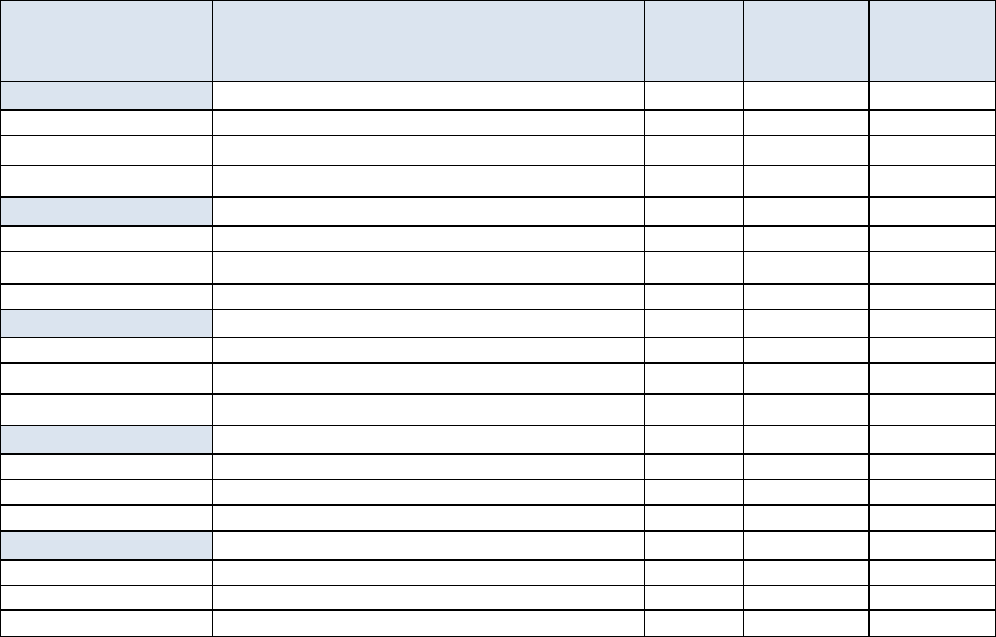
15
BSN Curriculum Plan: Term-Based (Effective Fall 2020)
COURSE NUMBER
COURSE TITLE
COURSE
UNITS
THEORY
UNITS
(HOURS)
CLINICA
L UNITS
(HOURS)
FIRST TERM
NURS 2602
Foundational Concepts
2
2 (30)
0
NURS 2821
Foundational Theory & Skills
5
3 (45)
3 (135)
NURS 3016
Health Assessment
3
1 (15)
2 (90)
SECOND TERM
NURS 3080
Pathophysiologic Concepts
3
3 (45)
0
NURS 3082
Pharmacology & Therapeutics
3
3 (45)
0
NURS 3221
Nursing Care Adults/Older Adults I
6
3 (45)
3 (135)
THIRD TERM
NURS 3633
Nursing Care Children & Families
5
3 (45)
2 (90)
NURS 3635
Nursing Care Women, Infants, & Families
5
3 (45)
2 (90)
NURS 3640
Intro to Nursing Theories (WI)
2
2 (30)
0
FOURTH TERM
NURS 4222
Intro to Nursing Research & EBP (B5)
3
3 (45)
0
NURS 4415
Psychiatric & Mental Health Nursing Practice
5
3 (45)
2 (90)
NURS 4417
Comm & Public Health Nursing Practice (D5, DI)
5
3 (45)
2 (90)
FIFTH TERM
NURS 4833
Nursing Care Adults/Older Adults II
7
3 (45)
4 (180)
NURS 4840
Leadership & Management
2
2 (30)
0
NURS 4920
Integration of Knowledge for Nursing
2
2 (30)
0
Note: All courses must be completed with a grade of “C” or higher. This plan does not include all required General
Education (GE) courses needed for graduation. FO-approved, 4.8.23, effective Spring 2023
Communication
The major means of communicating with students is through the CSUSB email and CSUSB
LMS. It is the University's expectation that students check their CSUSB email account daily to
keep current with pertinent university and department information. Official correspondence may
include academic-related deadlines, registration, advising and graduation information, virus alerts
and student government notices. Additionally, faculty may direct course information,
assignments, discussions, and clarifications to students through CSUSB email and the CSUSB
LMS. The Chief Nursing Administrator/Chair and Program Director may also use the CSUSB
LMS for important communications with you. You are responsible and accountable for messages
and information sent to you through these means. One major advantage of using your CSUSB
email account is that, while your mailing address may change throughout the course of your
enrollment, your email account can always be accessed via the World Wide Web. Remember to
check your CSUSB email frequently. The DON email communications with students are through
their CSU email accounts.
For teaching and learning, the official language used in the classroom is English only.
16
SECTION III: FACULTY
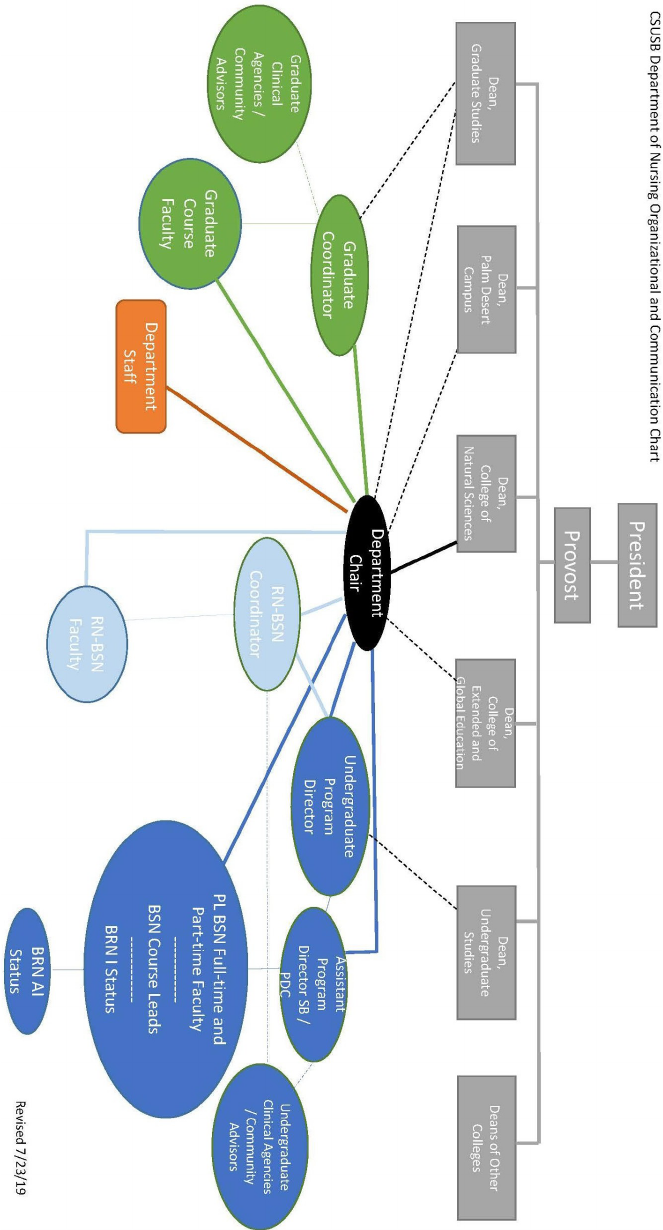
17
CSUSB DON Organizational and Communication Chart
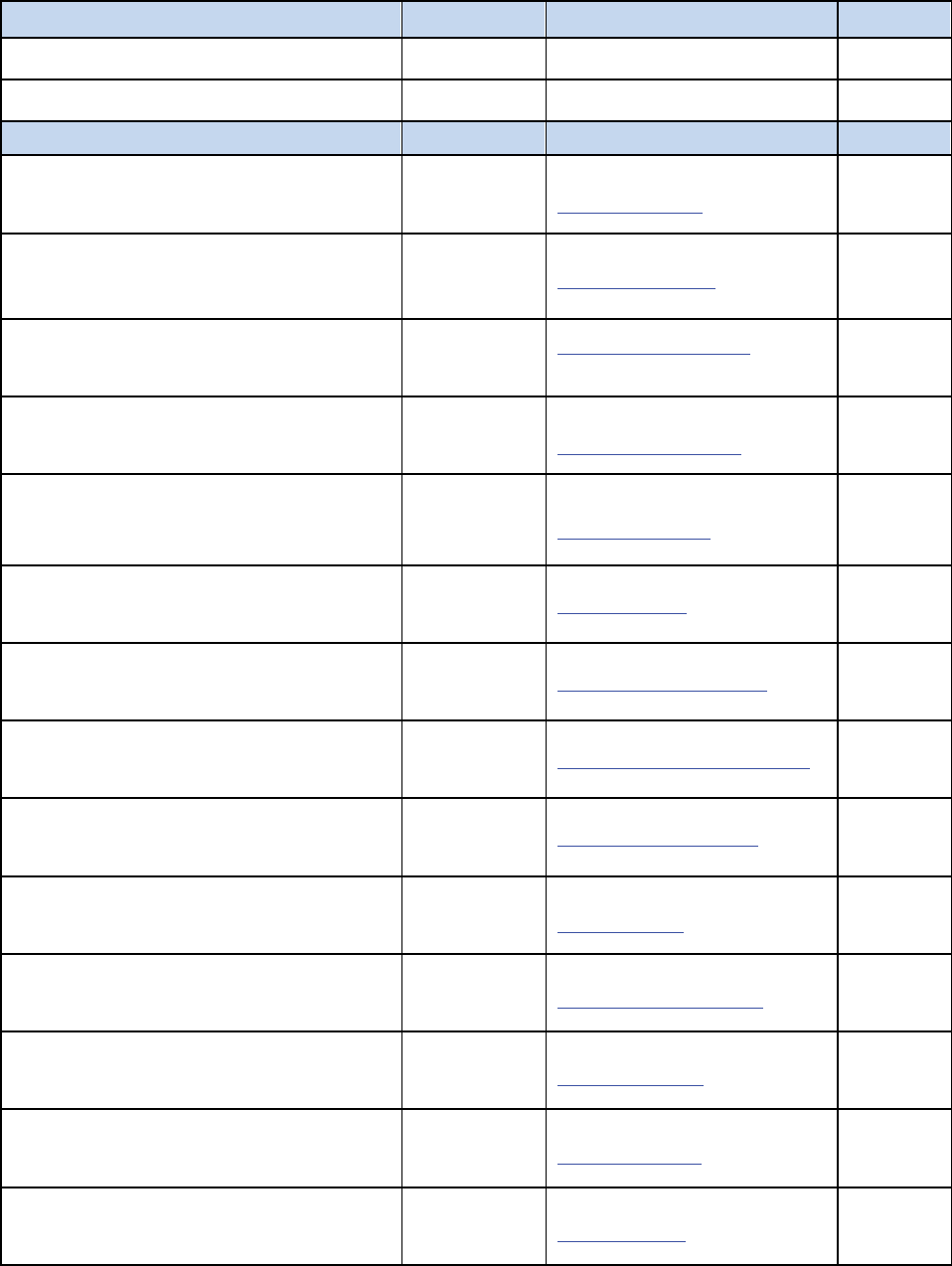
18
DON Faculty & Staff
Department Office
Phone
Office
San Bernardino Campus
(909) 537-5380
HP 215
Palm Desert Campus
(909) 537-8127
HS 120
Full-time Faculty
Phone
Email
Office
Davis, Claudia, Ph.D., MN, CNS, RN
Professor
(909) 537-3632
HP 226
Fangonil-Gagalang, Evangeline, Ph.D, MSN, RN
Undergraduate Program Director and Assistant
Professor
(909) 537-5380
HP 231
Gregg, Shawnte Renee, DNP, FNP-C
Associate Professor
HP-221
Kim, Younglee, Ph.D., RN, PHN
Associate Professor
(909) 537-3394
HS 114
(PDC)
Kim, Phoebe, DNP., RN, CCRN
Associate Professor
(909) 537-3481
HP 227
Lama, Anne, DNP, MSN Ed, APRN, FNP-C
Assistant Professor
(909) 537-7798
HP 225
Nwamu, Henrietta, Ph.D, RN
Assistant Professor
(909) 537-7239
Henrietta.nwamu@csusb.edu
HP 223
Pattayakorn, Pinthusorn, Ph.D., RN
Graduate Coordinator and Professor
(909) 537-3263
Pinthusorn.patt[email protected]
HP-222
Schneider, Justin, DNP, RN, AGPCNP-BC, CNEcl,
CNE Assistant Professor
HS 120
Tiras, Kathyrne, RN, MS, CNS, PCCRN
Lecturer
(909) 537-3457
HP 219
Thomas, Tykeysha, Ph.D., MSN, RN
Assistant Professor
tykeysha.thom[email protected]
HP 220
Tweedy, Debra, MSN, PHN, RN, CLE
Lecturer
(909) 537-7239
HS 120
Wojnar, Danuta, MSN, RN, CCRN, ACUE
Lecturer
(760) 423-3402
HS 122
(PDC)
Wolf, Nancy, MSN, RN, PHN, ACUE
BSN Assistant Director (PDC) & Lecturer
(909) 537-8135
HS 122
(PDC)
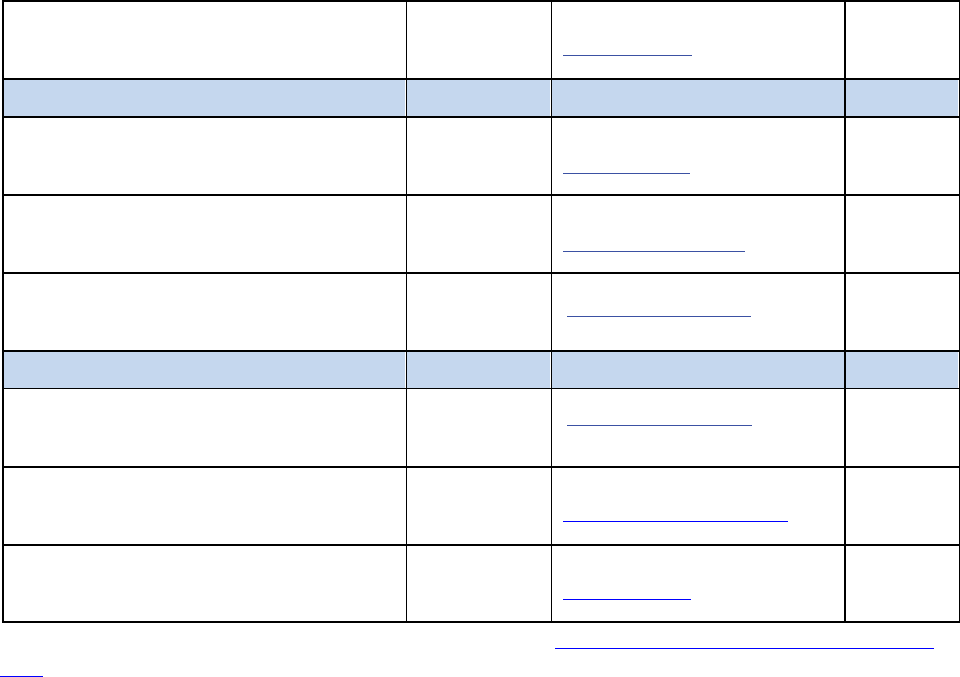
19
Yu, Jie, Ph.D., APRN, FNP-BC, FNP-C, RN
Department Chair and Associate Professor
(909) 537-5380
HP-216
FERP Part-time
Phone
Email
Office
Blue, Dawn, DNP RN AGACNP-BC
RN- BSN Coordinator and Professor
(909) 537-7240
Brandt, Cheryl, Ph.D., RN, APRN-BC, CNE
Professor Emerita
Burch, Terri, Ph.D., RN
Professor Emerita
(909) 537-8245
Terese.Burch@csusb.edu
HP 230 /
HS 123
Support Staff
Phone
Email
Office
Carlos Moran – Administrative Support
Coordinator II
(909) 537-4514
Carlos.moran@csusb.edu
HP 215
Sonia Perez-Gamboa – Information Technology
Consultant
(909) 537-3599
sonia.perezgamboa@csusb.edu
HP 232
Tiffany-Angel Ruiz – Administrative Support
Assistant
(909) 537-3541
taruiz@csusb.edu
HP 215
*For current part-time faculty, please visit DON website: https://www.csusb.edu/nursing/faculty-
staff
Channels of Communication, Chain of Command, Concerns and Grievances
In the interest of professionalism and collegiality the Department of Nursing encourages open
communication including sharing of ideas and resolution of concerns at the lowest level
possible. Students are encouraged to communicate their ideas, comments, suggestions and
concerns by talking with their faculty and/or participating in the Student Nurse Association
(SNA). From time-to-time students or faculty may request a student/faculty forum to discuss
matters of interest to one or both groups.
If a student has a concern that cannot be addressed and resolved by one of the above channels,
the student is expected to proceed through the chain of command in the following order:
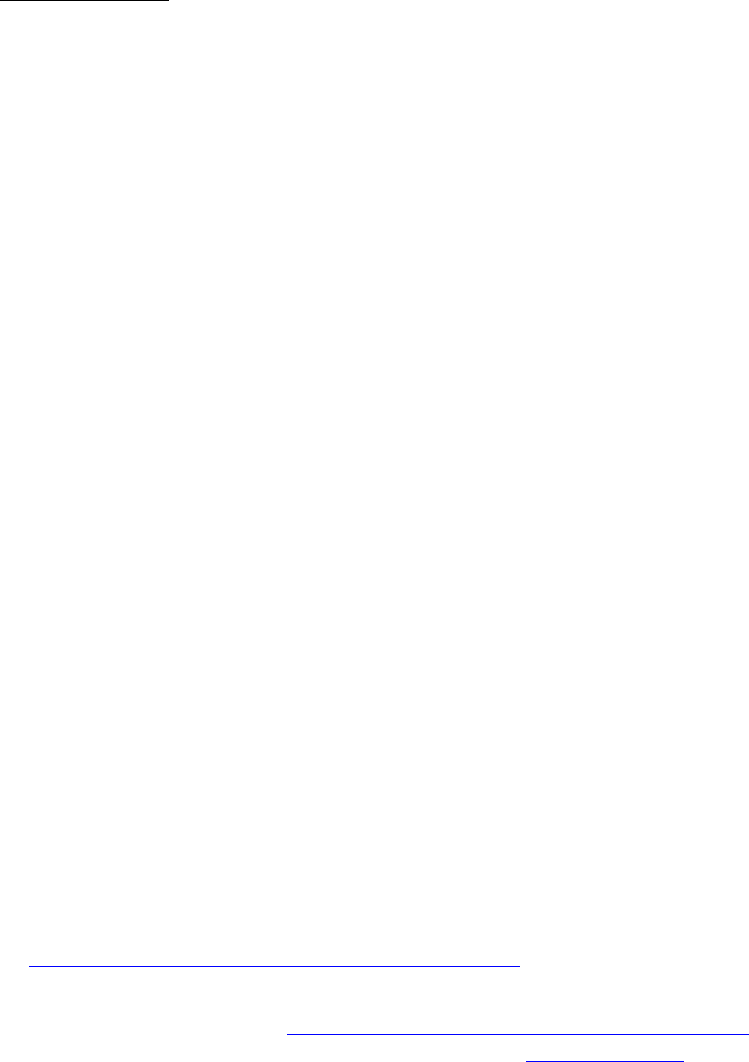
20
1. Speak directly with the clinical faculty member involving clinical course matter or
lecture faculty member for theory course concern.
2. Speak directly with the course lead instructor involving course matters (if different from
clinical or lecture faculty)
3. Speak directly with Assistant Program Director (if different from course/clinical
faculty)
*For Spring 2024
PDC - Professor Nancy Wolf
SBC - Dr. Yeon Kim
If the concern is not resolved through the informal process described above the student may
file a Formal Complaint by progressing to the next level of chain of command.
For matters involving a course, program, faculty or related matter, the student should contact
the following administrators in the order below:
1. The Undergraduate Program Director
2. The Department of Nursing of Nursing Chair/Chief Nursing Administrator
3. The Dean of College of Natural Sciences
Students are expected to act with professionalism and respect at all times and not detract from the
learning or reputation of others. As a student of professional nursing, student behavior extends
beyond the classroom. This includes clinical agencies, social media and any other written or oral
communication related to the CSUSB program of nursing. If a classroom or clinical concern occurs,
students should consult with the faculty member in an appropriate manner and time as defined by the
faculty member, syllabus and/or student handbook.
University Grievances
For matters not resolved above, or matters of concern defined by the University, including, but
not limited to, academic matters /grade grievances and student rights (such as Title IX and
Gender Equality, Students with Disabilities), the student is referred to the CSUSB Bulletin and
appropriate University officers.
Grade Grievance
A grade grievance must be initiated by the student within and no more than 40 calendar days after
the grade is recorded. Information regarding the Student Academic Grievance Procedures is
available from the Office of Advising and Academic Services, University Hall, Room 380, 909-
537-5034 or at https://www.csusb.edu/advising-academic-services
Information concerning academic matters may be obtained from the Office of the Associate
Dean of Undergraduate Studies, UH-352, Academic Success and Undergraduate Advising, or
from College Dean’s offices. Generally, the student must initiate a grade grievance within no
more than 40 working days after the grade is recorded. Information concerning nonacademic
grievances and discrimination complaints may be obtained from the Office of the Vice
President for Student Affairs, UH-231, other Vice Presidents' offices, and College Deans'
22
SECTION IV: ACADEMIC POLICIES
23
Examination Policy
This examination policy applies to pathophysiology (NURS 3080) and pharmacology (NURS
3082) courses, and to all nursing theory courses with a companion clinical component, NURS
2821, NURS 3221, NURS 3633, NURS 3635, NURS 4415, NURS 4417, and NURS 4833) in
the prelicensure program.
Teacher-made course examinations in the identified courses shall consist of multiple choice, select-
all-that-apply, and “hotspot” NCLEX-RN-style questions. Course examinations will cover objectives
that are addressed in the course syllabus. With just one exception, no less than 80% of the course
grade shall come from teacher-made examinations. The exception applies to any of the identified
courses in which there two (2) Integrated Competency Assessment proctored exams are scheduled; in
those courses, no less than 70% of the course grade shall come from teacher-made examinations.
Students must end the theory course with at least a 73% exam average. The exam average will be calculated
with each exam weighted according to its contribution to the total exam percentage points in the course. If a
student ends the course with less than a 73% exam average, the student will be given no higher than a C- as the
course grade, which represents a failing grade for the course per Department of Nursing policy.
If a student’s exam average falls below 73%, the student will take the following steps:
1) The student will meet with the course instructor and collaboratively develop a Strategic
Plan for Success (SPS) that will include specific study and exam success strategies.
2) The student will work to achieve a cumulative course exam average of 73% or higher upon
completing subsequent course exams. As noted above, the student must end the course with
at least a 73% exam average.
3) The student will fulfill the stated expectations in the SPS.
Students must wear CSUSB nursing badge at all times during testing.
All testing requires the use of Respondus LockDown Browser (or approved CSUSB product).
All virtual testing requires the use of Respondus LockDown Browser and Respondus Monitor or
(approved CSUSB product).
If the internet is down during the exam with Respondus Lockdown Browser and the students
must inform the faculty, recommend the students to stop the test and the students will retake the
test with a different test.
Reviewed 01/05/17; revised 12/02/2016, 01/05/17; revised FO 9.20.17 effective Fall Quarter 2017; Rev. 12.8.23, effective
Spring 2024
Study guide in nursing courses
Guidelines:
DON faculty may choose but not be required to offer faculty prepared study guides in their course.
If faculty choose to offer study guides, the following are the guidelines.
Faculty-prepared study guides may be distributed to prelicensure BSN students if and only
if the study guide is prepared according to the following guidelines.
1. The study guide is organized by the lesson learning outcomes.
2. Particularly helpful learning resources the students have already purchased
may be pointed out in relationship to lesson learning outcomes.
3. The study guide does not focus on what topics will and will not be tested on an exam;
rather it focuses on key points related to the lesson learning outcomes.
24
4. The study guide encourages students to go beyond basic memorization for critical thinking
and/or clinical reasoning.
Effective: March 18, 2022
Grading Policy
Students must earn a passing grade in both Theory and Clinical/Lab components in order to
pass the course. There is no extra credit. There is no rounding.
It is an expectation that students submit all required work when it is due. Late work receives
a 5% reduction per work day up to a maximum of 5 days or the last day of instruction,
whichever comes first, after which the assignment is given a zero.
Exceptions must be pre-approved by course faculty unless a documented
extenuating circumstance occurs.
Any course work submitted 5 days after the due date and before the start of finals will
satisfy the requirement of being submitted but will receive a zero grade. All course work
learning activities must be completed and submitted by the end of instruction, prior to the
start of finals week. A course grade of “U”* (unauthorized incomplete) will be assigned if
course work activities are not completed and submitted prior to the start of finals week.
25
The course grade will reflect all required work.
Expectations regarding exams follow the exam policy.
All students are encouraged to visit faculty during office hours if there are any questions about
course work activities. For all writing, articulating, presenting and testing difficulties, students
should access the appropriate CSUSB student resources.
*Unauthorized withdrawal is charged equivalent to an F.
Revised by Faculty Org May 4, 2020 Effective: May 4, 2020
Assignment Policy
All assignments must be completed in full and submitted as assigned in order to pass all nursing
courses.
Approved by FO 11.30.18. Effective Winter 2019 term.
Grading Scale Policy
In order to standardize grading across courses, nursing faculty will adhere to the following
course grading scale.
Grades & Percentages:
Grades
Percent
A
93-100%
A-
90-92%
B+
87-89%
B
83-86%
B-
80-82%
C+
77-79%
C
73-76%
C-
70-72%
D+
67-69%
D
63-66%
D-
60-62%
F
59% and below
Below 73% in a course grade is NOT PASSING according to Department of Nursing
academic policies.
Percentage grades will not be rounded.
Final grades are assigned by the faculty member. Grades in the learning/course management
system are not the official gradebook.
26
Please consult the Examination Policy for information as to how an exam average of less than
73% in select theory courses affects the final course grade.
Reviewed 2017.01.05; revised 2017.01.05
Competency Assessment Integration Policy
The Department of Nursing at CSUSB has students’ success as its top priority. To that end,
standardized competency assessments are integrated into the pre-licensure BSN program as
determined by the Department of Nursing faculty.
The purpose of this assessment program is to provide a means of ensuring that students are
competent in the knowledge they acquire in the BSN Program as well as provide feedback and
opportunity for remediation as needed.
• Competency assessment examinations are incorporated into selected and appropriate
nursing courses.
• The results of each test will be available to each student after completing the test.
• The Department of Nursing will provide access to the faculty for both individual test data
and group data, which are used to determine individual student progress as well as to
make changes to improve the course outcomes and student competencies.
• Students are required to use the Competency Assessment Program/ATI as part of
preparation, practice and remediation of course material.
Competency Assessment & Integration Policy Implementation
The Department of Nursing utilizes a comprehensive program of quality assessment developed
by ATI (Assessment Technologies, Inc.) in the pre-licensure BSN program.
The ATI learning modules and assessment exams have been shown to increase student success in
both program content and NCLEX pass rates (www.atitesting.com). Prior to entering the
program students are required to take the TEAS exam, an ATI product. During their first term in
the nursing program, students take the Critical Thinking Entrance Exam and during their last
term The Critical Thinking Exit Exam to allow for a personal comparison. Additionally,
throughout the nursing program students use additional learning modules, take assessment tests
and, if necessary, do remediation and retesting, in the following content areas: Fundamentals,
Pharmacology, Medical-Surgical Nursing, Mental Health, Maternal-Newborn Nursing, Nursing
Care of Children, Leadership and Management, and Community Health Nursing. In their final
term students take a Comprehensive Predictor Exam that measures their overall nursing
knowledge; the Comprehensive Predictor Exam has designated benchmarks to predict the
likelihood of passing the NCLEX-RN.
ATI Assessment Policy Core Requirements:
• Students must participate in the Department Competency Assessment Program (i.e. ATI).
• All students in the BSN program will be required to have competency testing materials.
• There will be at least one competency assessment examination given in most terms.
• Scores achieved in ATI exams are considered for a grade in various classes as prescribed
in pertinent syllabi.
27
Students must purchase the competency assessment program materials through the vendor
chosen by the Department. All ATI materials, codes, and access are not transferable or
refundable through the Department, vendor or ATI.
Non-Proctored (Practice) Exams
The non-proctored exams are practice exams that students can take anywhere they have
computer on-line accessibility. The ATI CDN code will enable students to have access to the
practice assessments and tutorials that your faculty have made available. This code will be made
available during the first term of the program and distributed by the ATI Coordinator or course
instructor. Students find practice exams helpful to review for course exams and learn the course
content. Rationales for the correct answers are provided after taking the non-proctored exam.
Non-proctored exams are required twice during term in which proctored exams are taken. After
each non-proctored (practice) exam students will develop and submit a Remediation Study Plan
(refer to Focused Review and Remediation Procedure).
The courses in which non-proctored exams are required are as follows:
● NURS 2602 Foundational Concepts
● NURS 2821 Foundational Theory & Skills
● NURS 3016 Health Assessment
● NURS 3080 Pathophysiologic Concepts
● NURS 3082 Pharmacology & Therapeutics
● NURS 3640 Intro to Theories of Nursing & Health
● NURS 4222 Intro to Nursing Research & EBP
Proctored Exams
During designated courses, proctored exams will be scheduled during or as close as possible to
the 14
th
or 15
th
week of the term as scheduled by the instructor and/or ATI Coordinator. The
proctor will administer the exam in a controlled environment to mimic the testing circumstances
of the NCLEX-RN. All proctored assessments that will be administered virtually will use the test
taking security software that the company requires. Most proctored exam results are categorized
according to three levels of proficiency as published by ATI. Proctored exams also provide
students with comprehensive results that are used for remediation of course content and focused
student review.
ATI secured exams will be monitored by faculty or staff if face-to-face and/or per Proctorio if in a
remote environment. Proctorio is a remote-monitoring platform that uses artificial intelligence and
facial-detection technology to safeguard testing processes. During assessments, students will be
monitored via webcam, microphone, and screen. The system will capture things like eye movement,
clicks, sound captured by the microphone, and it will flag anything that may not be allowed. This is
done by a machine, so a human is not actively watching you.
Focused Review and Remediation Procedure
To support learning success on ATI exams in the courses involved, and ultimately on the
NCLEX-RN exam, remediation is required for ATI Content Area exams and the Comprehensive
Predictor Exam (see below) according to the score earned. Remediation assists the student in
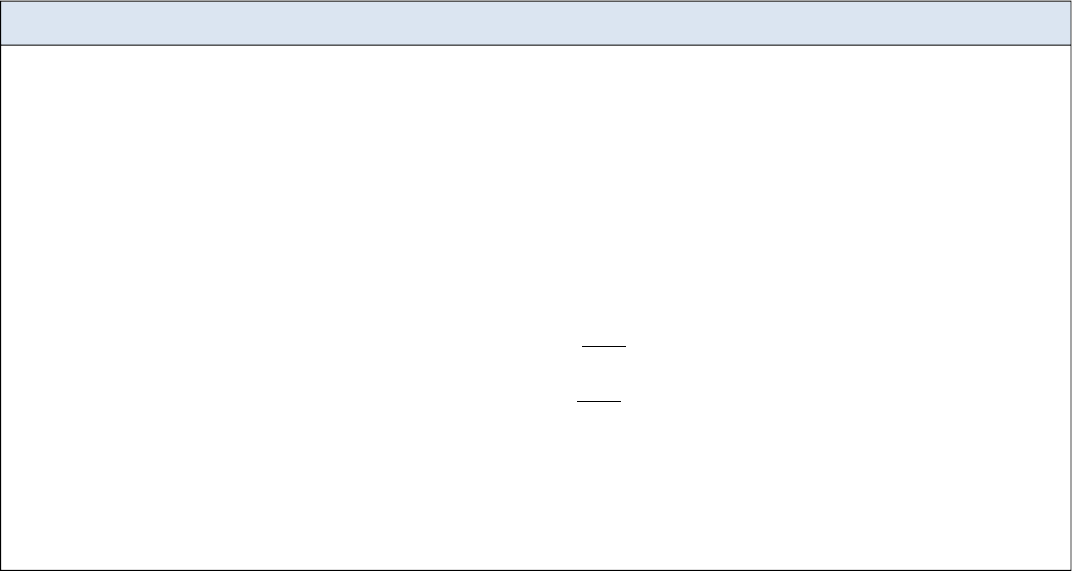
28
identifying the basis for inadequate performance on an ATI exam as well as reflecting on
personal study habits, test-taking and time management skills, and management of test anxiety.
• Focused Review: After each ATI exam students visit the ATI website and access their
results. Topics to Review are identified. Students whose scores are below a designated
threshold are required to devote a specified amount of time to Focused Review of topics
that need review.
• Remediation: Additionally, students whose scores are below a designated threshold are
required to complete a specified number of additional learning activities (e.g., Active
Learning Templates) to strengthen their knowledge of topics they reviewed.
Comprehensive Predictor Exam
The Comprehensive Predictor Exam is administered in the final term of the program. This 180-
item test offers an assessment of the student’s comprehension and mastery of basic principles
including fundamentals of nursing; pharmacology; medical-surgical nursing; maternal newborn
nursing; mental health nursing; nursing care of children; leadership and community health
nursing. The percentage of questions on the Comprehensive Predictor Exam from all major
NCLEX-RN® client need categories (i.e., safe and effective care environment, health promotion
and maintenance, psychosocial integrity, and physiological integrity) will be similar to the
percentage of questions on the NCLEX-RN®. The student has 180 minutes (3 hours) to
complete this assessment. The Comprehensive Predictor Exam Score is linked to the probability
of passing the NCLEX-RN exam as described in scoring documents published by ATI. Thus, it
gives useful information to students and faculty about students’ mastery of core nursing
knowledge.
Non-Proctored and Proctored Assessment Administration, Remediation, and Scoring
Content-Area-Specific Practice (Non-Proctored) Assessments & Remediation
1. Complete four (4) practice assessments distributed across the term, including Practice
Assessment A, Practice Assessment B, and two (2) additional practice quizzes/tutorials as
assigned in the course.
a. Students must achieve at least 96% on each practice assessment.
b. Students will have one week and unlimited attempts within that week to achieve that
score, but with a 24-hour “lock-out” period between attempts.
2. Complete Remediation (Active Learning) for both Practice Assessment A and Practice
Assessment B if a score of less than 96% is achieved on the first take of the Assessment. For
each Practice Assessment for which remediation is required students must:
• complete at least one hour of Focused Review for each of the three (3) lowest subscale score
identified in the Individual Performance Plan.
• submit at least one Active Learning Template for each of the three lowest subscale scores identified
in the Individual Performance Plan.
NOTE 1: Students must submit remediation only once if a score of less than 96% is achieved on the
first take of the Assessment.
NOTE 2: If the student scores less than 96% on the first take because of missing just one or two
topics in the Assessment, then he/she only needs to remediate on those one or two topics.
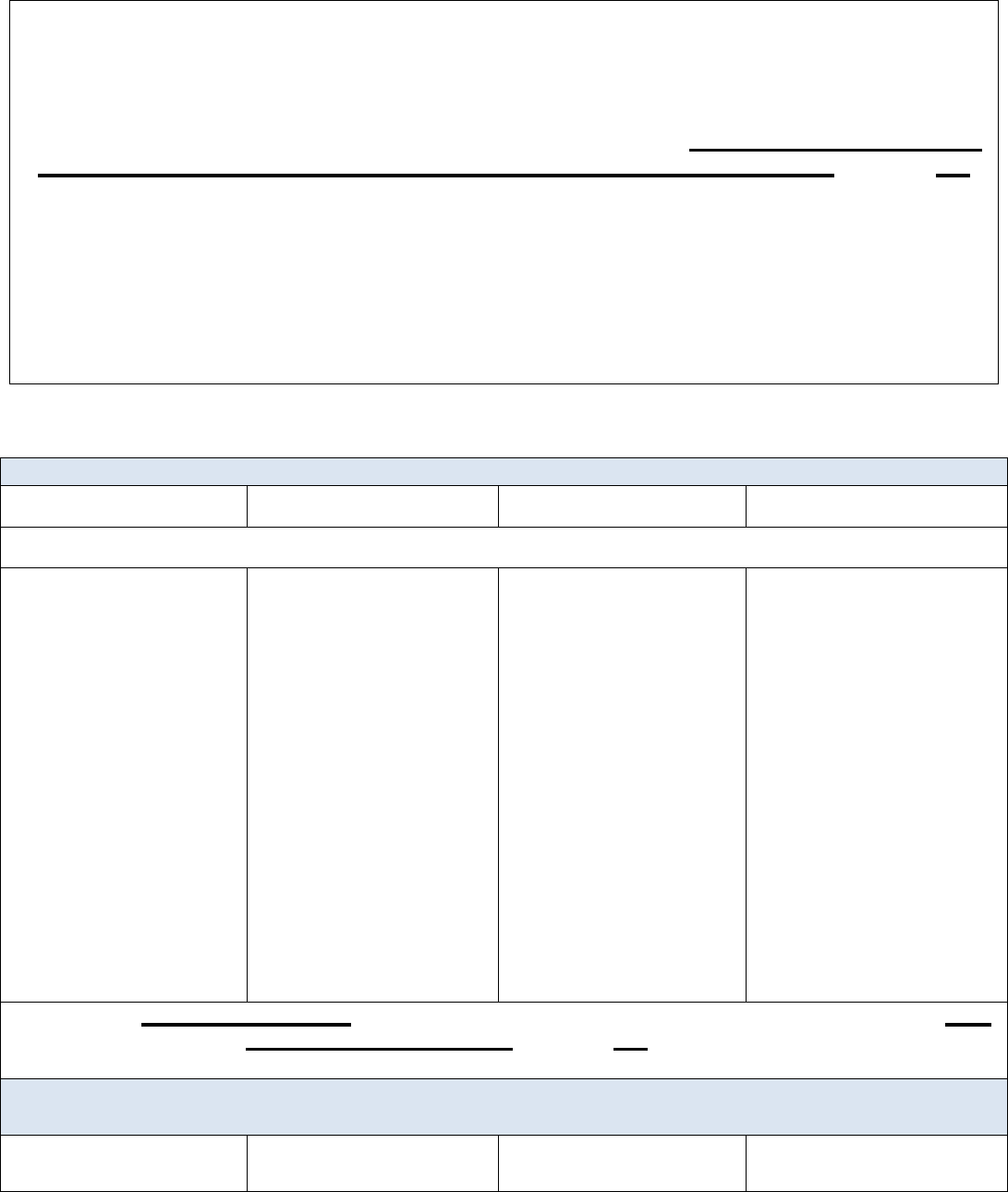
29
Content-Area-Specific Proctored Assessment & Remediation
Level 3 = 8 pts.
Level 2 = 7 pts.
Level 1 = 0 pts
Below Level 1 = 0 pts.
Remediation After Proctored Assessment
No remediation required
No remediation required
1. Complete
Remediation
(Active learning)
● 3-hour
Focused
Review
● Submit at least
three Active
Learning Templates
on at least the three
lowest subscale
scores identified in
your Focused
Review
1. Complete
Remediation (Active
learning)
● 4-hour
Focused
Review
● Submit at least three
Active Learning
Templates on at least
the three lowest
subscale scores
identified in your
Focused Review
Remediation required to
earn any ATI points.
Remediation required to
earn any ATI points.
Satisfactory. Remediation activities for Proctored Assessment scores of Level 1 and Below Level 1 must
be completed and submitted to receive any ATI points.
Proctored Assessment Retake
No Retake
No Retake
Retake Mandatory
Retake Mandatory
A total of 2 points may be earned for successful completion of practice assessments. One half (0.5)
point may be earned for each of the four (4) assessments that the student submits on time with a 96%
or higher score.
No points are earned for completing required Remediation. However, Remediation activities for both
Practice Assessment A and Practice Assessment B must be completed and submitted to receive any
ATI points.
All practice assessments and all Remediation activities must be completed and submitted in order for
a student to be permitted to take the associated Content-Area-Specific Proctored Assessment. Lead
faculty in courses in which Content-Area-Specific Proctored Assessments are given must notify the
ATI Proctor of any student who has not completed required practice and remediation activities and
thus is NOT approved to take the Proctored Assessment and/or the Proctored Assessment Re-take.
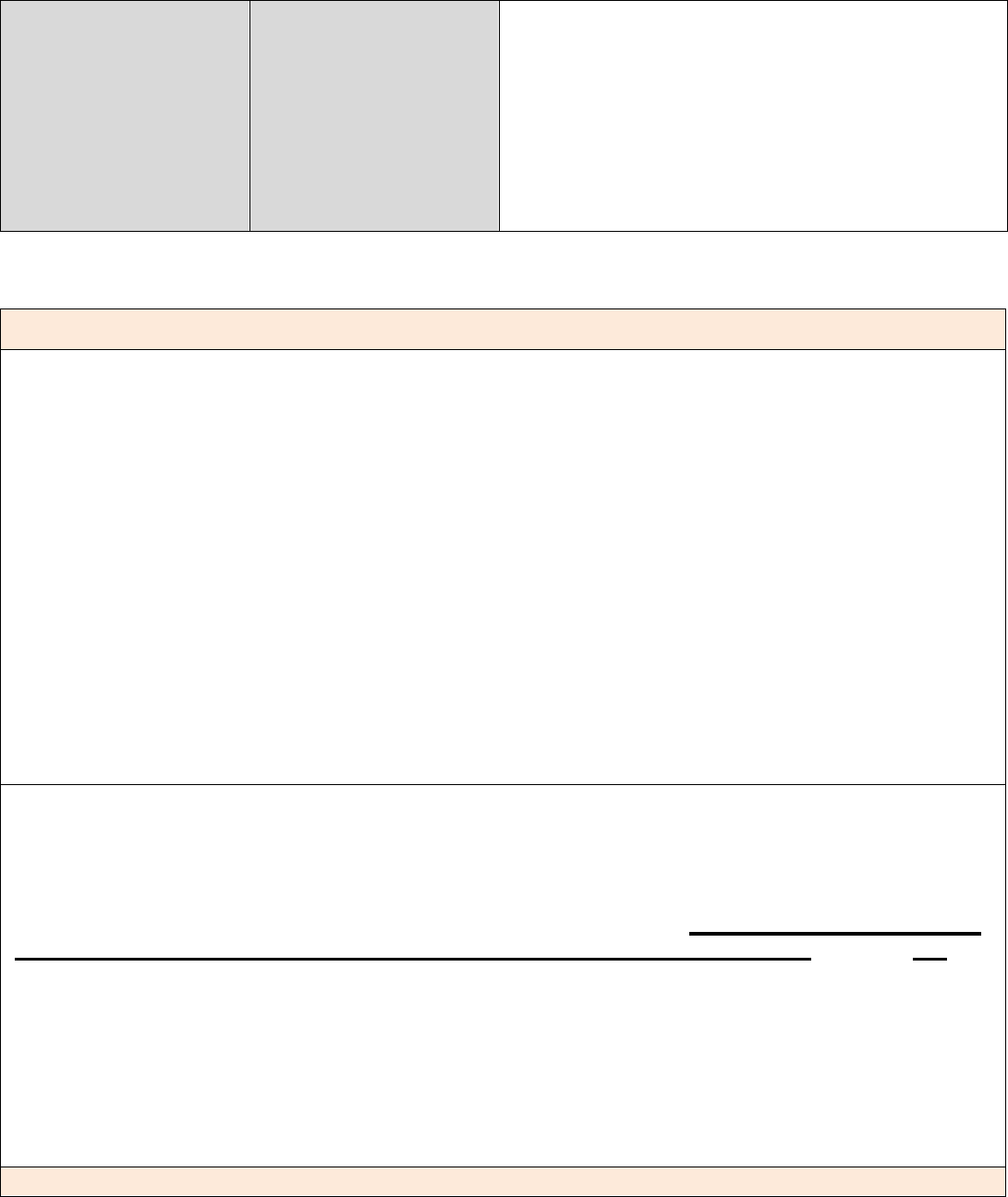
30
Students scoring Level 3 on the mandatory
Proctored Assessment Retake will earn 4 pts.
Students scoring Level 2 on the mandatory
Proctored Assessment Retake will earn 3.5 points.
Students scoring Level 1 or Below Level 1 on the
mandatory Proctored Assessment Retake will earn
0 points.
Comprehensive Predictor Practice (Non-Proctored) Assessments & Remediation
1. Complete Practice Comp. Predictor Assessment A and Practice Comprehensive Predictor
Assessment B at assigned times across the term.
a. Students must achieve at least 96% on each practice assessment.
b. Students will have one week and unlimited attempts within that week to achieve that
score, but with a 24-hour “lock-out” period between attempts
2. Complete Remediation (Active Learning) for both Practice Assessment A and Practice Assessment
B if a score of less than 96% is achieved on the first take of the Assessment. For each Practice
Assessment for which remediation is required students must:
• complete at least one hour of Focused Review for each of the three (3) lowest subscale scores
identified in the Individual Performance Plan.
• submit at least one Active Learning Template for each of the three lowest subscale scores identified
in the Individual Performance Plan.
NOTE 1: Students must submit remediation only once if a score of less than 96% is achieved on the
first take of the Assessment.
NOTE 2: If the student scores less than 96% on the first take because of missing just one or two topics
in the Assessment, then he/she only needs to remediate on those one or two topics.
A total of 2 points may be earned for successful completion of practice assessments. One (1) point may
be earned for each of the practice assessments that the student submits on time with a 96% or higher
score.
No points are earned for completing required Remediation. However, Remediation activities for both
Practice Assessment A and Practice Assessment B must be completed and submitted to receive any ATI
points.
All practice assessments and all Remediation activities must be completed and submitted in order for a
student to be permitted to take the Comprehensive Predictor Proctored Assessment. Lead faculty in the
course in which the Comprehensive Predictor Proctored Assessment is given must notify the ATI
Proctor of any student who has not completed required practice and remediation activities and thus is
NOT approved to take the Proctored Assessment and/or the Proctored Assessment Re-take.
Comprehensive Predictor Proctored Assessment & Remediation
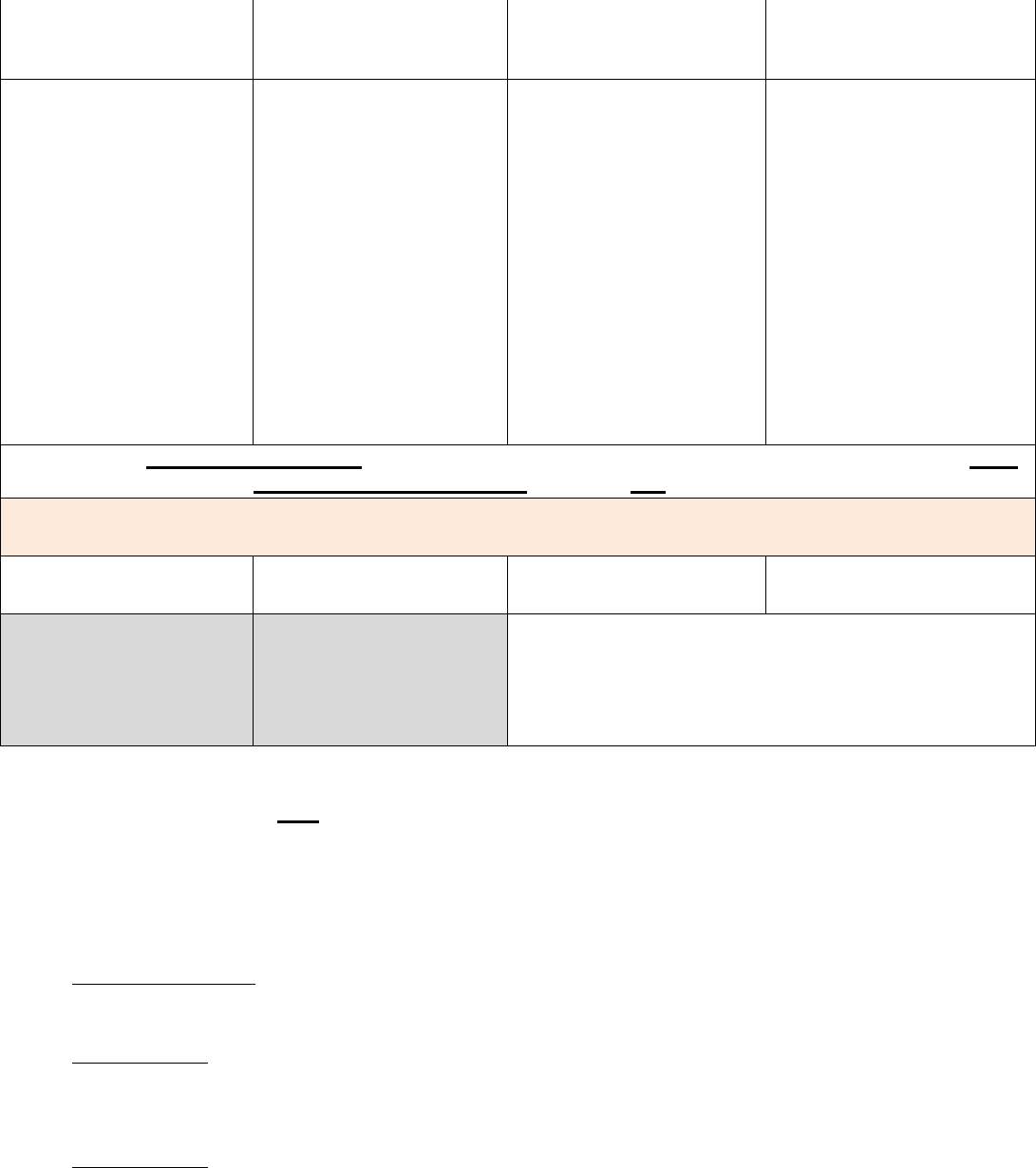
31
95% or above
Passing predictability
8 pts
90 to 94% Passing
predictability
7 pts.
85 to 89%
Passing predictability
0 pts
84% or below
Passing predictability
0 pt
No Remediation
required
No remediation required
1. Complete
Remediation
● 3-hour
Focused
Review
● Submit at least
three Active
Learning
Templates on at
least the three
lowest subscale
scores identified
in your Focused
Review
1. Complete
Remediation
● 4-hour
Focused
Review
● Submit at least
three Active
Learning
Templates on at
least the three
lowest subscale
scores identified
in your Focused
Review
Satisfactory. Remediation activities for Proctored Assessment scores of Level 1 and Below Level 1 must
be completed and submitted to receive any ATI points.
Proctored Comprehensive Predictor Retake
No Retake
No Retake
Retake Mandatory
Retake Mandatory
Students scoring 95% or higher on the mandatory
Retake will earn 4 points.
Students scoring 90% or higher on the mandatory
Retake will earn 3.5 points.
NOTE: All ATI points will be imputed in the grade book one time at the end of the term
and will be recorded only after the student submits a copy of their ATI Transcript with all
ATI assignments recorded and highlighted.
Sequence of ATI Integrated Competency Assessments in the Prelicensure BSN
Curriculum
Sophomore 2 Term:
Critical Thinking Entrance Exam (ungraded) Term 1 Week 2
Junior 1 Term:
Fundamentals Assessment in Adults & Older Adults I (taught in terms 1 & 2, tested in term 2)
Term 2 Week 15 (NURS 3221)
Junior 2 Term:
Nursing Care of Children Assessment in NURS 3633 Infants, Children, & Family (taught in term
3, tested in term 3) Term 3 Week 15 (NURS 3633)
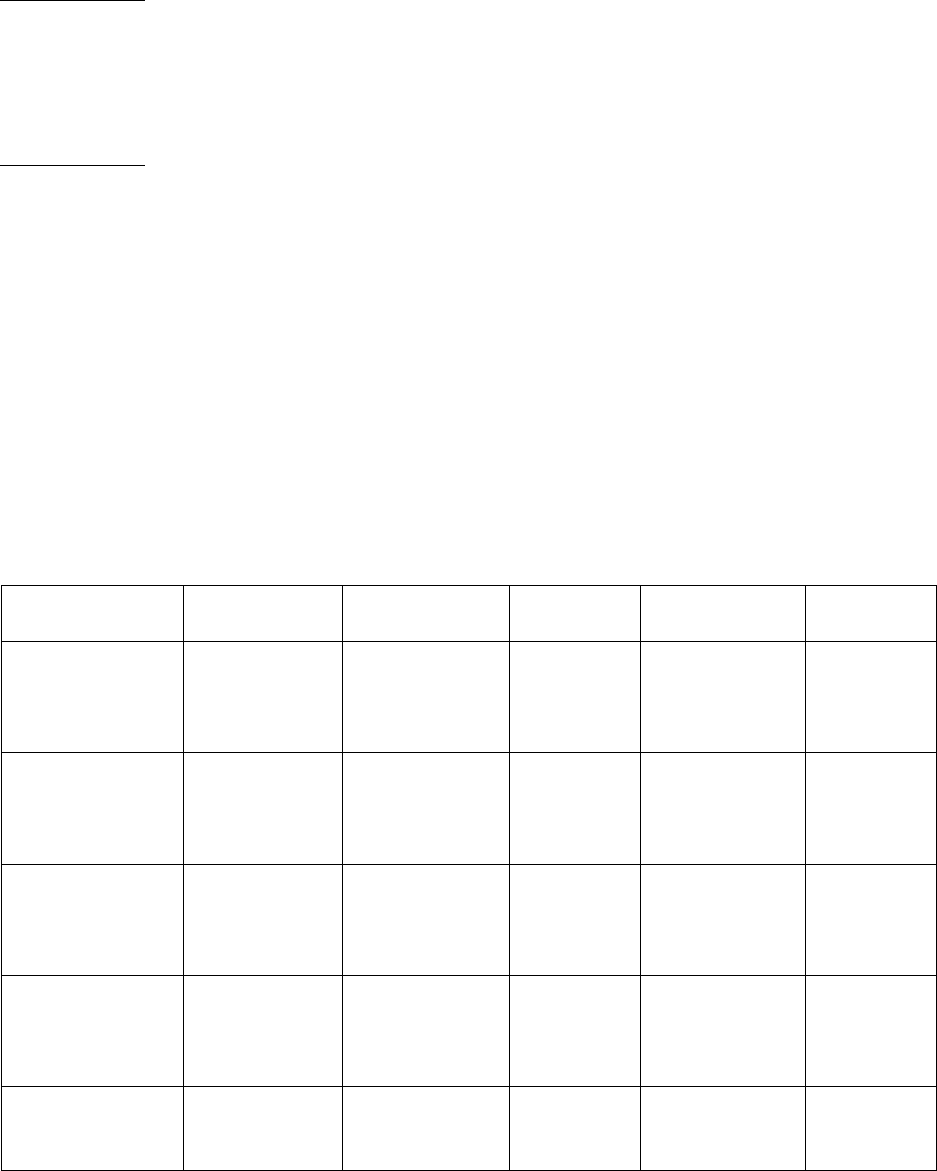
32
Maternal / Child Assessment in NURS 3635 Women, Infants, & Family (taught in term 3, tested
in term 3) Term 3 Week 14 (NURS 3635)
Senior 1 Term:
Mental Health Assessment in NURS 4415 Psych/MH (taught in term 4, tested in term 4)
Term 4 Week 14 (NURS 4415)
Community Health Nursing Assessment in NURS 4417 Comm/PH (taught in term 4, tested in
term 4) Term 4 Week 15 (NURS 4417)
Senior 2 Term:
Medical-Surgical Nursing Assessment in NURS 4833 Adults & Older Adults II (taught in terms
5 tested in term 5) Term 5 Week 14 (NURS 4833)
Leadership Assessment in NURS 4840 Leadership (taught in term 5, tested in term 5)
Term 5 Week 13 (NURS 4840)
Pharmacology Assessment in NURS 4920 Integration, as Midterm Exam (introduced in term 2,
reinforced terms 2-5, tested in term 5) Term 5 Week 6 (NURS 4920)
Comprehensive Predictor Assessment in NURS 4920 Integration, as Final Exam
(tested in term 5) Term 5 Week 15 (NURS 4920)
Critical Thinking Exit Exam (ungraded) Term 5 Week 15
Approved by Faculty Organization 5.12.17; revised 2.28.19, Effective Spring 2019
Selected Graded Practice Quizzes for Each Graded Proctored Exam
Proctored
Exam
Course/Term
Practice #1
Practice
#2
Practice #3
Practice
#4
Fundamentals
NURS 3221,
Term 2
LS RN 3.0,
Practice
Fundamentals
2
Most
Recent
Practice A
LS RN 3.0,
Final
Fundamentals
Most
Recent
Practice B
Maternal-
Newborn
NURS 3635,
Term 3
LS RN 3.0,
Practice
Maternal
Newborn 2
Most
Recent
Practice A
LS RN 3.0,
Final Maternal
Newborn
Most
Recent
Practice B
Nursing Care
of Children
NURS 3633,
Term 3
LS RN 3.0,
Practice Nsg
Care of
Children 2
Most
Recent
Practice A
LS RN 3.0,
Final Nsg
Care of
Children
Most
Recent
Practice B
Mental Health
NURS 4415,
Term 4
LS RN 3.0,
Practice
Mental Health
2
Most
Recent
Practice A
LS RN 3.0,
Final Mental
Health
Most
Recent
Practice B
Medical-
Surgical
Nursing
NURS 4833,
Term 5
LS RN 3.0,
Practice
Most
Recent
Practice A
LS RN 3.0,
Practice
Respiratory
Most
Recent
Practice B
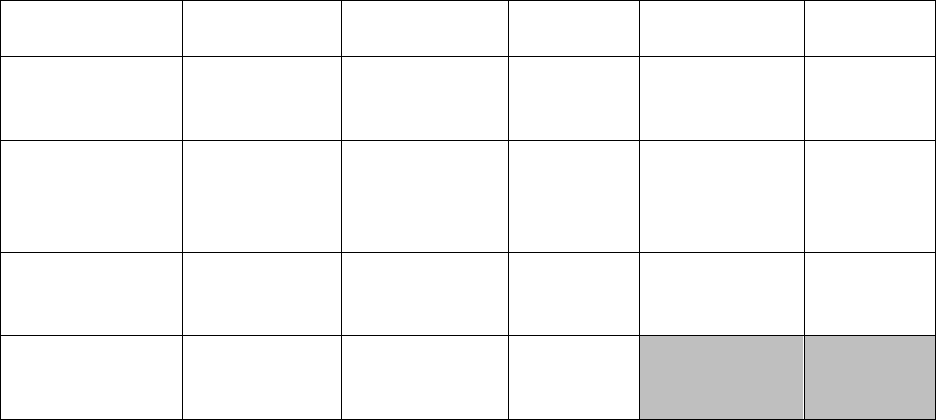
33
Cardiovascular
& Hematology
Pharmacology
NURS 4920,
Term 5
LS RN 3.0,
Practice
Pharmacology
Most
Recent
Practice A
LS RN 3.0,
Final
Pharmacology
Most
Recent
Practice B
Community
Health Nursing
NURS 4417,
Term 4
LS RN 3.0,
Practice
Community
Health
Most
Recent
Practice A
LS RN 3.0,
Final
Community
Health
Most
Recent
Practice B
Leadership
and
Management
NURS 4840,
Term 5
LS RN 3.0,
Practice
Leadership
Most
Recent
Practice A
LS RN 3.0,
Final
Leadership
Most
Recent
Practice B
Comprehensive
Predictor
NURS 4920,
Term 5
Most Recent
Practice A
Most
Recent
Practice B
NA
NA
Approved by Faculty Organization 9.29.17; revised 2.28.19, Effective Spring 2019
Instructional Strategies To Be Used by Course Faculty in Courses With Integrated
Containing Competency Assessments, to Promote Student Success on Proctored
Assessments:
● Orient students to the ATI products, including (a) how to create their student accounts;
(b) how to access products; (c) how to use the products; (d) how to independently select
and take practice assessments and tutorials; (e) how to find and interpret their Individual
Performance Profiles; and (f) how to locate and complete Active Learning Templates.
● During class sessions:
o Refer to content in ATI review books.
o Use ATI practice questions from review books and practice assessments/ tutorials.
o Make explicit the pertinent priority-setting framework that applies to the practice
questions used.
o Demonstrate how to read and interpret questions.
o Demonstrate how to look for patterns in and characteristics of available responses.
o Suggest additional practice assessments that pertain to current lessons that
students can take independently.
o Share group assessment results with students, identifying areas in which the class
as a whole scored lower than 80% and stressing Topics to Review for the group.
● On teacher-made exams, include a few ATI practice assessment items.
● At the end of every course:
o Use the groups/cohort’s proctored assessment scores to identify gaps in course
content and make recommendations to the undergraduate Curriculum Committee
re: potential adjustments to course content.
o Send an email to the faculty member teaching the next theory course to the
group/cohort, briefly describing the content areas (especially the Client Need
categories as used on the NCLEX-RN) on which the group/cohort achieved low
scores on the proctored assessment. This will enable the next instructor to
continue to reinforce those content areas with the students.
Approved Faculty Organization 6.9.17; Revised Faculty Org 5.17.19

34
DON Pre-licensure Program Credit by Examination Policy
For publication in the DON BSN Program Nursing Student Handbook
Background:
California State University (CSU) San Bernardino (CSUSB) Department of Nursing
(DON) complies with the California Board of Registered Nursing (BRN), CSU and
CSUSB regulations and policies for awarding of credit for previous education or other
acquired knowledge, including military education and experience.
For information, these are the California BRN regulations on previous learning: CCR 1430
Previous Credit , CCR 1426 Required Curriculum (d)(1) ,
CCR 1423.1 Grounds for Denial or Removal of Board Approval CCR 1424,
Administration and Organization of the Nursing Program (b)(3 A&B)(4)
CSU Systemwide Policy, EO-1036 is linked here. The CSUSB Academic Regulations and
Standards pertaining to credit by examination are linked here.
CSUSB DON policy allows the awarding of course credit for previous education or
other acquired knowledge, including military education and experience. This practice applies
to all students including those who have
served or are serving in the United States Armed Forces.
Applicants for credit by examination will be held to all existing BSN program
requirements, including admission requirements, prerequisite courses, supporting courses,
courses in the major, and graduation requirements.
Credit may be earned by examination for course in the BSN program. Examples of courses are
listed below. Cognitive, affective, and psychomotor knowledge and skills within the course
will be included in the examination. Thus, depending upon the course to be challenged under
the Credit by Examination policy, the examination may be written and/or involve
demonstration of practical skills.
⧫ NURS 2821 Foundational Theory and Skills – Theory & Clinical
⧫ NURS 3016 Health Assessment – Theory & Clinical
⧫ NURS 3080 Pathophysiological Concepts – Theory course
⧫ NURS 3082 Pharmacology and Therapeutics– Theory course
Credit by Examination Process, Timeline, and Documentation:
If an admitted student thinks he/she has previous education or other acquired knowledge
for which CSUSB credit by examination may be awarded, the following process must
be followed.
Admitted and enrolled (matriculated) students, within 4 weeks of acceptance into the
35
BSN program, must notify the Undergraduate Program Director in writing (email is
acceptable) of his/her request to seek course credit for previous education or other acquired
knowledge. The student must specify the course for which course credit by examination
is sought.
The Program Director will notify the student of required materials that must be
submitted, including documents and other evidence of previous education and/or other
acquired knowledge. The Program Director will also notify the students of required
meetings with DON representatives such as the Program Director and academic advisor.
The student must submit required materials, documents, and evidence to the Program Directo
r within 6 weeks of acceptance to the program.
The Program Director or designee will review submitted materials and
make a determination as to whether the student is eligible to pursue credit by examination
. The student will be notified of the determination within 2 weeks of receipt of the above
materials by the DON. The Program Director will arrange for students who are eligible to
pursue credit by examination to complete the required examinations/competencies for each
course being challenged under the Credit by Examination policy. Written and skills
performance examinations/competencies will be the same as those taken by students enrolled
in the course being challenged. The student will be given information relevant to pertinent
course syllabi, learning outcomes, textbooks, and reading assignments. The student will be
informed as to the nature and topics of examinations, whether theory (written) or practical
(e.g., psychomotor, cognitive, and/or affective skill demonstration).
The challenge examinations and/or competencies must be completed within the first 2 weeks
of the academic term.
The Program Director will review the outcomes of a student’s
examinations/competencies within 1 week of their completion and determine whether
course credit will be awarded or cannot be awarded based on the student’s ability or
failure to demonstrate knowledge/competency. The Program Director or designee will
notify the student of the decision, in writing, within 4 weeks. The student’s individual
educational plan will reflect adjustments made in response to the awarding of credit by
examination.
Appendix A contains the Credit by Examination Documentation form that will be placed in
the student’s DON academic file.
Revised and FO Approved 4/28/2023
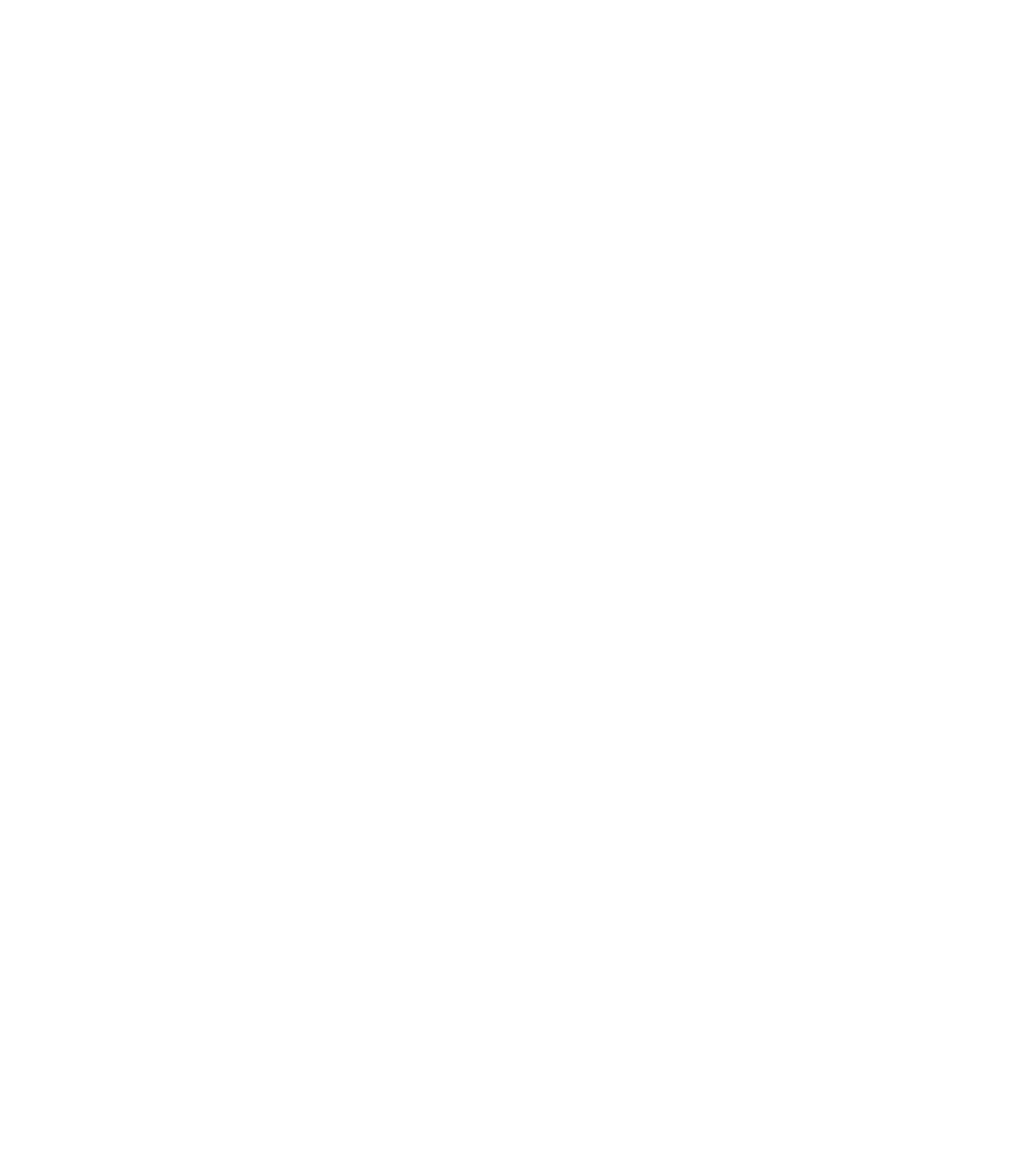
36
Appendix A
CSUSB Department of Nursing
Credit by Examination Documentation Form
1. Matriculated (enrolled) student notifies the Department of Nursing within 4 weeks of
acceptance into the BSN program of his/her request to seek course credit for previous
education or other acquired knowledge, including military education and experience and
specifies course(s).
____ Yes ___ No Program Director Signature and Date ________________________
2. Student provides materials, documents, and evidence for consideration for a specified
course(s) within 6 weeks of acceptance into the program.
____ Yes ___ No Program Director Signature and Date ________________________
3. The student adheres to the timelines noted in 1 and 2 above for consideration of request.
____ Yes ___ No (if no, the request is denied and the student is notified)
Program Director Signature and Date ____________________________________
4. Student meets with undergraduate nursing advisor or designee as requested.
____ Yes ___ No Program Director Signature and Date ________________________
5. The Program Director or designee reviews the materials, documents and evidence within 2
weeks of receipt of materials to the department and makes one of the following
determinations:
___ Documentation requesting consideration for course credit by examination/competency
is appropriate and complete. (Attach documentation to this form and place in student file)
___ Documentation requesting consideration for course credit by examination is
inappropriate and/or insufficient to establish eligibility to sit for credit by
examination/competency. (Comment below with rationale for denial of the request)
Comments:
Program Director Signature and Date ____________________________________
37
6. The Program Director arranges for the student to complete examination(s) demonstrating
knowledge and/or skill competence specific to the course(s) being challenged. The
examination(s) must be completed within the first 2 weeks of the term
____ Yes ___ No Program Director Signature and Date ________________________
7. The Program Director or designee reviews the outcomes of the student’s examinations
competencies, as well as other submitted materials and evidence, within 1 week of
completion, and makes one of the following determinations and places documentation in
student file.
___ Course credit is awarded
___ Course credit cannot be awarded based on failure to demonstrate knowledge/competency
Comments:
Program Director Signature and Date ____________________________________
8. Student is notified by the undergraduate advisor or designee of the decision within 4 weeks of
the Program Director’s decision. If a “cannot award credit” decision is made, the letter of
notification will indicate the rationale behind the decision.
____ Yes ___ No Program Director Signature and Date ___________________________
Revised and FO Approved 4/28/2023
38
Academic Attendance
The Attendance Policy for the DON reflects professionalism and is in compliance with the
California Board of Registered Nursing Total Curriculum Plan and pertains to both
Clinical and Theory. The Board of Registered Nursing provides guidelines for required
theory and clinical hours attended by the pre-licensure nursing student in order to be
granted NCLEX-RN candidacy.
Students are expected to attend and complete all theory and clinical hours.
Students are required to attend orientation.
Students are expected to arrive on time, be present, and participate in learning in theory and
clinical courses.
Lecture Attendance
1) Students are expected to attend and complete all theory courses.
2) Students are responsible for all information covered in lectures. Specific details are
set by the instructor and stated in the course syllabus.
3) In the event of illness or crisis that will cause absence or tardiness, the lecturing
instructor must be notified by voice message on that instructor’s cell phone. Students
must notify instructors two hours before the scheduled time of class or clinical if they
will be absent. Sending word with another student instead of contacting the instructor
is not acceptable.
4) Students who foresee a prolonged absence must meet with the Department Chair/ Chief
Nurse Administrator or Undergraduate Program Director to discuss possible options
(i.e., leave of absence, drop, or withdrawal from the program). Procedures for these are
found in the CSUSB Bulletin of Courses.
5) In the event of online class via Zoom, the students are required to have their webcams
turned on for both theory and clinical sessions. Students whose SSD accommodations
in any way prohibit webcam use will need appropriate documentation in order to
deviate from the requirement.
Make-Up Lecture
1) Individual instructors may require make-up for missed lectures.
2) It is the student’s responsibility to make-up for missed lecture content.
39
Examinations
Students are expected to be present and to arrive on time for all examinations. If a
student is going to be late or absent from a scheduled exam, the instructor must be
notified prior to the scheduled exam and request approval to make-up the exam.
Approval to make-up an exam ordinarily should be rare and only for an unavoidable
serious reason. Ordinarily, travel and/or attendance at an outside employer event is
not an unavoidable serious reason. Approval is at the discretion of the faculty member
in collaboration with the Department Chair and/or undergraduate program director.
If a student misses an exam and has called in to report the absence and was granted
permission to make-up the exam, the student must take the exam on the first day back
to campus. However, if the student does not call in the absence, he/she will not be
permitted to take the exam and the score for that exam will be recorded as a zero.
Extenuating circumstances causing absences will be evaluated on an individual basis
by the faculty teaching that course in consultation with the Department Chair and
undergraduate program director.
Absences
All absences and tardiness must be discussed with the instructor. This must be done prior to
the absence or tardiness unless a critical safety issue prevents it. Failure to report (no
call/no show) will be reported to the Program Director and Department Chair and is
grounds for dismissal.
Excused Absence
An excused absence is defined as:"
⧫ Student illness or critical illness/death in the immediate family- only
illnesses or injuries (with physician documentation) that prohibit students
from participating in class/clinical are excused. Immediate family is defined
as spouse/life partner, child, parent, spouse/life partner’s parent, legal
guardian, sibling, grandparent or grandchild.
⧫ Short-Term Military Obligation
⧫ Jury Duty or Subpoena for Court Appearance- students should make
arrangements to postpone or schedule all court activities during times that do
not conflict with nursing classes and clinical activities. Documentation for
court may be obtained upon request from the department office.
⧫ An excused clinical/lab absence must be made up."
Unexcused Absence
⧫ An unexcused absence is anything that does not meet the qualifications above. "
If the absence is not excused, the student is subject to disciplinary actions
and must meet with the instructor of the course, and the Department Chair
and/or undergraduate program director."
⧫ The student must meet with the faculty member to write a SPS, assisting students
to ensure compliance with attendance policy.
⧫ Students are expected to schedule employment interviews and orientation outside
of class and clinicals.
⧫ Students are advised to explain to employers that it is unprofessional not to meet
academic requirements.
40
All absences will not be excused until the student provides documentation and the student
must have notified the instructor a minimum of two hours before the absence.
If a student leaves theory/clinical class early, the student will be counted absent for that day.
⧫ After one (1) absence in theory or clinical, the student is expected to meet
with the faculty member, will receive a SPS, describing plan(s) for a make-up,
and be required to complete a make-up day/"
⧫ Two (2) absences in theory and clinical combined are considered excessive.
The student will meet with the Chief Nurse Administrator/Department Chair
and/or the Undergraduate Program Director to determine the student’s
eligibility to remain in the program."
Clinical Tardiness
Clinical nurses and faculty expect students to be on time and ready to receive reports. Students
who are tardy must meet with the clinical instructor to write a SPS, assisting students to ensure
compliance with attendance policy.
● First Tardy
o Students tardy within thirty (30) minutes of expected arrival will constitute a
modification of clinical assignment (non-RN role).
o A tardy of more than thirty (30) minutes will be counted as an absence without
any remediation and will constitute a modification of clinical assignment (non-RN
role).
● Second Tardy
o Students tardy within thirty (30) minutes of expected arrival will constitute a
modification of clinical assignment (non-RN role) AND results in one absence
without any remediation.
o A tardy of more than thirty (30) minutes will be counted as an absence
resulting in a second absence and failure of course.
● Third Tardy
o Results in failure of course
● Students are required to meet with clinical faculty and arrange for making up the
hours at the skills lab if applicable.
Lecture Tardiness
● Two (2) tardy occurrences in theory will be counted as one (1) absence.
● Students who are tardy must meet with the lecturing instructor to write a SPS, assisting
students to ensure compliance with attendance policy.
41
Clinical Attendance
Clinical attendance is required for successful completion of the nursing program. All clinical
hours must be completed.
Failure to complete the required number of clinical hours and/or experiences may result in
failure of a course and/or ability to progress in the program. If a student is required to repeat a
course due to absences or inability to complete the required number of clinical hours and/or
experiences, the student will be required to wait until space is available in the next offering of
the class. This means the student may have to wait one or more terms to continue in the
nursing program as successful completion of the current clinical courses is usually a
prerequisite for enrolling in the next semester’s clinical coursework. All changes or
modifications in a student’s curriculum sequence and/or continuation in the nursing program
will require approval by the faculty and Department Chair and/or Undergraduate Program
Director.
Process for Clinical/Lab Absence
1) It is the responsibility of the student to find out the date, time, and place of the initial clinical
lab. This information can be acquired by checking on myCoyote. Faculty may also send an
email with the information to the students’ campus email address or post the information on
the course CSUSB LMS.
2) Students are required to attend all lab and clinical experiences by arriving on time and
attending the entire experience. In the event of illness or crisis that will cause absence or
tardiness, students must notify the clinical instructor at least 2 (two) hours before the clinical
experience begins. If the instructor cannot be reached, the student should leave a voice
message on that instructor’s cell phone and contact the Nursing Department support staff to
report the absence.
3) Students should refer to the individual instructor for additional instructions regarding
reporting of absences/tardiness as each clinical agency has its clinical requirements that must
be met. Sending a message with another student instead of contacting the instructor is not
acceptable. Failure to notify the instructor of an absence or tardiness in advance is considered
an “unexcused absence”. A second occurrence of an “unexcused absence” within the term
will lead to immediate failure of the current course and may lead to termination of
participation in the Nursing program upon evaluation of the student by the Department Chair
and/or Program Director.
4) A student with two (2) absences or three (3) tardy occurrences that cause the student to not
achieve the core competencies needed to pass the course will be required to drop/withdraw
or will fail the course. If eligible, the student will need to reapply to the Nursing Program.
(Refer to the Readmission to the Nursing Program Policy).
5) There are no make-up provisions for unexcused absences at hospital or on/off site clinical
experiences.
42
6) When a clinical absence causes a student to be unable to complete a required assignment or
not achieve a clinical competence, the student will receive an “F” for the missed assignment
or unachieved clinical competence. Depending upon the impact of the assignment or
competency, this may cause the student to fail the course.
7) Regardless of the reason, a student with absences or tardiness that cause the student to not
achieve the clinical course’s core competencies will fail the clinical course. The student will
need to reapply to the Nursing Program. (Refer to the Readmission to the Nursing Program
Policy).
8) If a student’s absence or tardiness causes the student to miss information needed to safely
practice in the clinical facility (i.e., orientation), that student must drop/withdraw from the
clinical course. The student will need to reapply to the Nursing Program. (Refer to the
Readmission to the Nursing Program Policy).
9) The clinical instructor will notify the lead instructor. The unexcused absence/tardiness
must be documented in the student’s file and attendance record maintained by the
Compliance Coordinator.
10) Students who foresee a prolonged absence (due to a significant illness or military
commitment) must meet with the Chair/Program Director to discuss possible options
(i.e. leave of absence, drop, or withdrawal from the program). Procedures for these
are found in the CSUSB Bulletin of Courses.
Readmission to the Nursing Program
Students must attain grades of “C” or better in all “NURS” courses required for the nursing
major in order to progress in the program. Students who drop, withdraw, or fail a nursing
course may not progress in the nursing program until readmitted through the procedure
described below. Nursing courses in which students earn less than a “C”, (defined as
“failure” in this document) may be repeated for credit only once, and this repetition
requires both departmental consent and the appropriate university petition. If a student is
placed on academic probation by CSUSB, the student must meet university expectations
and be removed from academic probation to continue in the nursing program.
Students who are administratively dropped or who “failed” two (2) nursing courses (the same
course twice or two (2) different courses within one term {i.e. NURS 2602 and 2821} or two
(2) different courses in two (2) separate terms) during their nursing curriculum cannot apply
for readmission to the nursing program (defined as “dismissal” in this document). Exceptions
to this policy may be appealed to the Department Chair and the Admission Progression and
Recognition (APR). Considerations while very rare may be considered for extraordinary
reasons on an individual basis. A drop or withdrawal from a nursing course, with appropriate
documentation described in the CSUSB “Bulletin of Courses”, will not be counted toward
“dismissal”, which is described above.
43
When a student is dropping, withdrawing, is administratively dropped, or has “failed” a
nursing course (as defined by the CSUSB bulletin of courses):
1) That student must meet with the assigned faculty advisor and the lead instructor of the
course at the time of the drop, withdrawal, or “failure” and complete all necessary
University documentation.
2) The student must meet with the Department Chair/Undergraduate Program Director to
request for readmission. A “Readmission Request Letter” must be received in the Nursing
Department office within two weeks following the final exam and/or one week posting of
the failing grade. The Department of Nursing may request the letter in advance of this date
if necessary to enable the decision of the APR committee. The office staff will “date stamp”
letters and compile a list of students for the Department of Nursing. The letter must include
an identification of barriers to successful completion of the course and actions to be taken to
mediate those barriers.
3) If the drop, withdrawal, or “failure” occurs after the above date, the student must
schedule an immediate meeting with the Department Chair / Chief Nurse
Administrator or Undergraduate Program Director and submit the “Readmission
Request Letter” in order to be considered for the consecutive term.
4) Upon review of the student's file (which may include faculty advising notes, skills check
off documentation, dosage calculation exam score, attendance, and “Readmission
Request Letter”); the Department of Nursing will determine if the student may be
readmitted to the Nursing program. Testing of skills/knowledge and other conditions
may be required and established for readmission, especially if the student has been out of
the program for greater than one (1) term. Costs for any testing will be the responsibility
of the student.
5) Students must meet all current compliance requirements at the time of reentry. If the
student discontinues or suspends participation in the Nursing program for any reason for
a period of time of one (1) term or greater (summer excluded), a background check and
drug screen will be required upon re-application/re-entry to the program.
6) A student may be excluded from readmission if documentation finds the student in
violation of the student handbook; disciplinary actions; or university policies.
7) Readmission is handled on a case-by-case basis due to limited clinical space.
8) Students will be required to follow the course sequence of the cohort into which they are readmitted.
Changes to the course sequence must be approved by the Department Chair.
9) Any student who must drop/withdraw for Military service will be given priority during the
readmission process. See https://catalog.csusb.edu/
10) The DON will notify the competency assessment program (i.e. ATI) coordinator of students departing
and starting in cohort.
11) It is highly recommended that the student visits their instructor and/or advisor for analysis of their
performance and that the student visit support services outside of the Nursing Department (testing
center, CARE Team, counselor, financial aid) for assistance.
12) Failure to adhere to program policies such as privacy violation and deviation from safety procedures
may be subject to disciplinary action including suspension and dismissal from the program after
consultation with Assistant Directors, Program Director, and/or involved faculty and staff.
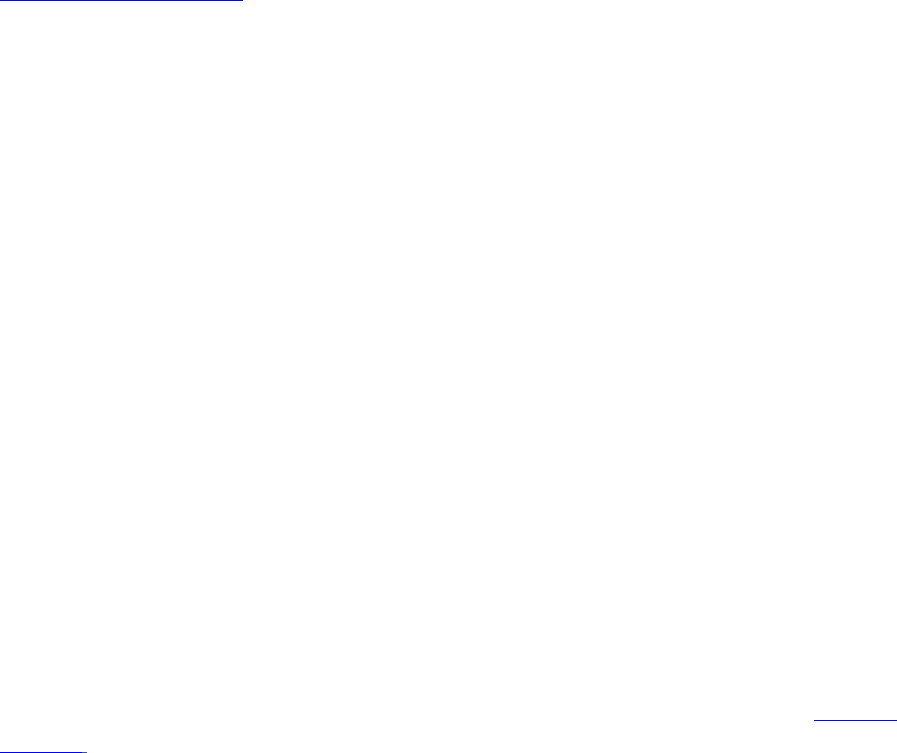
44
University Process for Leave of Absence
Degree seeking undergraduate students who plan to be absent from the university for more
than two consecutive terms must file a leave of absence to preserve their current catalog
rights (Title 5, Article 5, See. 40401). A petition, available through the Office of Advising
and Academic Services, must be filed and approved. In most instances, with an approved
leave of absence, a student may be absent from the campus without losing rights to specific
degree requirements under an earlier catalog. Petitions for leaves of absence should be filed
in advance of the interruption in enrollment. Please refer to the Bulletin of Courses,
https://catalog.csusb.edu/, for further information.
The maximum duration for any leave is two calendar years although exceptions to the two-
year limit may be granted under extenuating circumstances. Leaves of absence will not be
approved for students who are:
⧫ Subject to disqualification or dismissal due to academic deficiencies or
disciplinary action.
⧫ Not completing any degree applicable course work.
⧫ Enrolling only in extension courses or those who are only auditing courses.
Students who do not return to CSUSB at the conclusion of their planned leaves and those
who enroll elsewhere without permission of the Office of Records, Registration and
Evaluations will be considered to have withdrawn from the university at the end of their
last term of regular enrollment. Please refer to the CSUSB Bulletin of Courses for further
information.
Academic Honesty
The faculty in the Department of Nursing (DON) are committed to the principle that ethical
conduct and professional integrity are of paramount importance for all students. Each student
shall maintain academic honesty in the conduct of their studies and other learning activities at
CSUSB. The integrity of this academic institution and the quality of the education provided
in its degree programs are based on the principle of academic honesty. Academic dishonesty
is an especially serious offense. Plagiarism, cheating, collusion, fabrication and purchasing or
accessing test banks are viewed as direct violations of the Student Code of Conduct, Code of
Conduct.
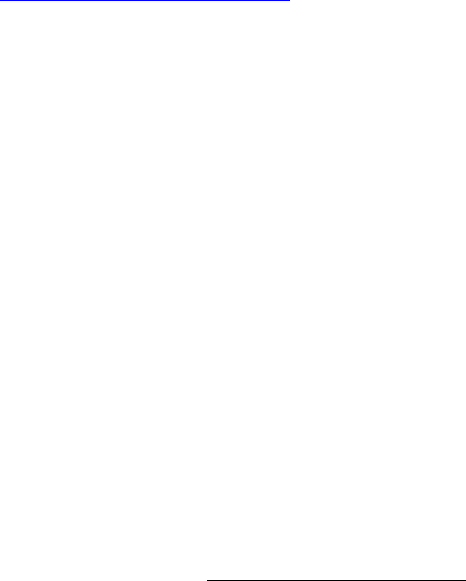
45
Academic Honesty Policy
Non-recommended Resources
Besides the Required and Recommended text(s) and other online resources noted in syllabi, the
Department of Nursing does not recommend the use of other unvetted learning, studying, and testing
resources found online. The DON can only recommend the use of resources such as ATI® and
Evolve® that have been prepared by subject matter experts and are written in alignment with the
NCLEX-RN blueprint. Unvetted and/or non-recommended resources (e.g., CourseHero®, Quizlet®,
Chegg®, and others), which may have incorrect/incomplete information that could negatively impact
a student’s knowledge, may violate copyright or intellectual property rules, and/or may subject the
student to disciplinary action for violation of academic integrity policies up to and including
suspension/expulsion from the program.
https://libguides.csusb.edu/nurs
Approved FO 4.16.2021; Effective Fall 2021
Plagiarism and Cheating
Nurses are recognized and respected for their integrity in caring for patients and all aspects of the
profession.
All nurses and nursing students are expected to uphold the highest levels of professionalism
including academic honesty as described in the ANA Code of Ethics for Nurses. As participants in a
community of learners nursing students are expected to hold themselves and others to the highest
levels of integrity and honesty.
If a student is aware of any actual or potential lack of integrity, professionalism, or academic
integrity the student is expected to report it to faculty and/or Department of Nursing leadership.
Any student who makes faculty aware of lack of integrity or other lack of professionalism will be
protected from harassment and bullying.
Plagiarism and cheating are violations of the Standards for Student Conduct (Title 5, §41301,
California Code of Regulations) and may be dealt with by the instructor, the department, and the
University Student Conduct Administrator.
Procedures for addressing cheating and plagiarism are found below. Questions about academic
dishonesty and the policy should be addressed to the University Office of Student Conduct and
Ethical Development (student-[email protected]) and the chair of the department of nursing.
Plagiarism is the act of presenting the ideas and writing of another as one's own.
Cheating is the act of obtaining or attempting to obtain credit for academic work through the use of
any dishonest, deceptive, or fraudulent means. Cheating includes but is not limited to:
● Obtaining, downloading, sharing, copying, discussing, and/or making public any part of a
previous exam or other assessment material or instructor and/or student intellectual property
46
without their permission. This applies to materials from within or external to the CSUSB
community.
● Copying, in part or in whole, from another's test, software, test bank or other evaluation
instrument.
● Submitting work previously submitted for credit in another course unless this has been
approved by the course instructor or by departmental policy. This is considered self-
plagiarism. Even when quoting a portion of one’s own work previously submitted for credit,
the student should cite their original work to acknowledge its re-use in work subsequently
submitted for credit.
● Submitting work simultaneously presented in two courses, unless this has been approved by
both course instructors or by the department policies of both departments;
● Submitting work (e.g., paper or other assignment) as one’s own original work that was
prepared by a surrogate writer or other service.
● Using or consulting during an examination sources or materials not authorized by the
instructor.
● Altering or interfering with grading or grading instructions.
● Sitting for an examination by a surrogate, or as a surrogate.
● Any other act committed by a student in the course of his or her academic work, which
defrauds or misrepresents, including aiding or abetting in any of the actions defined above.
Plagiarism and cheating are academically dishonest and subjects the offending student to penalties up
to and including dismissal from the program. Students must make appropriate acknowledgements of
the original source where material written or compiled by another is used.
http://bulletin.csusb.edu/academic-regulations/
Engagement in cheating, aiding cheating, or aiding in the cover-up of cheating will result in formal
disciplinary proceedings that could result in consequences including dismissal from the program.
Anyone who harasses or bullies another student or community member, whether in person or using a
digital or other format, for reporting an act of academic dishonesty and/or lack of professional
behavior will be subject to disciplinary action, up to and including dismissal from the program.
Confidentiality of the informant will be maintained as possible.
Approved by FO 3.5.21;
Collusion
Any student who knowingly or intentionally helps another student to perform any of the above
acts of cheating or plagiarism is subject to disciplinary action for academic dishonesty. There is
no difference between students who cheat and plagiarize and those who willingly allow it to
occur. Some instructors permit group work of collaboration between students; all students should
write up their work independently of one another, unless the instructor has given explicit
approval for a common write-up. If there are any questions about collaboration, students are
strongly urged to ask their instructor about the appropriate procedures for the course.
Fabrication
Fabrication is falsifying or invention of any information or citation in an academic exercise.
Academic Integrity Review Procedure
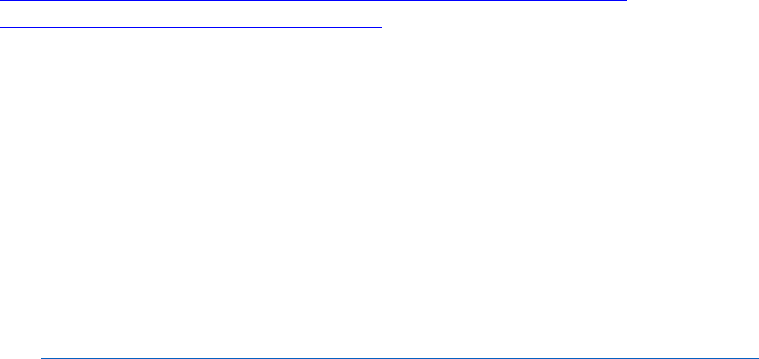
47
1. If a faculty member(s) suspects a student violated the Academic Integrity Policy,
the faculty member will have a face-to-face/virtual fact-finding conversation with the
student. The student will be given an opportunity to respond. Faculty member(s) may consult
with the Department Chair if they need guidance on how to proceed.
2. If the faculty member(s) concludes the student is not responsible for the suspected
violation, the matter is closed.
3. If the meeting findings suggest sufficient information to warrant further inquiry, in
accordance with FAM Policy 803.5,
https://www.csusb.edu/sites/default/files/upload/file/%28FSD96-
12.R2%29Academic_Dishonesty_0.pdf the faculty member(s) will:
a. Preserve the evidence in support of the allegation
b. Notify the student of the allegation and of the evidence on which it is based
c. Provide the student a reasonable opportunity to challenge or rebut the allegations
d. Notify the student of the action being taken
e. Direct the student to review the University Academic Dishonesty Policy to ensure
they are aware of their rights for defending themselves:
4. The faculty member(s) will notify the Chair/Program Director and call a meeting to
discuss the situation. The meeting will include the student, the faculty member(s) involved
and the Department Chair/Program Director. Based on the outcome of the meeting the
instructor will document the findings per the Department of Nursing. The Student Conduct
form https://www.csusb.edu/student-conduct/student-academic-dishonesty-form may be
used. The matter will be referred to the Department of Nursing Admission, Progression and
Recognition (APR) committee for recommendation of action to the Chair/Program Director.
5. The Chair/Program Director notifies the student to submit a document to the APR
committee giving his/her report of the incident.
6. The matter may be resolved at the department level with consequences including but not
limited to:
Faculty may assign:
● a lower or failing grade on the assignment/exam
● a course failure
● a requirement that the student repeat the assignment and perhaps some additional
assignment
● a lower grade for the course
Chair may also:
● initiate, in conjunction with the faculty member, a remediation plan for
program continuation
● remove the student from the classroom/clinical
● dismiss the student from the course
● dismiss the student from the program
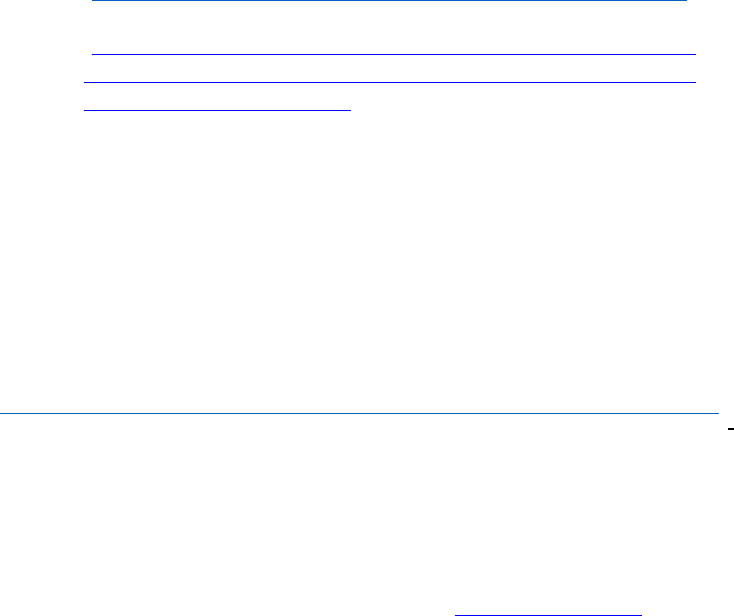
48
7. If alleged dishonesty occurs near the end of the course or otherwise cannot be resolved prior
to the grade submission deadline, the faculty member may assign a grade of RD (report
delayed) to hold the final grade in abeyance until the investigative process has been concluded.
8. In a case where a student denies academic dishonesty, the student may request a repeal of the
decision of the Department of Nursing. A student may appeal a determination that the student
committed an act of academic dishonesty by filing a request for a review of that finding. The
student is to be referred to the:
● University Grievance Policy
(https://www.csusb.edu/advising/students/academic- grievance)
● FAM 803.65
(https://docs.google.com/document/d/1I3oaMy4RoYFmvdj9Gz
7PZq7Fl3VzusXp/edit?usp=sharing&ouid=1151237757993404
86066&rtpof=true&sd=true)
The request for review shall be filed within 40 working days of the written notification to the
student of the sanction. The request for review shall be submitted in writing to the Dean of
College of Natural Sciences (CNS). This request must specify the particulars that are the
basis of the student’s appeal.
9. The student may appeal the decision of the Department of Nursing to the Dean of CNS, the
Provost, and the President.
10. Concurrently with the Department of Nursing process, the faculty member(s), in
consultation with the Chair/Program Director, will notify the Office of Student Conduct and
Ethical Development (Office of Student Conduct) if there is an indication of a violation of the
Academic Integrity Policy by completing and submitting the Student Conduct form
https://www.csusb.edu/student-conduct/student-academic-dishonesty-form to the Student
Conduct Administrator care of the Office of the Vice-President for Student Affairs. The
Office of Student Conduct will review and may take University disciplinary action
independently in accordance with their policy and processes.
FO approved 5.7.2021
Academic Probation & Disqualification
Academic probation is defined in the CSUSB Bulletin of Courses as any time the
cumulative grade point average in all college work attempted or the cumulative grade point
average at CSUSB falls below 2.0. The student shall be removed from academic probation
when the cumulative grade point average in all college work attempted and the cumulative
grade point average at CSUSB is 2.0 or higher. A student on academic probation per
CSUSB policy is not eligible to progress in the nursing program. If the student is removed
from CSUSB academic probation, the student may petition to be considered for
readmission to the nursing program if eligible per program policy.
In addition to the University policy above, it is an expectation that nursing students must
attain grades of “C” or better in all courses required for the Nursing major in order to
progress in the program. Students who withdraw, drop, or fail a “NURS” course may not
progress in the nursing program unless readmitted to the nursing program according to the
program readmission policy.
49
Academic Disqualification
A student on academic probation is subject to academic disqualification. Therefore, a student is
academically disqualified and not considered to enroll in “NURS” courses if the student is
unsuccessful in repeating a “NURS” course, earning a grade less than a “C”. In addition, if the
student earns less than a grade of “C” in a second “NURS” course, in the same term or in a
subsequent term, that student will be academically disqualified and not considered to enroll in
“NURS” courses. Students who are subject to Academic Disqualification will not be permitted
to reapply for readmission and will be notified.
A drop or withdrawal from a nursing course, with appropriate documentation described
in the CSUSB “Bulletin of Courses”, will not be counted toward academic
disqualification.
Academic Expectations
Preparation, Attendance, Participation
Regular preparation, attendance, and participation are prerequisites to effective learning.
⧫ If a student misses theory-based classes, the student remains responsible for learning
course material presented during the absence. Faculty members believe attendance in
all nursing courses is essential to the learning and success of each student. The
learning that results from the interaction and sharing with other students is an
important and integrative aspect of the learning process.
⧫ The participatory nature of nursing courses mandates careful preparation for class
sessions.
⧫ Students should be prepared to contribute ideas and ask relevant questions. Many
courses include participation as a class requirement and points are awarded according to
participation.
⧫ Class lectures and discussions require that all students are respectful of their
peers and faculty.
⧫ Cell phones, pagers, or other noise-producing electronics must be silenced and put
away prior to class.
⧫ No lecture may be recorded on any electronic device without the consent of the
professor.
⧫ Questions, conversation, and other discussion should be respectful at all times.
⧫ Arriving late to class and/or leaving early reduces a student’s ability to learn and
disrupt the learning of classmates.
⧫ Laptops are permissible in class, unless otherwise indicated by the instructor, as
long as they are used exclusively for class related activities. Checking email,
websites and doing other work reduces ability to learn and distracts other students.
⧫ Disruptive behavior will not be tolerated, and disruptive students may be asked to
leave the class.
With all clinical lab experiences, students are expected to be professional and maintain
confidentiality on all personal and sensitive information obtained in this course. This
includes, but is not limited to, avoiding discussions that would allow others to identify the
50
subject of the information and removing patient names from course papers/class assignments.
To discuss patient information in a student forum, a student may use initials or a name that is
not the patients. Failure to protect the privacy of others may have serious repercussions and is
a violation of the Health Information Protection and Privacy Act (HIPAA).
Specific Requirements for Nursing Courses
Use of APA Guidelines: Formal papers in nursing classes will be written, unless otherwise
instructed, following the guidelines in the most current edition of the Publication Manual of
the American Psychological Association. The book should be purchased and kept as a
reference.
CSUSB Undergraduate Student Option to Take 5000-level MS in Nursing
Program Courses
Background:
5000-level courses are open to CSUSB undergraduate students with junior or senior standing.
The MS in Nursing curriculum includes 5000-level courses that undergraduate students may
wish to take and, if appropriate, later apply toward the requirements of an MS in Nursing degree.
Policy:
Undergraduate BS in Nursing (BSN) students may register for 5000-level courses included in the
MS in Nursing (MSN) program if the student meets the following criteria:
1. Has attained junior or senior standing in the University.
2. If a prelicensure BSN student:
a. has completed all nursing courses through NURS 3633 Nursing Care of Children
& Families, NURS 3635 Nursing Care of Women, Infants, and Families, and
NURS 3640 Introduction to Theories of Nursing and Health with a B (3.0)
average or better, and
b. is eligible to enroll or is enrolled in NURS 4222 Introduction to Nursing Research
& Evidence-Based Practice, NURS 4415 Psychiatric & Mental Health Nursing
Practice, and NURS 4417 Community and Public Health Nursing Practice.
3. If an RN to BSN student, has completed the following nursing courses, or equivalent,
with a B (3.0) average or better:
a. NURS 310/3010 Role Transition to Professional Nursing Practice
b. NURS 325/3026 Health Assessment RN
c. NURS 330/3100 Pathophysiology and Pharmacology
d. NURS 360/3610 Strategies for Patient Education, Health Promotion, and Care
Coordination
4. Has had no failures in any nursing course required for the BS in Nursing degree.
Before being given permission to register by the Graduate Coordinator, undergraduate students
wishing to register for a 5000-level course in the MSN program must sign a form acknowledging
they understand they must earn a B- or better grade in any 5000-level course in the MSN
program in order for the course to be applied toward the MS in Nursing degree in the future.
Students may request a copy of the acknowledgement form from the Graduate Coordinator.
51
Companion Document: Acknowledgement Form
Approved Graduate Affairs Committee 9.16.19; Revised 5.14.20
Term Withdrawal
Dropping down to zero units (or withdrawal from all classes) is considered a withdrawal from
the term and/or university. To withdraw, this process can be performed per myCoyote by the
designated Census deadline for each term. Withdrawing from all classes after the Census
deadline will require petitioning with the Dean of the College of the student's major. Refer to
"Adding and Dropping after Census" for further information on petitioning
Leave of Absence from Nursing Program
DON Process
In order to remain in good standing with the DON, students who need to request a Leave of
Absence or Withdrawal from the program must submit a letter to the Department Chair.
The letter must include reasons for leave and expected return. A returning nursing student
must also follow the Readmission to the Nursing Program policy.
Program Dismissal Policy
The following causes shall be sufficient for immediate dismissal:
1) Professionalism
a) Documented and counseled (not to exceed 3 times) account of poor personal hygiene.
b) Documented and counseled for display of unprofessional image.
c) Documented and observed cheating, collusion, fabrication, plagiarism, purchasing
unauthorized materials (e.g. test banks) in the classroom and/or clinical practice settings.
d) Insubordinate attitude or comments to faculty and/or staff.
e) Refusal to sign a prepared SPS.
f) Noncompliance with program policies, procedures, and/or SPS.
g) Unethical, inappropriate, or uncivil conduct in the classroom and/or clinical practice settings.
h) Documentation of behavior consistent with chemical impairment.
i) Use of alcohol or abuse of drugs while in class or clinical.
j) Violation of the Social Media Network Guidelines and Policy
2) Academic Performance
a) Failure in a required nursing course (theory or clinical)
b) Failure to meet expectations of SPS
3) Clinical Performance
a) Unsafe performance in the classroom and/or clinical practice settings.
(See Unsafe Clinical Behavior Chart with Examples)
b) Inconsistent performance in delivering patient care.
c) Unsatisfactory/inappropriate recording and reporting and inaccurate documentation.
d) At any point in the term, failure to complete clinical objectives.
e) Insubordination to clinical instructors or clinical facility staff.
4) Attendance
52
a) Illness, mental or physical, deemed sufficient to interfere with the student’s
ability to complete objectives.
b) Excessive absences or tardiness, as defined by Attendance Policy
5) Any other reason listed in the student conduct section of the university’s Bulletin of
Courses.
Any infraction will require a review by the Department of Nursing Chair, Admissions,
Progression, and Recognition Committee (APR), and /or appropriate CSUSB departments.
53
SECTION V: STUDENT RESOURCES
Academic Advisement
Department of Nursing Undergraduate Student Academic Advisee Policy
Undergraduate pre-nursing students who are not currently enrolled in nursing courses are advised
by staff in the College of Natural Sciences (CNS) Advising.
Undergraduate nursing students who are enrolled in their first nursing course will be assigned a DON
faculty advisor. Additional advising support may be available to nursing students from CNS.
● Prelicensure Students are expected to meet with their faculty adviser for 30 minutes face to
face or web conference platform (If all parties are comfortable and in agreement)
● 1
st
term in the program,
● 3
rd
term, and
● their second to the last term prior to graduation and prior to filing Grad Check.
● Students need to communicate with their faculty academic adviser every term or as needed to
update their program plans.
● A required 30-minute meeting (face to face or web conference platform) to create or conduct
a detailed review of the program plan will be held in the first term in the program. A
registration hold will be placed until after the meeting.
● A required 30-minute face-to-face meeting to conduct a detailed review of the program plan
will be held in the 1st, 3rd, 4th semester of the program. A registration hold will be placed on
prelicensure nursing students until after the meeting.
Students are strongly encouraged to meet with their advisor via phone, email, or web conference
platform (If all parties are comfortable and in agreement) during all other terms to check in and revise
program plans as needed.
A hold will be put on registration for all students in the terms following the required face-to-face or
web conference advising meetings. Registration holds will be lifted by the advisor after each required
face-to-face meeting.
RN to BSN will meet with their faculty adviser each year and prior to filing Grad Check.
A Grad Check must be completed prior to graduation, during the term required by the University.
Students are welcome to attend the advising sessions offered by Peer Advisors, as well.
Below are some examples of additional reasons students should make an appointment to see their
academic advisors.
Before Add/Drop Ends:
● To obtain an advisor’s (aka dean’s) signature for your add/drop slip
● For help arranging an independent study (for sophomores, juniors, and seniors)
● For approval to take an overload in a term (for sophomores, juniors, and seniors)
● To take a course pass/fail or audit a course (for sophomores, juniors, and seniors)
During the Academic Term:
54
● To discuss program plan
● Questions about graduation requirements
● Questions about details on your PAWS report
● Advice on academic success strategies
● Information on campus resources
● Concerns about a course
● To discuss withdrawal from a course (be aware of withdrawal deadlines each semester)
● Referral to appropriate campus resources for personal issues that may be affecting your
academic progress
● To discuss an academic, medical, or personal leave of absence
● Questions about a change of major
End of Academic Term:
● To request an incomplete in a class (student should contact advisor by last day of classes)
● To arrange to take an exam during the conflict exam time
● To discuss scheduling concerns for upcoming semester
Students will be asked to complete an evaluation of their academic advisor after each required 30-
minute face-to-face meeting. Students’ evaluations will be anonymous; the evaluation results will be
used by the advisor as part of overall performance evaluation.
Adapted from School of Nursing and Health Studies at Georgetown University, Washington, DC.
Effective Fall 2020
Approved by Faculty Organization 02.07.2020
Please Note: If the nursing courses have not been finalized at the time of registration, students
will need to be flexible should the finalized schedule conflict with other courses.
University Catalog and Schedule of Classes
Information about admission requirements, registration, student activities and academic policies
is available in the university catalog and via the university website.
Strategic Plan for Success Policy (SPS)
The faculty at CSUSB DON is committed to assisting students to achieve their maximum potential.
However, there are times when certain factors prohibit/prevent students from achieving their goal.
In order to afford the student due process and time for remediation and improvement the following
sequence of events will be observed. All reference to standards is based on the current editions of
the following documents:
⧫ Student Handbook
⧫ Relevant Course Syllabus
⧫ American Nurses Association (ANA) Standards
⧫ California State University, San Bernardino Bulletin of Courses
1. The student or faculty recognizes unresolved or ongoing difficulties in any of the following
areas: professional conduct, clinical proficiency, absence or tardiness, as defined by the
current student policy and procedure manual and relevant course syllabus.
55
2. An instructor will develop SPS Guidelines identifying the deficiency and a SPS. The
following steps will be implemented:
a) Following a meeting of relevant involved parties, the student may be removed from
the clinical setting as determined by the instructor, to allow time for further
clarification and verification of information.
b) The instructor will contact the Chief Nurse Administrator/Department Chair
c) The SPS will be ready for the student’s signature by the next clinical day from the
identification of the deficiency.
3. Within five (5) workdays, the instructor, in consultation with the Department Chair/Chief
Nurse Administrator, will meet with the student to define details of the SPS for
completion.
4. The plan may include referral to:
a) Theory and/or Clinical Instructor of the course.
b) The Student Health and Psychological Counseling Center and/or CARE Team
for solution of personal problems interfering with learning.
c) The Learning Center for assessment of possible learning disabilities and/or
remediation work in deficient areas and tutorial support.
d) Referral to Skills Lab Coordinator for clinical remediation
support. During this meeting, an opportunity will be provided
for student input.
5. A copy of the SPS is filed in the student’s department record.
6. An instructor may schedule weekly meetings with the student during the term of
the SPS to review progress. If the student fails to demonstrate reasonable progress
in accordance with the SPS, the instructor may request a meeting with the student,
program director and Chief Nurse Administrator/Department Chair. At this
meeting the prohibition of the student to attend class and/or clinical may be
determined.
7. At the conclusion of the improvement date identified in the SPS, the student and instructor
will meet. Progress will be reviewed; however, all SPS are maintained throughout the
remainder of the program.
8. If, in the professional assessment of the faculty and the Chief Nurse Administrator /
Department Chair, the student does not satisfy the terms of the SPS, the student will be
notified verbally and in writing during a meeting with the instructor and the Chief Nurse
Administrator/Department Chair. The student will be unable to attend the class and/or clinical
portion of the course. This will result in failure of the course.
Within three (3) working days, an appeal meeting will be scheduled to determine the student’s
eligibility to continue in the course/program. During this meeting, students may respond in writing
regarding the reasons for having not satisfied the terms of the SPS.
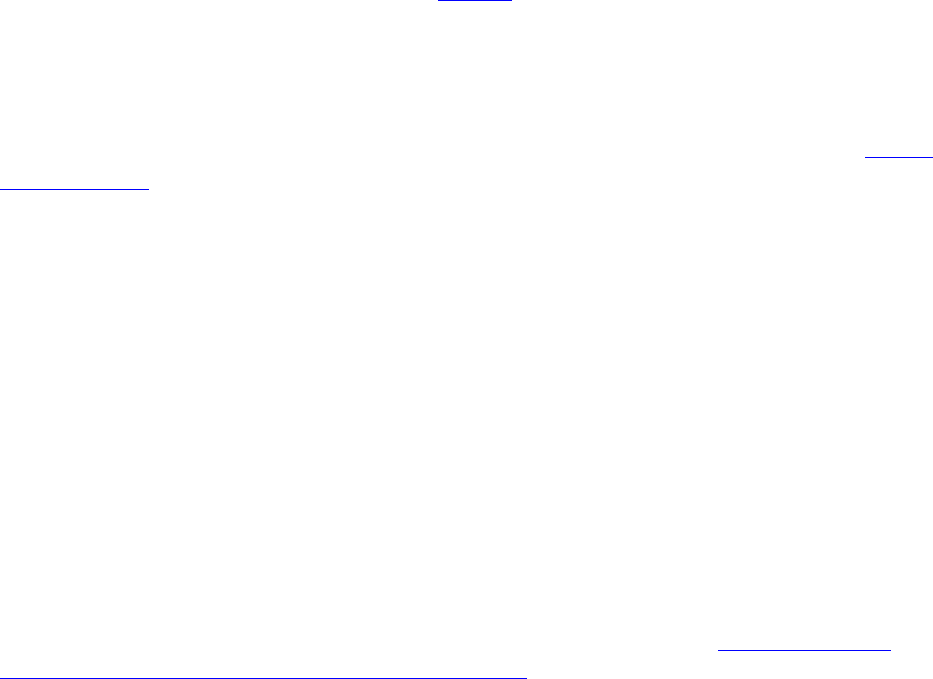
56
This final meeting will include, but not limited to the instructor, Program Director, Department
Chair / Chief Nurse Administrator, and the student. The student may have a maximum of two (2)
student peers present to give additional input. A decision will be provided to the student,
verbally at the meeting and in writing, within five (5) working days.
Upon completion of the appeal meeting, if the appeal is not granted the student will be
administratively dropped from nursing courses.
After the above process, if the issue is still unresolved, the student may:
1. Request a meeting with the Dean of Natural Sciences, to review the findings and
student input.
2. The Dean may, after consideration of the circumstances, recommend the issues be
brought to the Ombuds Services.
3. Students are expected to follow the guidelines identified in the Grade/Academic
Grievance Procedures policies in accordance with the CSUSB Bulletin of Courses.
List of Student Resources
Financial Aid
The Financial Aid office offers programs that provide support for students to help meet the costs of
obtaining a college education. Funding for such programs is provided by the federal and state
governments, the individual colleges and universities, and a variety of other public and private
sources. Please visit the Financial Aid Office website for further information.
Office of the Registrar
The Office of the Registrar is committed to helping students meet their degree objectives. By
building positive working relationships with students and providing quality services, we lead them
through their academic careers today for successful professions tomorrow. Please visit the Office
of the Registrar for further information.
Student Health Center*
The Mission of the Student Health Center is to provide compassionate, accessible and cost
effective clinical and preventative health service for the student community.
The Student Health Center provides first aid and basic out-patient care services. They have a full
time staff Monday through Friday to care for your needs. First aid is always available during clinic
hours to anyone on campus. Please dial 911 for emergencies from anywhere on campus for
assistance. The Student Health Center is staffed with Doctors, Physician Assistants, Nurse
Practitioners, Nurses, Medical Assistants, and a Pharmacy.
The center has contracted with local lab and X-ray services for our students. Counseling and
Psychological Services also has a full-time staff of Marriage and Family Therapists, licensed
Psychologists and supervised interns. Please visit Counseling & Psychological Services for more
information.
Health services are also offered at the CSUSB Palm Desert Campus in the R.D. & Joan Dale
Hubbard Health and Psychological Counseling Center located in HS-119.

57
* Students are referred to service department websites when the university is restricting access to on
campus services during times of emergency.
Services to Students with Disabilities (SSD)*
Mission Statement
The Office of Services to Students with Disabilities (SSD) strives to empower students with
disabilities by fostering skills of self-advocacy, resourcefulness, and independence. The SSD office
works collaboratively with the campus community to remove barriers and promote an enriched
learning environment where students with disabilities can utilize their skills and pursue their
academic and personal development goals.
https://www.csusb.edu/ssd
Steps to Determining Eligibility
Step 1: Contact the SSD Office
Contact the SSD office at [email protected] or (909) 537-5238. You must provide documentation of
disability directly to SSD — not to your program or the Office of Admissions and Student
Recruitment. All contact with SSD is confidential. Disability-related information is not released
except on a need-to-know basis.
Step 2: Complete and Submit
Fill out and submit the Application for Services packet, including documentation of the disability, to
the SSD office at [email protected]. Without submission of documentation, the processing of the
student’s application may be delayed.
Step 3: Review of Documentation
An SSD Counselor will review the documentation for eligibility and a brief introductory session
(Meet and Greet) will be scheduled by phone or Zoom.
Step 4: Verification of Enrollment
Upon verification of enrollment in classes, the intake will be scheduled and conducted via Zoom.
During the intake, the SSD Counselor will discuss and assign the appropriate accommodations and
the student will sign the necessary paperwork. Most reasonable accommodations can be arranged
within 10 business days. Students receiving reasonable accommodations have a responsibility to
notify the appropriate university personnel of their recommended accommodations in a timely
manner. Your assigned counselor will generate a memo listing your approved accommodations,
which you must submit to your professors.
Please Note: Students who are found to be non-disabled will be referred to other campus and
community resources for assistance. Pending receipt of documentation, SSD reserves the right to
deny services or accommodations.
* Students are referred to service department websites when the university is restricting access to on
campus services during times of emergency.
The Career Center
The mission of the Career Center is to support the career readiness of all students and alumni by
providing advising, assessment, workshops, career events, employer networking opportunities,

58
internships and job opportunities that result in the establishment or advancement of personalized
career goals. https://www.csusb.edu/career-center
The Writing Center
The CSUSB Writing Center, sponsored by the University's Division of Undergraduate Studies,
conducts more than 10,000 one-to-one student writing conferences and facilitates workshops
with faculty members in a variety of campus classrooms.
Writing consultants work with students at all stages of the composing process. They help students
interpret assignments, discover topics, expand ideas, clarify organization, incorporate counter-
arguments, cite references, edit, and proofread. Several consultants work specifically with
multilingual students to help them negotiate linguistic and cultural differences in written
composition; these tutors also conduct informal English conversation groups for multilingual
speakers: https://www.csusb.edu/writing-center
ELSC Students
CSUSB understands that English Language Learners come from diverse backgrounds and have a
rich variety of educational experiences. The English Language Support Center (ELSC) provides a
welcoming environment that can help students – as well as faculty and staff – make the university
experience rewarding and successful: https://www.csusb.edu/registrar/evaluations/graduation-
requirement-check
Graduation Requirement Check
Undergraduate students must request a graduation requirement check (Grad Check) prior to the
end of the term of their expected graduation.
Students must request a graduation requirement check (grad check) through the Office of the
Registrar (UH 171) prior to the end of the term of their expected graduation. However, to avoid
late fees, the grad check should be filed by the established deadline presented on the grad check
deadline.
Post-baccalaureate students must request a grad check at least one term prior to the end of the
term of their expected graduation. Grad check deadlines and further information is provided at
the following website:
https://www.csusb.edu/registrar/evaluations/graduation-requirement-check.
59
SECTION VI: SAFETY, CLASSROOM, AND
CLINICAL/LAB PRACTICES
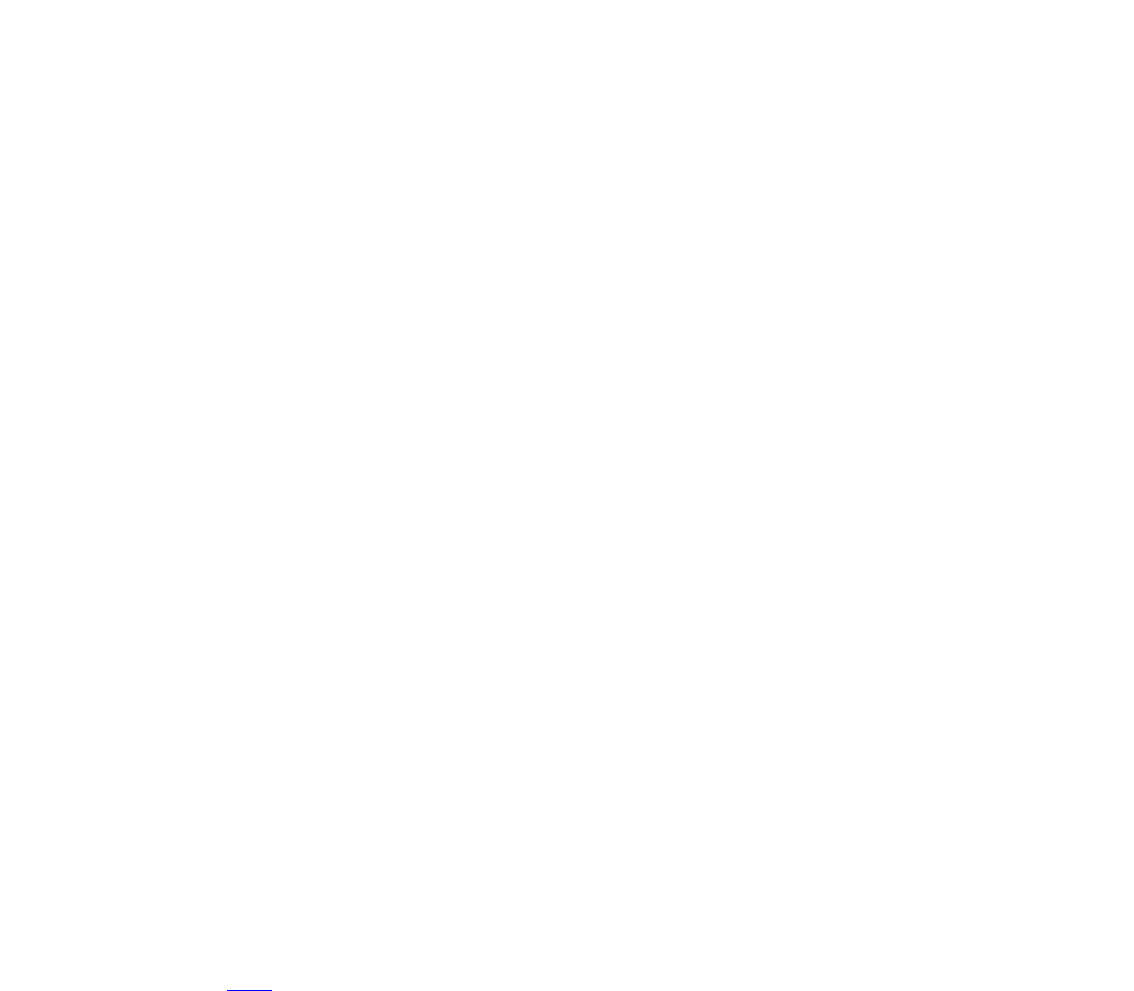
60
Student Requirements and Compliance
Health and Safety Compliance Policy
Compliance+is+very+important.+It+includes+immunizations,+titers,+certifications,+drug+screening+and+background+
checks,+and+any+other+documents+required+by+the+clinical+agency.+++
Student+nurses+are+legally+and+ethically+bound+to+provide+safe care+to+the+clients+they+serve.+It+is+required+that+
all+nursing+students+assume+accountability+for+the safety+of+themselves,+colleagues,+and+their+clients.+
Requirements+are+based+on+legal+contracts with+clinical+agencies,+prevailing+factors+in+the+education+and+
healthcare+environments,+and+risk management+concerns.
Compliance+is+required+in+order+to+be+enrolled+in+and/or+attend+classes+and+participate+in+simulation/skills+
labs+on-campus,+clinical+experiences+at+clinical+agencies+and+in+the+community.+
DON and Clinical Agency Compliance+
The+DON+publishes+due+dates+for+compliance.++Students+are+expected+to+meet+published+due+dates+for+DON+and+
clinical+agency+documents.+Failure+to+meet+the+due+dates+may+result+in+disciplinary+actions.++
It+is+the+student's+responsibility+to+understand+the+compliance+requirements+and+to+keep+themself+updated+
and+in+compliance,+and+to+provide+the+DON+with+documentation+that+compliance+requirements+have+been+
met+by+established+due+dates+and+in+advance+of+any+expiration+dates.+Excuses+are+not+accepted.+If+the+student+
is+not+in+compliance+with+each+of+the+requirements,+they+will+not+be+permitted+to+attend+nursing+
classes/clinical.+The+student+may+be+dropped+from+courses.+If+the+student+wishes+to+reapply,+the+student+is+
directed+to+refer+to+the+student+handbook.+The+DON+reserves+ t he+right+to+add,+change,+or+modify+these+
requirements+at+any+time.+It+is+the+responsibility+of+the+student+to+contact+Nursing+Info+regarding+any+
compliance+issues.+
Approved(APR(08/31/2022( ( FO(09/23/2022(
Students are expected to demonstrate performance in specific core performance standards
(with reasonable accommodation upon verification of disability) including:
● Critical thinking ability sufficient for clinical judgment.
● Interpersonal abilities sufficient to interact with individuals, families and groups.
Communication abilities sufficient for verbal and written interaction.
● Physical ability to move from place to place and demonstrate manual dexterity
and eye-hand coordination.
● Demonstrated auditory, visual, tactile, and olfactory ability sufficient to assess and
monitor patients safely.
The Chair and Program Director of the DON, working with the Services to Students with
Disabilities (SSD) Services, will assist students in determining what accommodations will be
needed to enable students to meet these standards.
NCLEX-RN Licensure
All State Boards of Nursing require an individual to possess a professional license to practice
as a registered nurse (RN). Students are advised to investigate all background requirements for
RN licensure (e.g., criminal background checks, verification of employment eligibility, and
verification of citizenship or immigration status).
Information regarding RN licensure requirements can be found on individual state boards of
nursing websites, the National Council of State Boards of Nursing or NCSBN

61
https://www.ncsbn.org/nclex-application-and-registration.htm , the California Board of Registered
Nursing (BRN) website https://rn.ca.gov/applicants/lic-exam.shtml
Information about the Next Generation NCLEX: https://www.ncsbn.org/next-generation-
nclex.htm
Background Checks/Fingerprinting
The DON requires all students to submit a cleared criminal background checks before
participating in any course.
Students are responsible for paying for the background check and for making sure the
department gets the information by the due date. The Department of Nursing uses a designated
vendor to perform the background check and maintains the records, protecting confidentiality.
The entire process can be done online and should not take more than a few days. If a student
has not obtained the background check by the due date, the student will not be able to
participate in the Nursing program. If a student does not obtain a "clear" background
report, the student needs to report to the Department Chair/Undergraduate Program
Director immediately. If the student's background check cannot be cleared by the time
class starts, the student may be dropped from the program. There will be NO
EXCEPTIONS TO FULFILLING THIS MANDATORY REQUIREMENT.
If at any time a CSUSB nursing student is charged or arrested for any offenses after the initial
background check, the student MUST notify in writing the Department Chair and
Undergraduate Program Director within 48-72 hours of the arrest, violations and/or
convictions that occur after the Background check is completed. The student MUST meet with
the Department Chair and Undergraduate Program Director. Failure to inform the Department
Chair and Undergraduate Program Director may result in dismissal from the program. In
addition, if a student discontinues or suspends participation in the program, a background
check will be required upon reinstatement of the program.
Arrests, violations and/or convictions may result in denial by clinical agencies of the student
for clinical experiences that are required for successful completion of the nursing program.
Arrests, violations and/or convictions may or may not violate University and/or department
policies and/or standards that could result in sanctions. Failure to notify the Department
Chair/Undergraduate Program Director will be deemed as a deception and/or a
misrepresentation by the student and will be handled as a form of academic dishonesty in
addition to any other consequences.
Some clinical agencies (including, but not limited to Tenet hospitals (DRMC & JFK),
Veteran’s Administration, Patton State Hospital and other public health agencies) require
additional background checks which may include Live Scan.
Students may be responsible for paying for these additional background checks. A student may
be directed to obtain an updated background check at any time during the program. This policy
holds true for drug screens as well.
Drug Screen Test
A drug screen is required for all students upon admission to the nursing program.
Due to requirements mandated by our clinical facilities throughout San Bernardino and Riverside
Counties, all students in the BSN program will be required to have a CLEAR DRUG SCREEN
TEST COMPLETED BEFORE THE START OF THE NURSING PROGRAM.
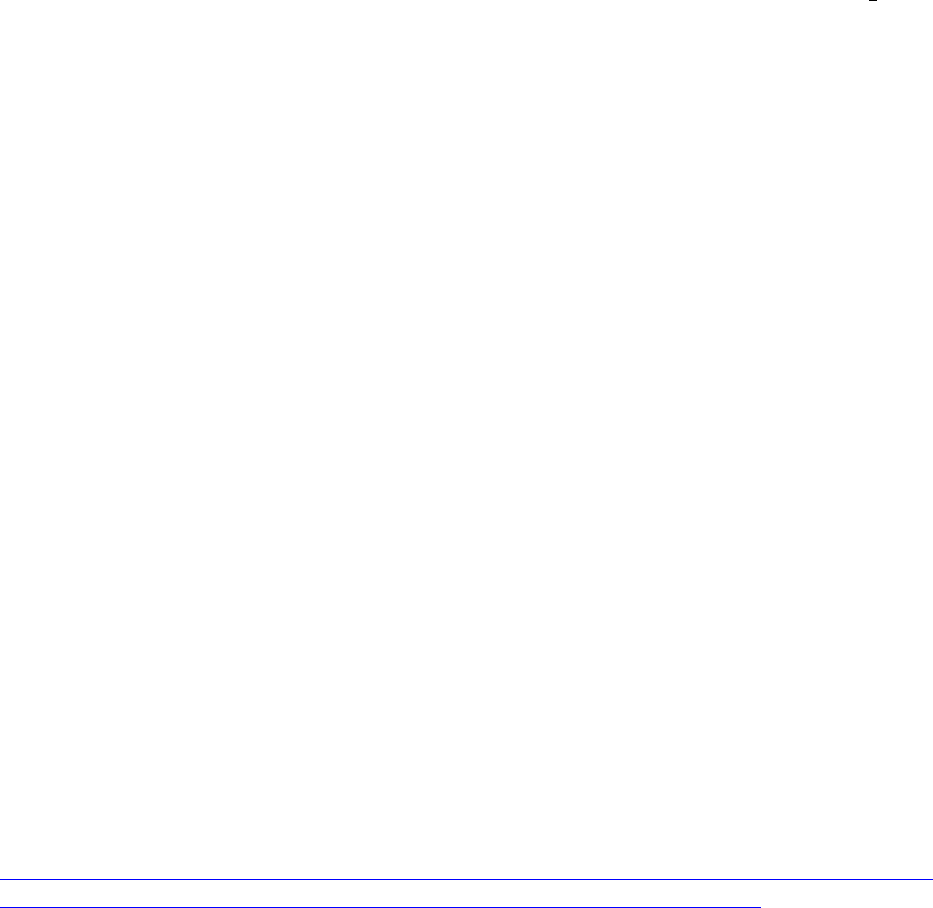
62
The Nursing Department uses a designated vendor to perform the drug screen test and maintain the
records. Students are responsible for paying and getting this information to the DON by the due
date. It is the students’ responsibility to pay for the initial admission test. If the test result is
positive, the student will not be allowed to participate in the program. If the student wishes to
appeal the result, the student must speak to the Department Chair or Program Director. If the test
comes back inconclusive, the student will be required to repeat the test once within 72 hours at
their own expense.
If a repeat drug test is required by a clinical partner, the Department of Nursing will pay for the
first test. If it needs to be repeated, the cost is the responsibility of the student.
Students may be required to do random drug testing any time during the program. CSUSB
contracts with clinical agencies and retains the right to perform drug screen testing of CSUSB
Nursing students “for cause”. A nursing student should comply with any clinical agency requests
for random drug screening. The student should immediately notify his/her clinical faculty. If
requested, the student will be immediately removed from the clinical agency. The student must
contact the Department Chair/Undergraduate Program Director of the CSUSB DON within 24
hours.
If a student does not obtain an acceptable drug screen result, the student needs contact the
Department Chair/Undergraduate Program Director within 24 hours. A nursing student who has
adverse information in their drug screen report cannot participate in required clinical experiences
and will be notified of consequences, up to and including, being dropped from the program.
Approved by APR 8/31/2022 FO 09/23/2022
List of Core Requirements
Students are required to provide the DON with copies (verified with original document) of the
following:
Current state driver’s license or state issued identification card
Current and valid social security card
Current and valid green card (if applicable)
Current and unencumbered RN license
Measles, Mumps & Rubella (MMR) - Positive antibody titers for all 3 components (lab report
required). If you report an equivocal or negative titer, you MUST receive two doses of MMR, 4-6
weeks apart. No follow up titer is needed.
Varicella (Chicken Pox) - Positive antibody titer (lab report required) for Varicella. IgG results
must be reported. If you report an equivocal or negative titer, you MUST receive two doses of
Varicella, 4-6 weeks apart. No follow up titer is needed.
Hepatitis B - Positive antibody titers for all 3 components (lab report required). If you report an
equivocal or negative titer, you MUST receive three doses of the Hep B booster at 0, 1, 6 months.
Post-vaccination students must draw a titer 1-2 months after the series. If the report shows
equivocal or negative titer, students may ask for a signed declination waiver.
https://www.cdc.gov/vaccines/schedules/hcp/imz/adult.html?CDC_AA_refVal=https%3A%2F%
2Fwww.cdc.gov%2Fvaccines%2Fschedules%2Fhcp%2Fadult.html#vacc-adult
PPD (TB) Two-Step Skin Test
63
A two-step PPD skin test (2 separate injections and 2 readings, 1-3 weeks apart) is required in
the first year of the nursing program, OR 2 consecutive annual PPD tests (no more than 12
months between tests and at least 1 in the last 12 months, OR 2 consecutive annual TB blood
test (QuantiFERON gold or T-spot with lab report).
Yearly renewal follows with one-step PPD (1 injection and 1 reading, 72-hours post-injection),
OR QuantiFERON Gold Test or T-spot with lab report) is required.
Any student with a positive PPD skin test or have a history of prior positive PPD results
(indicating exposure to TB or from prior vaccination with a BCG vaccine) must provide a copy
of the positive PPD lab result, a clear chest x-ray (expires every 4 years) and complete the
DON Annual Health Screening Questionnaire (signed by the student’s healthcare provider).
Tetanus, Diphtheria & Pertussis (Tdap): documentation of a Tdap booster within the past 10
years OR one Tdap at any point and Td booster within the past 10 years.
Influenza - Documentation of a flu shot administered during the current flu season.
CPR Certification – Must be the American Heart Association Healthcare Provider course. Copy
of front & back of signed card received following completion of an American Heart Association
Healthcare Provider course.
HIPAA Certification – Watch HIPAA video during new student orientation (1
st
term) or clinical
class, fill out a form and submit to the nursing office/faculty.
Universal Precautions and Blood Borne Pathogens – Watch BBP video during new student
orientation (1
st
term) or clinical class, fill out a form and submit to the nursing office/faculty.
Physical Examination – Fill out the form provided by DON, and have it signed by your
provider.
Background Check- Students will be using Castle Branch for Background Check and
Drug Screen. Read information noted in the compliance packet provided during
orientation and posted on the DON website.
Without these documents, students will not be allowed to continue in the nursing program.
Failure to conform to these policies may result in an administrative drop from courses, and the
student will have to reapply to the nursing program. (See Readmission of CSUSB Nursing
Students). IT IS THE RESPONSIBILITY OF THE STUDENT to maintain current
documentation of these compliance requirements with the nursing department. It is also the
responsibility of the student to retain copies of all documentation submitted. The DON will
NOT make copies of any documents submitted and will NOT provide copies of records or any
other information submitted.
Liability Insurance
Each student in the DON is required to have Student Professional Liability insurance through
CSUSB. Currently the CSU Chancellor’s Office provides General Liability and Professional
Liability for students enrolled in a for credit Health Profession Practicum with a CSUSB
partner. Policy coverage is referred to as SPLIP (Student Professional Liability Insurance
Program) and may be viewed on the CSU website. The student obtains evidence of the coverage
from DON and must carry the certificate with them to all clinical activities.
Cardiopulmonary Resuscitation (CPR) BLS for Healthcare Providers Card
64
It is the students’ responsibility to maintain a current, valid certification card (copy to be
submitted to the Department of Nursing office). The required CPR course MUST BE
American Heart Association (AHA) HealthCare Provider (2-year certification). If previously
taken certification must be valid during the school year (September-June) for the entire two
years. Renewals are only done during the Summer (earliest is finals week in Spring and latest
is the set compliance deadline) to ensure coverage for the entire academic year. Completing
the certification early or for employment purposes will not be acceptable.
Physical Exam and Immunizations
Upon admission to the BSN program, each student must provide documentation from their
healthcare provider that they meet the requirements for essential duties in clinical practice
through a recent (within the past month) physical exam and are free of contagious diseases. The
healthcare provider is to be a licensed primary care provider, a MD, DO, NP, or PA.
Each student is required to prove immunity, via lab report of blood testing indicating positive
IgG titer, to the rubeola and rubella viruses, varicella (chicken pox), mumps, and Hepatitis B. In
addition, proof of up-to-date Tetanus Diphtheria and Pertussis (Tdap), proof of a completed
polio immunization series as well as proof of influenza immunization are required. Declinations
are not permitted unless due to medical condition(s) at which time proper documentation will be
required. In addition, some clinical agencies may require their own test and lab studies be done.
Health Insurance Coverage
Proof of current, active health insurance coverage must be submitted each year, or as
appropriate based upon expiration date, prior to attending classes and participating in skills
labs on-campus, clinical experiences at clinical agencies and in the community. In addition, a
copy of the card (verified with original), along with proof of current/active status is required.
The health insurance card must have the student’s name listed.
Access to Transportation
A valid driver’s license along with proof of minimum state auto insurance is required. The
insurance card or policy must have the student’s name listed. Should a student not have a
valid driver’s license, a copy (verified by original) of ID must be submitted. A notarized letter
from the person responsible for driving the student to and from clinical must be submitted
each term. The letter must indicate the driver is taking full responsibility for the student.
Essential Duties to Meet Clinical Requirements
To enter into and to complete the nursing program, students must be able to meet the emotional
and physical requirements of the DON and the agencies in which students are placed for clinical.
If accommodations are required for a student to meet these requirements the student and faculty
are to work with Services to Students with Disabilities to determine what accommodations
would be reasonable in a clinical setting. SSD accommodations are renewed each term and
submitted to faculty at the beginning of the term.
Emotional Requirements
The student must have sufficient emotional stability to perform under stress produced by both
academic study and the necessity of performing nursing care in real patient situations while being
observed by instructors and other health care personnel.

65
Physical Requirements
In order to participate in CSUSB DON, students are required to travel to agencies and hospitals,
and to homes with unpredictable environments. Students need to have the endurance to adapt to a
physically and emotionally demanding program. The following physical requirements are
necessary to participate in the clinical application courses in nursing:
1. Strength: Sufficient strength to lift, move and transfer most patients; to restrain and carry
children; to move and carry equipment; and to perform CPR, which requires sufficient body
weight and adequate lung expansion.
2. Mobility: Sufficient to bend, stoop, get down on the floor; combination of strength, dexterity,
mobility and coordination to assist patients; ability to move around physically and adequately in
confined spaces (patient rooms, bathrooms, treatment settings, around patient equipment, etc.).
Be able to perform all physical skills required to deliver patient care such as CPR, ambulation,
transport, reposition, lifting, and other nursing duties.
3. Fine Motor Movements: Necessary to manipulate syringes and IVs; to assist patients with
feeding and hygiene; to write appropriate notations; to document in health record; to perform
sterile procedures and other skilled procedures.
4. Speech: Ability to speak clearly in order to communicate with staff, physicians and
patients; need to be understood on the telephone.
5. Vision: Visualize patients in order to assess and observe their health status; skin tone,
color changes, dermatological conditions, non-verbal behaviors, changes in signs and
symptoms of illness, health improvement or deterioration, etc.
6. Hearing: Hear and see patients, monitor signs and symptoms, hear alarms, patient voices,
call lights, and assess patient conditions, non-verbal behaviors, changes in signs and symptoms
of illness, health improvement or deterioration, hear through the stethoscope to discriminate
sounds, and accurately hear on the telephone.
7. Touch: Ability to palpate both superficially and deeply and to discriminate tactile sensations.
Professional Standards in Clinical Practice
Professional standards are to be maintained. A student who demonstrates unprofessional behavior
or behavior which indicates unsafe practice or improper classroom behavior (online and in
person) may be denied progression or may be dismissed from the program. See Code of Ethics for
Nurses, https://www.nursingworld.org/coe-view-only . Criteria are:
Safety
1. Demonstrates safe clinical performance skills.
2. Notifies instructor or agency immediately if an error was made or safety was violated.
3. Protects the patient from environmental hazards and provides for the safety of the patient,
self, and others.
Personal/Professional Accountability
1. Consistently takes initiative in seeking faculty consultation and supervision.
2. Seeks assistance in aspects of patient assessment in which the student lacks confidence or skills.

66
3. Communicates online and in person, in a manner which maintains and promotes
professional relationships.
4. Communicates important patient problems identified during the clinical experience to
the appropriate persons accurately and without delay.
5. Performs all clinical assignments or informs the instructor of inability to do so in adequate
time or with the required level of competence.
6. Recognizes and assumes responsibility for the consequences of own actions.
7. Demonstrates organizational skills and priority setting appropriate to the clinical setting.
8. Assumes responsibility for attempting to identify and organize data for problem-solving.
9. Exhibits decision-making and leadership skills appropriate for an independently
functioning professional.
10. Demonstrates judgment appropriate for an independently functioning professional.
11. Demonstrates professional conduct at all times while performing clinical assignment (non-
professional conduct includes use of abusive language, substance abuse — alcohol and
drugs, and other behavior indicating loss of emotional control).
12. Demonstrates honesty at all times.
13. Reports to the agency prepared for assignment on time and dressed appropriately (hair
and clothes clean and appropriate for the assignment).
14. Notifies appropriate persons of absences or when late in arriving for clinical experience.
15. Demonstrates ethical behavior as outlined in the ANA Code of Ethics (2015).
16. Provides services with respect for human dignity and the uniqueness of the client,
unrestricted by consideration of social or economic status, personal attributes, or the nature
of the health problem.
17. Safeguards the client’s right to privacy by judiciously protecting information of a
confidential nature.
18. Acts to safeguard the client and the public when health care and safety are affected by
the incompetent, unethical or illegal practice of any person.
19. Students are not allowed to bring or use cell phones in the clinical sites when prohibited by
hospital regulations.
20. Students are expected to bring to clinical the required devices and software as their
clinical resource, unless prohibited by the facility.
The student is expected to meet all clinical assignments and to arrive on time. The instructor, who
becomes aware of a student failing to meet one or more clinical objectives, will notify the student
immediately.
The Code of Ethics for Nurses
On June 30, 2001, the House of Delegates of the American Nurses' Association adopted a new
Code of Ethics. The Code was revised in 2015 with input from nurses throughout the United
States. The Code establishes the ethical standards for the nursing profession and is a guide for
ethical decision-making and ethical analysis.
American Nurses Association Code of Ethics for Nurses with Interpretive Statements (2015)
1. The nurse practices with compassion and respect for the inherent dignity, worth and
unique attributes of every person.
2. The nurse's primary commitment is to the patient, whether an individual, family,
group, community or population.
67
3. The nurse promotes, advocates for and protects the rights, health, and safety of the patient.
4. The nurse has authority, accountability, and responsibility for nursing practice; makes
decisions; and takes action consistent with the obligation to promote health and to provide
optimal care.
5. The nurse owes the same duties to oneself as to others, including the responsibility to promote
health and safety, preserve wholeness of character and integrity, maintain competence and
continue personal and professional growth.
6. The nurse, through individual and collective effort, establishes, maintains and improves the
ethical environment of the work setting and conditions of employment that are conducive to
safe, quality health care.
7. The nurse, in all roles and settings, advances the profession through research and scholarly
inquiry, professional standards development and the generation of both nursing and health
policy.
8. The nurse collaborates with other health professionals and the public to protect human
rights, promote health diplomacy, and reduce health disparities.
9. The profession of nursing, collectively through its professional organizations, must articulate
nursing values, maintain the integrity of the profession and integrate principles of social
justice into nursing and health policy.
Integrity
‘Integrity’ definition is firm adherence to a code of especially moral or artistic values, an
unimpaired condition and the quality of state of being complete or undivided. (Merriam-
Webster Dictionary, New Edition, 2016).
The faculty and staff of the California State University, San Bernardino Department of Nursing
believe that integrity is one of the fundamental bases for academic and professional nursing and
allied health communities. Accordingly, the faculty’s goal is to assist all students in adopting
acceptable standards of professional behavior.
Civility Definition
According to the American Nurses Association, “incivility” is described as:
“Incivility may be exhibited through behaviors such as rudeness, open disdain, passive
aggressiveness, bullying, and psychological abuse. Or deliberate undermining of
activities. These types of incivility may lead to a non-supportive organizational climate
in which students feel pressured by peers to look the other way, and thus fail to
support the person experiencing such incivility.”
Students in the Nursing Program at CSUSB are expected to be civil in their actions towards
each other, the DON and college faculty, and staff. Civility entails being polite, courteous, and
showing regards for others. Such actions may be demonstrated in both verbal and non-verbal
behaviors.
Students are expected to conduct themselves ethically, honestly, and with integrity as
responsible members of the CSUSB DON community. This requires the demonstration of
mutual respect and civility in academic and professional discourse. An institute of higher
education, such as CSUSB, is a place where ideas are openly shared. In the search for truth, it
is essential that freedom exists for contrary ideas to be expressed. Accordingly, students are
expected to respect the rights and privileges of others and to foster an environment conducive

68
to learning. Students are accountable for their actions and are required to work independently,
as well as collaboratively with teams, in achieving learning goals and objectives.
Behavior, either on or off campus, that is determined to impair, interfere, or obstruct the
opportunities of others to learn or that disrupts the mission, processes, or orderly functions of the
CSUSB DON will be deemed misconduct and shall be subject to appropriate disciplinary action.
Please refer to the CSUSB Student Code of Conduct in the Bulletin of Courses for
disciplinary actions should incivility occur within the nursing program.
Candidates with Disabilities-Request for Accommodations in an Examination setting
for the NCLEX-RN
If you have a disability which may require accommodations of the examination process or access
to the examination center, you must submit with your application the following required
document. BRN request for accommodation when taking the NCLEX-RN exam
Clinical/Simulation Center Injuries
If a student receives any type of injury while participating in a class (clinical, simulation, theory),
the student should report the injury immediately to the instructor and seek appropriate care at the
respective student health center or the student’s healthcare provider. Costs, if any, are the
student’s responsibility. A written clearance, on physician’s letterhead, may be required to resume
learning activities.
Students experiencing any type of injury in a classroom, clinical, or skills laboratory setting at
the San Bernardino Campus and the Palm Desert campuses must:
⧫ Immediately notify the instructor.
⧫ Complete documentation ‘DON Incident or Near Miss Report’ if
applicable, ‘Incident Report’ and the ‘Supervisor’s Injury/Illness
prevention report.
⧫ Complete clinical site forms as mandated by the specific facility’s
policies and procedures.
⧫ Submit the “Incident Report” form within 24 hours to the Department Chair.
⧫ In an emergency, call 911.
⧫ For non-emergent injury, consult with the student health center or follow up with your
primary provider.
⧫ Submit a physician or nurse practitioner’s clearance before returning to school to
faculty, Assistant Director/Undergraduate Program Director/Department Chair.
• The release statement must be on either an official prescription pad or
physician’s or nurse practitioner’s letterhead stationery.
For the protection of students, clients, clinical personnel and faculty, the following policies
must be adhered to:
1) If prior to enrollment or while enrolled in the program, a student experiences a health
condition that could create a hazard to themselves, employees or patients, the student is
expected to present a clearance form to the DON from their health care provider
69
(physician, nurse practitioner, or physician’s assistant) that it is safe for the student to
attend class, lab, and clinical.
2) Any student with a visible injury or illness involving a potential communicable disease
will be required to furnish a clearance statement from the primary healthcare provider
(physician, nurse practitioner, or physician’s assistant) before returning to the class or
clinical setting. Examples of the above include: conditions requiring casts, canes,
crutches, slings, elastic bandages, skin rashes, sore throats and draining wounds.
3) Letters from primary healthcare providers (physicians, nurse practitioner, or physician’s
assistant) regarding student illness, surgery, injury, or other health conditions must
include specific limitations or restrictions, as well as a statement defining classroom and
clinical activities allowed. Any limitation or restriction must be followed up by a
written release from the physician before returning to full activity.
4) In any or all clinical situations, alternative assignments and/or rotation to specialty
units is up to the discretion of the instructor.
5) In all circumstances, students must be able to meet learning objectives, with consideration
of the restrictions stipulated by the physician, to remain in good standing in the
Nursing Program.
Please Note: The DON may require additional written medical clearance to ensure student and
client safety.

70
DON Incident or Near Miss Policy
PURPOSE: To provide a policy and procedure regarding the documentation and follow-up of
incidents and near misses, which occur during any clinical/class/course-related experience.
FOR: DON Faculty, Staff, and Students, Nursing Council, Nursing Handbook
POLICY:
Incident is defined as an error, “circumstances in which planned actions fail to achieve the desired
outcome”. Source: Patient Safety Duke
Near miss is defined as “an event, situation, or error that took place but was captured before reaching
the patient.” Source: ISMP Near Miss
In a near miss situation, this event was originally missed but was captured before reaching the
patient by both the faculty member and the student. Students who are involved in an incident or
near miss in a clinical/class/course-related experience setting should follow the clinical agency
policies governing such incident or near miss. If a student is involved in an incident or near miss
during the clinical/class/course-related experience he/she must report the injury or exposure
immediately to the faculty member supervising the clinical/class/course-related experience. The
intention of this policy is not to create blame, but to examine the process that caused the incident or
near miss to occur as well as create an opportunity for learning.
“Students who are involved in an incident at a clinical facility must comply with that agency’s
policy and procedure pertinent to the incident. At a minimum, this compliance includes
completing all required documentation and reporting as required by the agency where the incident
and/or near miss occurred. Students who are involved in an incident and/or near miss during the
clinical/class/course-related experience shall complete the documentation on the form that is
included with this policy”.
See Student Handbook.
The faculty member and student (including witnesses) are responsible for assuring the reports are
completed immediately following the incident or near miss that occurred during the
clinical/class/course-related experience. Failure to complete the requirements in this policy
prohibits faculty and students from returning to the setting. In the case of an incident (not a near
miss), the faculty member must immediately contact the Department Chair and program director or
designee. In a clinical situation, the lead faculty also needs to be notified. If unable to contact the
Department Chair and program director or designee, the faculty member must contact the Dean of
the College of Natural Sciences.
PROCEDURE:
1. Faculty and students shall follow the policy of the cooperating agency in regards to reporting
and follow up of the incident or near miss that occurred, in addition to completing the CSUSB
forms.
2. In the case of an incident, the faculty member and student will each be responsible for
completing both the agency incident report and the ‘CSUSB Incident and Near Miss Report’
(see Appendix). For clarification, both the faculty member and the student will complete their
own CSUSB form. Neither the faculty and/or the student will view the other’s form. However,
faculty will have a conversation with the student to ensure completeness and HIPAA
compliance (in the clinical setting, faculty will assure that no patient identifiers are on any
71
CSUSB form). Faculty and students must sign and date their own forms and submit to the chair
or designee.
The DON chair will review both ‘CSUSB Incident and Near Miss Report and will
clarify, educate and/or provide guidance if needed (i.e., discrepancies,
disparagements).
3. In the case of a near miss, the faculty member and student will complete
the ‘CSUSB Incident and Near Miss Report’ (see attached form).
4. The faculty member shall be responsible for reporting the incident to the Department
Chair and program director or designee.
5. The Department Chair will monitor the reports that have been submitted to
examine trends and report these to the Assessment Evaluation Committee on
an annual basis.
Revised 01.05.16
Medical Clearance
Students unable to attend clinical rotations because of illness, injury or disease longer than two
(2) days and/or requiring follow-up treatment or management by a physician will be required to
provide medical clearance from a primary health care provider prior to returning to class.
Medical clearance will be in written form on official letterhead.
Impaired Student Policy
The DON faculty members follow the guidelines established by the BRN related to impaired
nursing students and the CSUSB policies and procedures.
See the Board of Registered Nursing Statement GUIDELINES FOR SCHOOLS OF NURSING
IN HANDLING NURSING STUDENTS IMPAIRED BY CHEMICAL DEPENDENCY OR
MENTAL ILLNESS (Appendix section)
In the matter of nursing students impaired by alcoholism, drug abuse and emotional illness the
California Board of Registered Nursing recognizes that these are diseases and should be treated as
such:
• personal and health problems involving these diseases can affect one's academic and clinical
performance and that the impaired nursing student is a danger to self and a grave danger to
the patients in her or his care
• nursing students who develop these diseases can be helped to recover; it is the responsibility of the
nursing student to voluntarily seek diagnosis and treatment for any suspected illness; and
confidential handling of the diagnosis and treatment of these diseases is essential.
Therefore, the Board of Registered Nursing expects schools of nursing with students impaired by
these diseases to offer appropriate assistance, either directly or by referral.
72
Furthermore, the Board expects that schools of nursing will ensure that instructors have the
responsibility and authority to take immediate corrective action with regard to the student's conduct
and performance in the clinical setting.
It is outside of the Board's scope of function to endorse or recommend a particular course of
therapy; however, it does wish to inform nursing students of the importance of seeking voluntary
aid for conditions that could, if left unattended, lead to disciplinary action and may prevent them
from being licensed [or losing their license] to practice nursing in the State of California.
As a preventive measure, schools of nursing are asked to provide factual material to incoming
students regarding school policy on drug or alcohol abuse and mental illness among nursing
students.
⧫ Student behaviors such as the following that may be related to alcoholism,
drug abuse and/or emotional illness.
• Sudden decrease in academic performance
• Unsafe clinical nursing practice
• Increased absenteeism
• Drastic change in behavior or mood
• Physical signs and symptoms of alcohol or drug abuse
⧫ Faculty actions beyond documentation include:
• Document steps outlined for dealing with the behavior in the student file.
• The student is required to obtain a drug test the student must comply
within 24- hours of referral by faculty. The Department Chair/Program Director
must be notified in order to ensure the student obtains correct forms and ensures it
is completed within required time.
• If the drug screen is positive, the student will be removed from the clinical
site immediately upon discovery. The student may also be removed from
the program based on Program Dismissal Policy.
• Consult with the student and the Department Chair/Program Director or
designated faculty member regarding observations, decreased academic
performance, and/or unsafe clinical nursing practices.
• With the Department Chair/Program Director or other faculty member
present, refer the student to the CSUSB Health Center and/or Counseling
Center, or the student may choose a personal resource for rehabilitation.
⧫ Follow-up:
• If a student’s behavior, academic and/or clinical performance improves, no
further action is necessary.
• If a student's behavior does not improve and academic and clinical
performances are not adequate or safe, follow the policy on “Removal of
Student for Unsafe Clinical Practice.”
• See also “BRN Policy on Denial of Licensure.”
Policy for Prescribed Medication Use by Students in the Clinical Setting
Safety in the clinical setting for both students and patients is the highest priority for
the DON. Therefore, the department requires students to notify the clinical instructor and
accept an excused absence from clinical if they have been prescribed and are taking any

73
medications that may interfere with normal functioning. Medication in this policy may
include, but is not limited to:
⧫ Muscle relaxants
⧫ Narcotics
⧫ Benzodiazepines
⧫ Anticonvulsants
Study Expectations
In order to be successful in the Nursing Program, it is recommended that each student sets
aside at least 35 hours of study time each week. This is about 3 hours/unit/week. Time in class
and studying is equivalent to a 40–50-hour workweek. Working, in addition to taking Nursing
courses, is strongly discouraged. A gauge of whether a student understands the material is if the
student is able to talk about the subject and teach it to someone else.
Please visit the appropriate support centers on campus BEFORE you encounter any problems
(i.e., testing center, counseling center, CARE team, financial aid, services to students with
disabilities, learning center).
Abuse Reporting
Students and Faculty of this nursing program will be oriented to the professional obligation to
protect and advocate for those who are unable to speak for themselves. This primarily refers to
children, elderly and the disabled but may involve anyone who demonstrates symptoms of abuse
at the hands of another.
Students and faculty who observe or suspect that a client is being abused will report their
observations immediately to the assigned nurse and clinical faculty. The student and faculty
will not call state authorities themselves but will respect the right of the facility to do so.
Students and faculty will complete an Incident Report Form along with any other forms required
by the facility and will provide this to the clinical facility and DON administration. The DON
Administration will keep a file of incidents and will follow up appropriately.
Faculty or administrator who observes students or staff with signs or symptoms of abuse will
follow the above procedure as well.
Classroom & Clinical Expectations
Professional and courteous behaviors are expected for both lecture and clinical settings.
Students are expected to attend ALL classes and clinical settings on time as scheduled. This is
based on but not limited to the professional values of altruism, autonomy, human dignity,
integrity, and social justice as identified by the American Association of Colleges of Nursing
(AACN) – American Association of Colleges of Nursing (AACN) – The Essentials of
Baccalaureate Education for Professional Nursing Practice.
74
Such behaviors include but are not limited to:
Clinical
1) Follow BRN ‘Standards of Competent Performance’ (See policy in Appendices)
2) Attend clinical as scheduled.
3) Students are not allowed to leave the clinical site during clinical hours.
4) Should an emergency arise, obtain faculty permission prior to leaving the clinical setting.
Classroom
A student is expected:
1) To be an active participation in class without interruptions and showing courtesy and respect
to others.
2) To give undivided attention in the classroom. (There will be no conversation, verbal/non-
verbal when a person has been recognized.) Remember: An instructor is always recognized.
Behavior that demonstrates a lack of interest will be asked to leave the classroom and will be
marked absent.
3) To obtain faculty permission if necessary to leave the class early, preferably prior to the
start of class.
4) Enter the classroom quietly and take a seat in the rear of the classroom if a student
is late.
5) To be alert in class. If a student is seen sleeping, the student may be asked to leave and marked
absent.
6) Silence all electronic devices in classroom and/or clinical settings.
7) To avoid personal phone calls, text messaging or exchanging electronic information during
class and/or clinical. Exceptions must be approved prior to the start of class/clinical.
Eating
No eating in the vicinity of computers and skill lab equipment. If the presence of food supports
the curriculum or daily lesson plan, the instructor may make exceptions. It will then be the
responsibility of the students and those faculty members to see that the environment is habitable
for other faculty and students. All trash must be cleared out of the room.
Beverages
During long nursing classes, the need for hydration is acknowledged. All beverages must have a
tight seal. No paper cups with plastic lids and no cans. It is the responsibility of students to clean
up any spills completely.
*During times of emergency and off campus classes, exceptions to these policies will be at the
discretion of the instructor.
Clinical Experience
Nursing clinical lab sections will include a variety of clinical agencies and clinical days and
hours. The student must be prepared to have evening, night and/or day assignments, weekday
and/or weekend assignments, and to change groups and/or car pools as needed. Some clinical
sites may require travel outside of the San Bernardino and/or Riverside counties. Students may
also be required to choose their patient(s) the day before clinical in order to be prepared for
patient care the following day. It is the student’s responsibility to make transportation,
childcare, or work arrangements to meet these assignments.
75
In order to maximize learning, a variety of clinical experiences in a variety of healthcare
settings and diversified faculty occurs. Students are randomly assigned to their clinical rotation
each term.
Skills Practice and Validation of Competency
Each student receives a skills bag of supplies for skills practice at the beginning of first term
that they must keep until he/she graduates. If lost or misplaced, a replacement of the skills bag
will cost $50.00 (subject to change).
Each student will also receive a list of skills to learn for each clinical course. Students are
expected to demonstrate competency for the skills as defined in the syllabus and are expected
to perform these various nursing procedures in the skills lab and/or the hospital/clinical setting.
Instructors validate student competency by initialing each skill demonstrated and signing the
student’s skills checklist. STUDENTS MUST SUBMIT A COPY OF THE COMPLETED
SKILLS CHECKLIST TO THEIR FACULTY AT THE END OF EACH TERM.
Students are encouraged to maintain the original skills checklists for their personal files. In
addition to the skills checklists, the instructor at the end of each clinical course completes the
clinical evaluation form.
The students will receive the Skills Competency Validation Booklet in NURS 2821
Foundational Theory and Skills. The completed Skills Competency Validation Booklet must
be submitted in NURS 4833 Nursing Care Adults / Older Adults II.
DON Pre-licensure BSN Program Clinical Skills Competency Validation Policy
Purpose: To describe a systematic process for validating students’ competency in performance of a
wide range of nursing skills designated to be learned in clinical lab courses.
Policy:
Students in specified clinical courses will practice all clinical skills assigned to each clinical lab
course (see current version of the Electronic Skills Booklet).
Students must be prepared to give a return demonstration of competency on key/core skills
identified in the Electronic Skills Booklet.
Students’ competency will be assessed using procedure checklists from the students’ own online
skills learning tool purchased by each cohort. Students will be informed in the course syllabus
where to find the procedure checklists for use when practicing skills in the lab and preparing to
give return demonstrations.
Students will individually demonstrate and be individually evaluated in each clinical lab course as
to competency on key/core skills identified for that course.
Procedure:
Students will practice all of the selected skills assigned to each lab course during the scheduled
campus lab practice sessions, using the procedure guidelines from their online skills learning tool.
Students are encouraged to devote additional practice time in Open Labs.
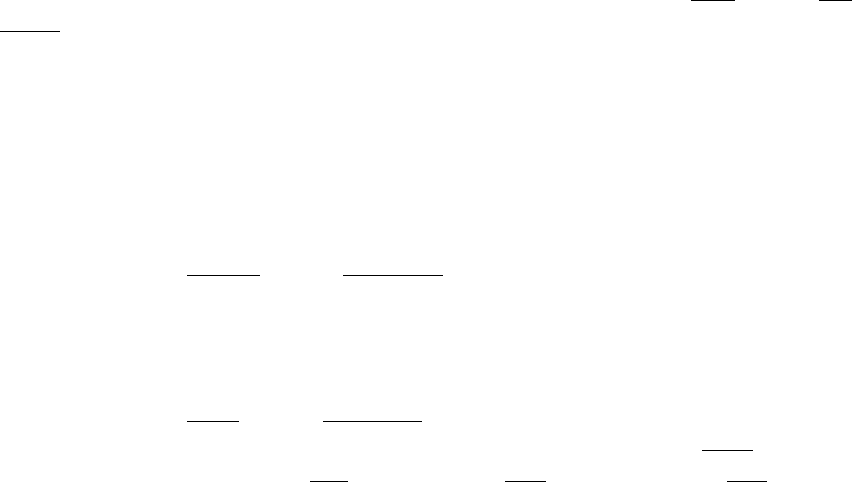
76
Students must come to scheduled competency validation sessions prepared to perform return
demonstrations on all key/core identified skills for the course. Faculty may randomly select a
sample of skills from the list of all key/core identified skills to actually be demonstrated by
individual students.
Students may not perform a skill in the clinical setting until they have successfully demonstrated
competency on the skill. Skills competency validation sessions must be scheduled in order to allow
all students to demonstrate basic and required competency no later than the start of clinical rotation.
Critical procedural steps in each procedure guideline as identified by faculty must be demonstrated
in order to successfully demonstrate competency.
⧫ If a student successfully demonstrates clinical skills competency on the first attempt, full
credit for the competency is earned.
o Should a student fail the first attempt, the clinical faculty will develop a SPS with
the student. The SPS will include a Lab Referral identifying the skills to be
remediated in Open Labs and the due date by which the student must demonstrate
competency to the clinical faculty during a subsequent competency validation
session.
⧫ The student must come prepared to demonstrate competency on all of the skills on the list
of key/core skills for the course. If a student successfully demonstrates clinical skills
competency on the second attempt, full credit for the competency is earned.
o Should a student fail a second attempt, additional remediation will be provided in
the form of individualized instruction by clinical faculty.
⧫ The student must come prepared to demonstrate competency on all of the skills on the list
of key/core skills for the course. If a student successfully demonstrates clinical skills
competency on the third attempt, full credit for the competency is earned.
o If a student fails to demonstrate clinical skills competency on the third (final)
attempt, the student will fail the competency and the clinical course and will be
withdrawn by the Department from the companion theory course and any
corequisite course. A grade of not higher than a C- will be given for the clinical
course; the companion theory course and any corequisite course(s) will show a “W”
on the student’s transcript.
Students’ completed competency checklists will be signed by the instructor and archived in
students’ permanent folders.
Effective Fall Quarter 2017
Clinical & On Campus Lab Uniform & Dress Code
The purpose of this policy is to define standards of dress and appearance for CSUSB Nursing
Students when traveling to and attending clinical experiences and representing the University at
functions on and off campus. A student’s appearance reflects upon the University and the DON.
Students are expected to observe personal hygiene standards and to exercise good judgment in
personal dress and appearance.
77
Uniforms
In order to assure professional appearance during clinical experience, the CSUSB Nursing
Program has adopted a required standard uniform for male and female students. Students will be
given specific information at Orientation regarding ordering uniforms. When choosing size,
remember that students will be carrying many items in pockets during clinical, so it is best to
have uniforms fit loosely rather than snug. For warmth/comfort, students may wear a blue, black,
or white long sleeve under scrub. Use of sweatshirts/jackets are prohibited in clinical settings.
1) Uniforms must be clean and neatly pressed.
2) Uniforms must be worn so that the elastic of the pants is at the student’s waist.
3) The length of the pants should sit at the top of the foot so that it does not drag at the heel.
4) The top must cover the student’s hips Uniforms are to ONLY be worn in clinical and/or
skills/simulation labs and are to be removed prior to attending classes on campus or any public
identity (i.e. restaurant, grocery store, child care, etc.).
Approved APR 2.5.21 FO 2.12.21
Alternate uniform
In order to assure professional appearance during clinical experiences in Psych/Mental Health
Nursing and Community/Public Health Nursing terms, an alternate uniform has been adopted. A
blue CSUSB DON polo shirt with CSUSB black uniform scrub pants are to be worn. Shirts must
be ordered through an approved vendor before the start of the Psych/Mental Health term. All other
items listed below apply to the alternate uniform, as well as the standard uniform.
Patch
CSUSB nursing student uniforms must include a CSUSB identifying patch SEWN on the left
upper sleeve. The CSUSB patch can be purchased at the Coyote Bookstore and is mandatory
on all uniforms and lab jackets. If uniform comes with CSUSB identifying logo, a patch is not
required.
Identification
CSUSB nursing student uniforms must include a CSUSB photo ID badge. Photo ID badges are
mandatory on uniforms at all times. CSUSB Name tag/photo ID badge is purchased at the
Coyote One Card Office and is mandatory to be displayed on uniforms and lab jackets.
Shoes/Hosiery
Black colored hosiery or black socks must be worn with uniforms. Shoes must be all black and
clean. Non-cloth athletic shoes may be worn, but they must be all black - no colored
logos/designs or extra adornments, and black shoelaces. Students are encouraged to buy quality,
well-supporting shoes. Shoes are to have an enclosed toe and low heel for safety. When in
alternate uniform, shoes must be all black with enclosed toe and low heel for safety.
Personal Hygiene
1) Bathing
a. A daily bath or shower and use of a body deodorant are highly recommended.
2) Scents
78
a. The use of perfume, scented lotions, colognes, or aftershave is not allowed due
to possible client sensitivity or allergy.
3) Hair
a. Must be clean and neatly combed
b. Any extreme look or color is not permitted
c. Hair at shoulder length is expected to be up off the shoulder and/or appropriately
styled so that it is away from the face and will not fall forward while performing
normal nursing duties.
d. Long hair must be tied back without excessive ornamentation.
e. Mustaches, sideburns, and/or beards must be neatly trimmed.
4) Nails
a. Nails must be clean and trimmed to a short length that will not place the client
at risk for injury.
b. Nail polish may not be worn.
c. Acrylic, gel, and other artificial nails and nail extensions are prohibited as
they harbor microorganisms that place the client at risk.
5) Makeup
a. Make-up must be kept to a minimum.
b. Artificial eyelashes are not allowed in clinical settings.
6) Jewelry
a. No dangling or hoop-style earrings are allowed.
b. Only one small stud/post-type earring per ear is allowed.
c. Visible body piercing, including tongue jewelry, is NOT allowed.
d. No necklaces, bracelets, pendants, pins, or buttons may be worn.
7) Body Piercing/Art
a. No more than one visible piercing in each ear and those must conform to
the clinical agency’s dress code.
b. No jewelry/hardware may be evident other than one small stud per ear.
c. Tattoos must be covered at all times.
Adherence to the Dress Code is mandatory for ALL clinical experience. This includes
hospital/agency setting, skills lab and SIM lab setting.
Inappropriate dress/hygiene will be handled by requiring the student to immediately change or
leave the site.
STUDENTS WILL RECEIVE A MODIFIED ASSIGNMENT FROM CLINICAL (ON OR OFF
CAMPUS) IF NOT IN REQUIRED ATTIRE. THIS WILL CONSTITUTE AN UNEXCUSED
ABSENCE. This includes make-up hours.
Attire for on-campus Laboratory
Must follow uniform policy above. Should an on-campus lab activity require that the uniform not
be used, it is extremely important for students to be protectively and appropriately dressed during
such on-campus laboratory practice exercise(s) for safety and privacy.
Shoes must be closed and low heeled. No sandals or thongs are permitted. Hair must be up and
off the shoulders. If shorts are worn, it will be necessary for them to be at least mid-thigh or
Bermuda length to ensure adequate protection and privacy during practice exercises. No exposed

79
midsections or cleavage. Supportive undergarments are recommended for all laboratory
activities. Inappropriate attire will preclude your participation in class activities.
Copying or Transmitting Client Records/HIPAA
The Patient Bill of Rights identifies the clients’ right to confidentiality. The CSUSB DON
Student Policy and Procedure Manual addresses safeguarding the confidential information
acquired from any source regarding clients and considering all information obtained. The
client’s status is strictly confidential and is not to be discussed with anyone except instructors,
student peers, and significant hospital personnel in the appropriate settings.
The Health Insurance Portability and Accountability Act (HIPAA) privacy rules are designed to
protect the way client information is stored, conveyed and revealed.
Hospital guidelines exist to safeguard the security of client data that is electronically
transferred (e-mail, fax, etc.). Specific clinical facility policies and procedures will be
discussed.
To assure compliance with HIPAA and facility regulations, learners in the nursing program
at CSU, San Bernardino will not be permitted to duplicate any portion of a patient’s medical
record in any clinical setting by any means at any time.
Students will not electronically transmit any portion of a client’s medical record.
Failure to abide by this policy will result in dismissal from the nursing program, without
benefit of a SPS.
Students will watch the “Privacy, Security, and You: Protecting Patient Confidentiality
Under HIPAA” video and sign the Health Insurance Portability and Accountability Act
(HIPAA) Education form during their first clinical and at the start of every Fall term
thereafter.
Social Media Network Guidelines and Policy
The increasing use of social media and other electronic communication by nurses and nursing
students provides opportunities for dissemination of health care related information. Utilization of
social media networks must be done in a manner that protects patient privacy and confidentiality.
Any patient information learned by the nurse/student nurse during the course of treatment is
considered confidential and must be protected. Inappropriate disclosure of confidential information
is a breach of the patient-nurse relationship and damages the individuals involved as well as the
general trustworthiness of the nursing profession. Improper use of social media by nurses/student
nurses may result in disciplinary action by the Board of Registered Nursing, civil and criminal
penalties, and employment consequences, National Council of State Boards of Nursing, 2011.
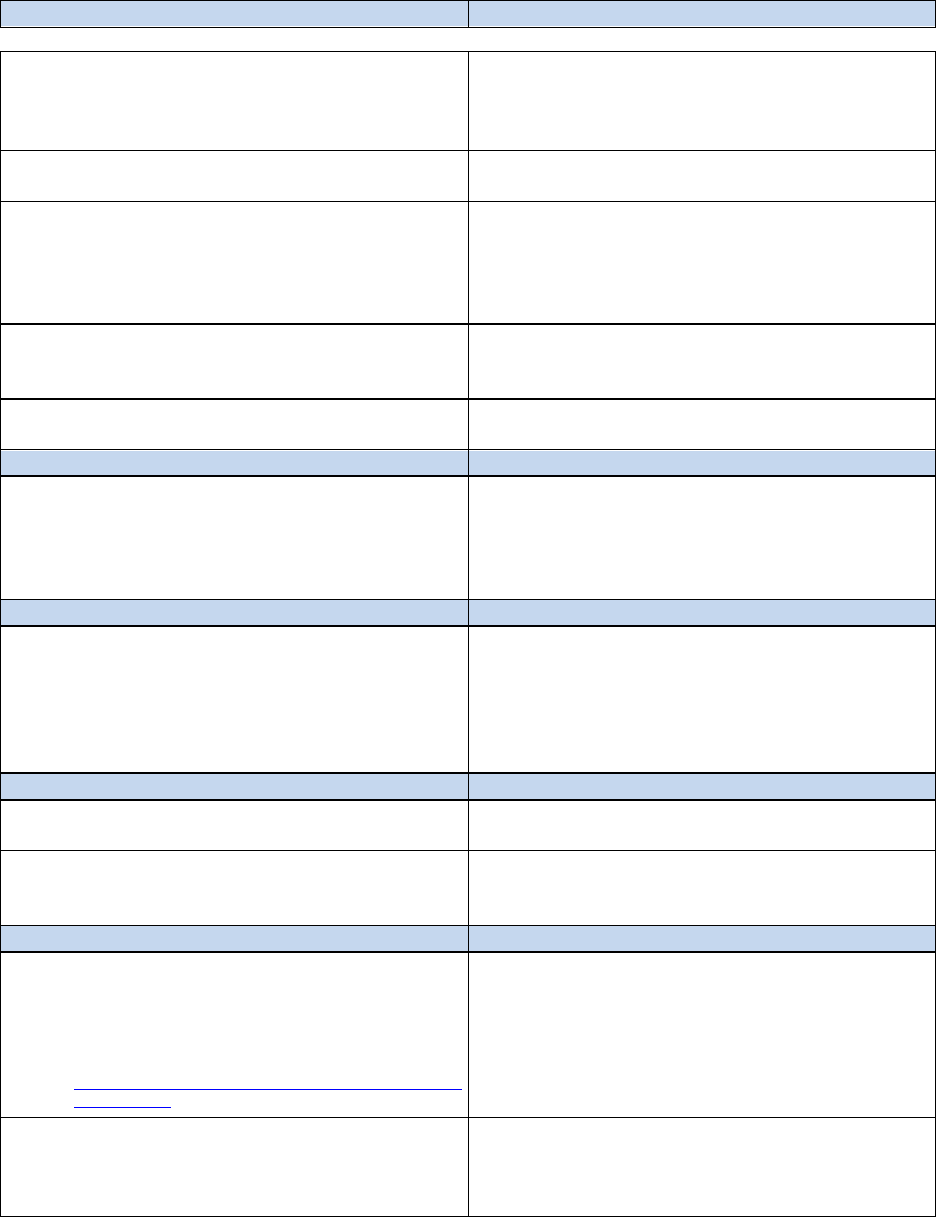
80
Criteria for Unsafe Clinical Practice
Criteria for Unsafe Clinical Practice may include, but is not limited to the following:
Safety (S)
Examples
A. Violates or threatens the physical safety of the
client.
Comes unprepared to clinical; injures a client; fails
to properly position client; does not appropriately
utilize side rails/restraints; functions under the
influence of substances affecting performance.
B. Violates or threatens the physical safety of the
client.
Repeatedly uses non-therapeutic techniques;
attacks/degrades the individual’s beliefs or values.
C. Violates or threatens the microbiological
safety of the client.
Fails to recognize and correct violations of medical
asepsis technique/sterile technique; does not wash
hands appropriately when caring for clients; does not
maintain standard precautions or isolation
precautions.
D. Violates or threatens the chemical safety of
the client.
Violates any of the 5 rights of medication
administration; fails to accurately prepare, calculate,
and monitor IV infusions.
E. Violates or threatens the thermal safety of
the client.
Fails to observe safety precautions during 02
therapy; injures client with hot or cold applications.
Nursing Process (NP)
Examples
Inadequately and/or inaccurately:
A. Assess the client.
B. Plans the care for the client.
C. Implements therapeutic interventions.
D. Evaluates client care.
Unable to identify basic human needs; fails to
observe/report/chart critical client data; uses poor
judgment and/or makes decisions resulting in
ineffective nursing care.
Skills (SK)
Examples
A. Unable to perform expected clinical
performance objectives and/or skills.
First year student fails to obtain accurate vital sign;
second year student fails to maintain sterile
technique; unable to verbalize key information
previously covered in lab and/or class; third year
student unable to manage and/or prioritize multiple
client assignment.
Decision Making (DM)
Examples
A. Assumes inappropriate independence in
action or decisions
Performs procedures not yet evaluated; fails to
appropriately seek assistance.
B. Fails to recognize own limitations,
incompetence and/or legal
responsibilities.
Refuses to admit error; fails to complete assigned
nursing responsibilities, cannot identify own legal
responsibility in specific nursing situations.
Professional Accountability (PA)
Examples
A. Fails to accept ethical and legal
responsibility for his/her own actions thereby
violating professional integrity as expressed
in the NSNA Code of Academic and Clinical
Conduct
https://www.dropbox.com/s/a229ong58d5jx4p/Code%20of%20
Ethics.pdf?dl=0
Fails to conduct self in professional manner; falsifies
records; does not follow school/hospital policies and
procedures; participates in cheating and/or plagiarism.
B. Violates client confidentiality
Removes printed or electronic (includes photos of
patient information) client data from the facility;
shares client information with individuals outside
the health team.
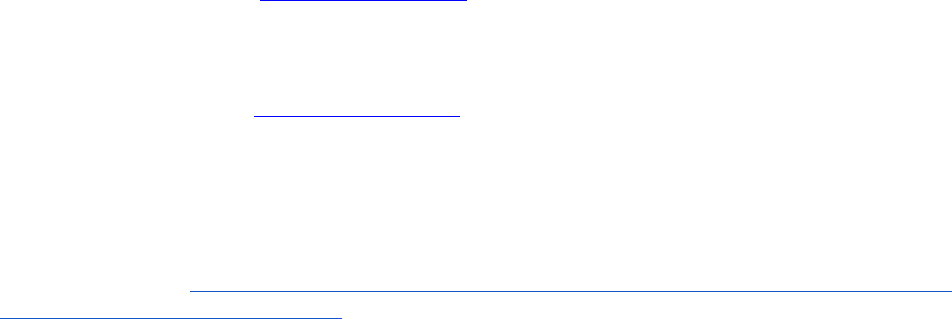
81
Delivery of Health Care
The BRN and the DON supports the right of all consumers to receive dignified and competent
health care consistent with the law and prevailing standards of care, including the right to
participate in and make decisions regarding their health care. The BRN also supports the right of
the nurse to know the patient’s diagnosis/suspected diagnosis in a timely fashion in order to make
an appropriate nursing care plan.
The American Hospital Association has adopted the Patient Bill of Rights. This document is
presented in all entry level nursing courses. Exam questions assess the student’s level of
understanding of this document. The Patient’s Bill of Rights states, “The client has the right to
considerate and respectful care.” Additionally, the DON supports the right of all consumers to
receive dignified and competent health care, as outlined in Section 1443.5 of the
Administrative Code.
Failure to care for a client, based on the client’s disease process violates this right. Nurses and
student nurses do not have the right to refuse treatment of a client; because of the client’s
disease process. Failure to accept a client assignment as a student nurse may be interpreted as
insubordination and grounds for immediate dismissal from the nursing program.
Patient Abandonment
When the student accepts a patient assignment and establishes the nurse patient relationship,
leaving this assignment, without permission and no arrangement for the continuation of nursing
care is considered “patient abandonment”. Patient abandonment jeopardizes the patient’s safety
and is grounds for dismissal. (Refer to BRN policy on Abandonment in the appendices).
The DON faculty and program students are not expected to take life- threatening risks in caring
for clients. Decisions regarding the degree of risk involved in client care should be based on
current scientific knowledge. Students, in the role of health care provider, have a right to take
any and all necessary precautions to minimize the risk of contracting or spreading disease. In the
event that inconsistent implementation of necessary precautions presents a risk for the student or
faculty person, the clinical instructor and the student will carefully evaluate the benefit versus
the risk of the assignment.
Infection Control
The implementation of infection control procedures known as standard precautions is basic in all
health care. Standard precautions are regarded by the BRN as a common standard of nursing
practice necessary to protect both patients and health care workers from disease transmission.
Failure to adhere to the appropriate proper procedure may result in failure of the course and/or
removal from the program https://www.cdc.gov/
Communicable Disease
Information on issues related to communicable disease is available from the U.S. Centers for
Disease Control (CDC) and from agencies in the State Department of Health Services and County
and City Health Agencies https://www.cdc.gov/
Standard Precautions
Medical history and examination cannot reliably identify all clients infected with viral or other blood
borne pathogens. Therefore, blood and body-fluid precautions should be consistently used for all
clients. This approach is referred to as “universal blood and body-fluid precautions” or “standard
precautions”, and is recommended by the DON faculty in conjunction with the Centers for Disease
Control https://www.cdc.gov/oralhealth/infectioncontrol/summary-infection-prevention-
practices/standard-precautions.html
82
1) All nursing students and faculty should routinely use appropriate barrier precautions to
prevent skin and mucous-membrane exposure when contact with blood and or other body
fluids of any client is anticipated.
2) Gloves should be worn when touching blood, blood products, mucous membranes, and body
fluids (urine, feces, saliva, and wound drainage). For your convenience, it is recommended
that you carry a pair of gloves in your uniform pocket at all times.
3) Gloves should be changed after contact with each client.
4) Hand hygiene should be performed prior to and immediately after every client contact, even
when gloves are worn. It should also be performed before and after gloving. Hands or other
skin surfaces should be washed immediately and thoroughly if contaminated with blood or
other body fluids. Hands must also be washed before and after practicing each procedure
involving another person as a client.
5) As there is increasing evidence from the CDC that artificial nails are more likely than natural
nails to harbor pathogens that can lead to nosocomial infections, artificial nails and nail
extenders may not be worn in clinical areas.
6) Masks and protective eyewear or face-shields must be worn during procedures that are
likely to generate droplets of blood or other body fluids to protect exposure of mucous
membranes of the mouth, nose, and eyes.
7) Gowns or aprons should be worn during procedures that are likely to generate splashes
of blood or other body fluids. Contaminated gowns are to be discarded per hospital
policy.
8) Disposable articles contaminated with blood, blood products, wound drainage or
body secretions/excretions should be disposed of per hospital policy.
9) All nursing students and faculty should take precautions to prevent injuries caused by needles,
scalpels, and other sharp instruments or devices during procedures; when cleansing used
instruments; during disposal of used needles; when handling sharp instruments after
procedures.
10) To prevent needle-stick injuries, needles should not be recapped, purposely bent or broken
by hand, removed from disposable syringes, or otherwise manipulated by hand.
11) After they are used, disposable syringes and needles, scalpel blades, and other sharp
items should activate safety devices and be placed in puncture-resistant containers for
disposal.
12) Nursing students or faculty who have open lesions or weeping dermatitis may be required
to utilize appropriate protective measures (such as double gloving) or, depending on the
extent and location of lesions, refrain from all direct client care and from handling
equipment until the condition resolves.
13) Although saliva has not been implicated in HIV transmission, minimize the need for
emergency mouth-to-mouth resuscitation by making resuscitation bags, mouthpieces and
ventilation devices available in client care areas where the need for resuscitation is
predictable.
14) Although pregnancy is not known to create a greater risk of contracting HIV infection, health-
care providers who develop HIV infection during pregnancy may place the infant at risk of
infection resulting from perinatal transmission. Additionally, several of the opportunistic
diseases associated with HIV infection may be hazardous to the unborn fetus. For these

83
reasons students and faculty who are pregnant should refrain from direct care of patients with
known HIV infection.
Student Needlestick/Blood & Body Fluid Exposure Guidelines
In order to establish the requirements for preventing potential exposure to blood-borne pathogens
through compliance with guidelines from the Center for Disease Control (CDC), Federal
Occupational Safety and Health Administration (OSHA), 29 CFR 1910.1030
https://www.osha.gov/laws-regs/regulations/standardnumber/1910/1910.1030 , (Appendix II-A)
and the California OSHA, 8 CCR 5193 https://www.dir.ca.gov/title8/5193.html , the following
procedure has been implemented.
Students who sustain exposure to blood or body fluids or come in contact with a needle stick
or sharp object injury will report the incident, be assessed and treated. (Report must be
completed).
1) Definitions
a) Blood-borne Pathogens
i) Certain pathogenic microorganisms found in the blood of infected individuals
that can be transmitted from the infected individual to through blood and
other body fluids to cause blood-borne diseases specifically Hepatitis B Virus
(HBV), Hepatitis C (HCV), and AIDS Human Immunodeficiency (HIV).
b) Exposure Incident
i) Contact with eye, mouth, or other mucous membrane, non-intact skin, or
parenteral (needle) contact with blood or other potentially infectious
materials that may occur in the performance of duties.
c) Infectious Waste
i) Includes blood, blood products, contaminated sharps (needle, etc.),
pathological waste, and microbiological waste.
d) Standard precautions:
i) Handle all blood and body fluids as if they are infectious.
ii) Use personal protective equipment (i.e. gloves, gowns, and face
protection) to prevent contact with blood and body fluids.
iii) Wash hands before contact and after glove removal.
e) Engineering Controls
i) Use sharps with engineered safety features for venous access,
venipunctures and parenteral injections.
ii) Pick up all contaminated glass and needles with forceps or another tool to
avoid hand contact.
iii) Place puncture resistant sharps containers in patient and procedure rooms.
f) Work practice controls
i) Always use and activate sharps safety devices.
ii) Do not pass contaminated sharps from one person to another.
iii) Assure you have a stable work surface and sharps container available.
iv) Assess client before procedure, obtain assistance for uncooperative,
combative, or confused clients.
84
2) Procedure
a) Precautions to prevent needle sticks and body fluid exposure include:
i) Standard precautions must be followed at all times.
ii) Engineering controls must be used at all times.
iii) Work practice controls must be followed at all times.
iv) Students are never to recap needles and must discard used needles in
the sharps disposal container provided in the skills lab or clinical
facility.
v) When breaking ampules, students must protect their fingers by using a
gauze covering or an alcohol wipe or safety cover and should break the
ampule in the opposite direction of their, and others, face.
vi) Gloves are worn by students and faculty during any contact with body
fluids.
vii) All students and faculty will practice proper hand washing.
viii) There shall be no drinking or eating in any practice area.
ix) Exposure guidelines of the clinical agency must be followed.
b) After a needlestick and/or body fluid contamination exposure, the student will:
i) Identify the client by name and location.
ii) Request the client to stay if the client is an outpatient of the agency.
iii) Request another nurse or student to stay with the client, if possible.
iv) Wash the exposed area as soon as possible.
v) Report the incident to the clinical instructor immediately for
determination of possible blood-borne disease exposure.
vi) If the clinical instructor cannot be found, the student should
immediately inform the charge nurse.
vii) Upon exposure, the student will notify (1) the clinical instructor, (2) the
Employee Health Nurse within the clinical facility (if exposure occurs
outside the CSUSB nursing laboratory), (3) the/ Chief Nurse
Administrator (CNA) of the CSUSB Nursing Department, Program
Director, and the Compliance Coordinator (4) the skills lab coordinator, as
appropriate.
viii) Setting for exposure:
(1) CSUSB nursing laboratory:
(a) Students will complete the “Student/Faculty Incident Report” form.
(b) Students will report to the Student Health Center, appropriate
agency, or personal physician depending upon the nature of
exposure.
(2) Clinical site:
(a) Complete the appropriate form(s) and follow all procedures for
that institution and the “Student/Faculty Incident Report” form.
This might include reporting to the nearest emergency room
department for examination and treatment before leaving the
clinical site.

85
(3) Any incident occurring in the Skills, or during on and off campus
clinical times must be reported to the faculty, Compliance
Coordinator, Department Chair / Chief Nurse Administrator,
Program Director, and Skills lab coordinator (as appropriate)
within 24 hours.
(4) Incident Report must be submitted to CNA or Program Director
within 24 hours of the incident.
ix) Follow-up care may include sero-screening, HIV testing,
Hepatitis B vaccine administration and postexposure immuno-
prophylaxis (immune globulin).
x) Costs for immediate and follow-up care are the responsibility
of the student.
3) Resources
a) Environmental Health and Safety https://www.csusb.edu/ehs
b) California Healthcare Association’s Publication: The California Guide to
Preventing Sharps Injury
Nursing Students Post Blood Exposure/Needle Stick Procedure
When students are exposed to potentially contaminated blood during a course or clinical
experience, they should seek care immediately. Ideally the person would start Post Exposure
Prophylaxis (PEP) within 2 hours of exposure, unless contraindicated.
Per the Centers for Disease Control (CDC):
● PEP (post-exposure prophylaxis) means taking medicine to prevent HIV after a possible
exposure. PEP should be used only in emergency situations and must be started within 72
hours after a recent possible exposure to HIV to be effective.
● The sooner you start PEP, the better.
● If you are prescribed PEP, you will need to take it daily for 28 days. PEP is safe but may
cause side effects like nausea in some people.
● In almost all cases, these side effects can be treated and are not life-threatening.
Per CDC, standard precautions dictate that health care workers must assume that blood and other
body fluids from all patients are potentially infectious.
Steps
The student will:
1. Wash the affected area with soap and water.
2. Notify your clinical instructor or the faculty supervising you at the site of the event.
3. In a clinical setting, follow the institution’s protocol for treatment.
4. If the facility or field site does not have a protocol go to an emergency room doctor, or an
urgent care provider about PEP if you think you recently have been exposed to HIV or other
bloodborne pathogen. It is important that you are seen that day to start treatment.
5. Complete and submit DON Incident or Near Miss Policy report and applicable clinical site
incident report.
Paying for PEP

86
● If your insurance does not cover PEP, your health care provider can apply for free PEP
medicines through the medication assistance programs run by the manufacturers.
● These requests for assistance can be handled urgently in many cases to avoid a delay in
getting medicine.
● Examples of enrollment applications on the CDC website
https://www.cdc.gov/hiv/basics/pep/pep-workplace.html
Reference
● DeHaan E. Post-Exposure Prophylaxis (PEP) to Prevent HIV Infection [Internet]. Baltimore
(MD): Johns Hopkins University; 2020 Jun. Available from:
https://www.ncbi.nlm.nih.gov/books/NBK562734/
Approved APR 4.30.21 FO 05.07.21
Gloving (Latex Sensitivity) Policy
In the first term of the nursing program, Latex-sensitive students need to present a letter from a
physician documenting the latex sensitivity and the treatment that will be required in the event
of an adverse reaction prior to engaging in any clinical or laboratory practicum. The student
must keep the emergency medications with them at all times when involved with school
related functions or school related activities throughout the entire nursing program.
Latex-sensitive students will use only non-latex supplies. Latex free gloves must be provided
by the student during the on-campus laboratory practicum. During clinical, students may use
hospital latex-free gloves supplied by the hospital.
All students with evidence of latex sensitivity will be responsible for obtaining and wearing a
medical alert bracelet, carrying non-latex gloves and emergency medical instructions,
including emergency medications if applicable.
Latex sensitive students will need to be evaluated by faculty on a case-by-case situation to ensure
student health safety.
Hand Hygiene Policy: https://www.cdc.gov/handhygiene/index.html
1) Improved adherence to hand hygiene (i.e., hand washing or use of alcohol-based hand
rubs) has been shown to terminate outbreaks in health care facilities, to reduce
transmission of antimicrobial resistant organisms (e.g. methicillin resistant
staphylococcus aureus) and reduce overall infection rates.
2) In addition to traditional hand washing with soap and water, the Centers for Disease
Control (CDC) is recommending the use of alcohol-based hand rubs by health care
personnel for patient care because they address some of the obstacles that health care
professionals face when taking care of patients.
3) Hand washing with soap and water remains a sensible strategy for hand hygiene in
non-health care settings and is recommended by CDC and other experts.
4) When health care personnel’s hands are visibly soiled, they should wash with soap and
water.
5) The use of gloves does not eliminate the need for hand hygiene. Likewise, the use of
hand hygiene does not eliminate the need for gloves. Gloves reduce hand contamination
by 70 percent to 90 percent, prevent cross-contamination and protect patients and health
87
care personnel from infection. Hand rubs should be used before and after each patient
just as gloves should be changed before and after each patient.
6) When using an alcohol-based hand rub, apply product to the palm of one hand and
rub hands together, covering all surfaces of hands and fingers, until hands are dry.
Note that the volume needed to reduce the number of bacteria on hands varies by
product.
7) Alcohol-based hand rubs significantly reduce the number of microorganisms on
skin, are fast acting and cause less skin irritation.
8) Health care personnel may not wear artificial nails and must keep natural nails
less than one quarter of an inch long.
Loss of Clinical/Lecture Due to Public Emergency
The goal of all required clinical time is the meeting of clinical competencies as cited in the course
description &/or syllabus. In cases of situations of publicly proclaimed (local, community, federal,
Centers for Disease Control) emergencies affecting clinical/class time, the faculty will make every
effort to assist students in obtaining the clinical/class time required to meet competencies.
The clinical time, during these times of emergencies can be made up by the following activities:
1) Skills lab
2) Small group activities
3) Simulated lab time (that may exceed the generally allotted time)
4) Special make up activities
5) Research activity
6) Scenarios with assessment and/or care planning activity
7) Assessment of a movie containing course content topics
In cases of a campus closure due to a campus specific event, students and faculty are to report to
off campus clinical as scheduled.
For lecture time, during a campus closure student are expected to:
1) Check CSUSB LMS or email for further instruction related to how class will be
administered
For clinical time, during a campus closure students are expected to:
1) Check with clinical instructor/course
2) Check CSUSB LMS or email for further instruction related to how class will be
administered
3) Attend clinical unless hospital/agency conditions prohibit.
Faculty will post information as soon as reasonably possible, depending on type of emergency,
length of time and available resources.
Medication Calculation Competency Policy
Students are expected to demonstrate medication calculation competency in all clinical courses
requiring medication administration.
Medication calculation competency validation across the curriculum will test the ability to calculate
oral and parenteral doses of medications and intravenous infusion rates. Medication calculation
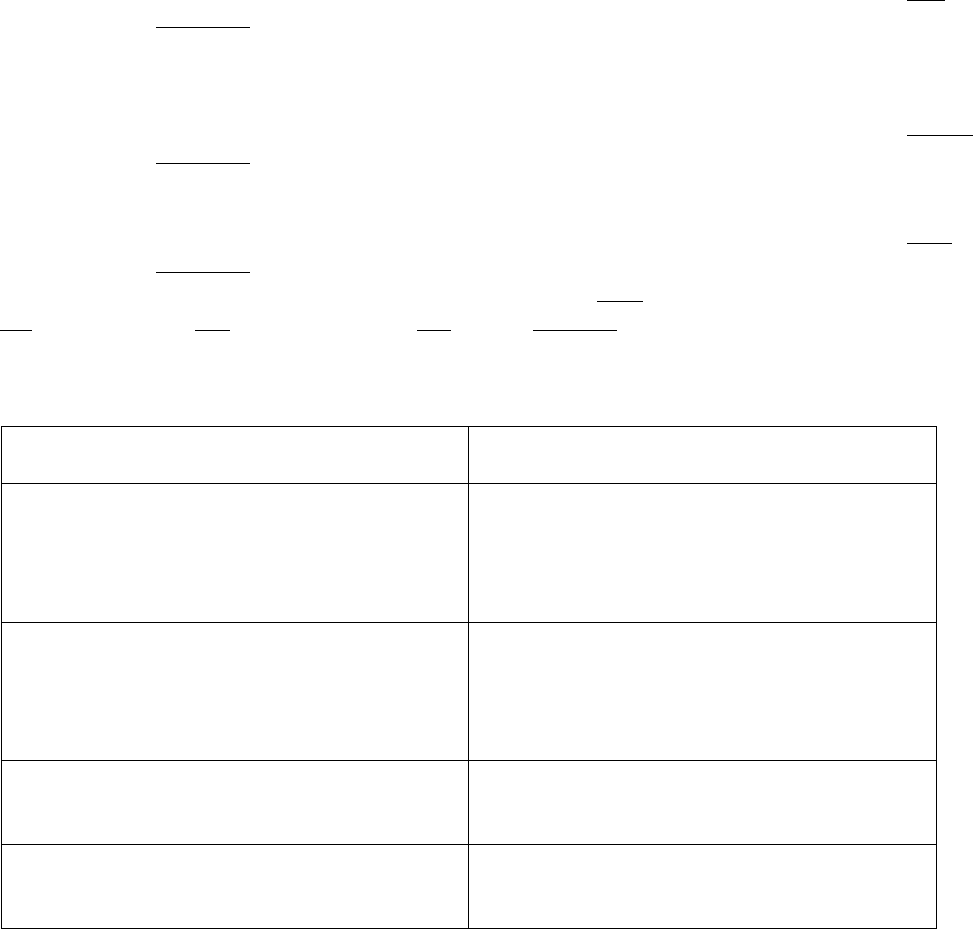
88
competency validations will be 10 items in length. The primary focus for the competency validation
in each clinical course will be the topics listed in Appendix A to this policy. The passing score for
medication calculation competency validations is 100%.
Medication competency must be demonstrated before a student begins direct patient care in the
clinical course.
Students will have a maximum of three (3) attempts to achieve 100% on a medication calculation
competency validation. Competency validation re-takes must be taken not less than 24 hours after the
previous attempt, to allow for meaningful remediation by the student.
● If a student successfully passes a medication calculation competency validation on the first
attempt, full credit for the competency is earned.
o Should a student fail the first attempt, the clinical faculty will develop a SPS with the
student. The SPS will include remediation activities such as practice calculation and
conversion exercises/questions that the student must answer/complete.
● If a student successfully passes a medication calculation competency validation on the second
attempt, full credit for the competency is earned.
o Should a student fail a second attempt, additional remediation will be provided in the
form of individualized instruction by clinical faculty.
● If a student successfully passes a medication calculation competency validation on the third
attempt, full credit for the competency is earned.
If a student fails to pass a medication calculation exam on the third (final) attempt, the student will
fail the competency and the clinical course and receive no credit in the companion theory course. A
grade of C- will be given for both the clinical and the companion theory course and the student must
withdraw from both courses immediately.
Clinical Course
Focus of the Medication Calculation
Competency Assessment
NURS 3221 Nursing Care Adults/Older
Adults I
Oral & enteral medications
Injectable preparations including intradermal,
subcutaneous and intramuscular injections
Calculation of intravenous flow rates for
continuous and intermittent IV administration
NURS 3635 Nursing Care Women, Infants, &
Families
Injectable medications, esp. insulin and
magnesium.
Continuous and intermittent IV infusion flow
rates, including titration of medications,
loading doses, and fluid boluses.
NURS 3633 Nursing Care Children &
Families
Injectable medications, esp. insulin
Drug calculations per kilogram body weight,
both per day and per dose
NURS 4415 Psychiatric & /Mental Health
Nursing Practice
Oral and injectable medications, including
emergency psychotropic medications such as
haloperidol/Haldol)

89
NURS 4833 Nursing Care Adults/Older
Adults II
Injectable medications
IV flow rates including primary and
secondary infusions, calculating infusion rates
per hour and minute considering
concentration & volume, in units, milligrams,
micrograms, and by body weight
NURS 4417 Comm & Public Health Nursing
Practice
Injectable medications, esp. intradermal and
IM routes (e.g., TB skin tests, immunizations)
Reviewed & revised 01/05/17 with language finalized 01/16/17; revised 5.11.18
Medication Administration Guidelines
Students are not to administer medications independently. Medications may only be administered
with Nursing Instructor except during Leadership rotation, in which case a Clinical RN/Preceptor,
RN, may supervise.
Utilizing drug reference: be prepared to independently review the following information on each
drug prior to administration:
⧫ Medication name, both brand and generic
⧫ Pharmacokinetics and pharmacodynamics
⧫ Reason for use in this patient’s case
⧫ Verify safe dosage range
⧫ Major side effects
⧫ Nursing implications and special instructions for administration
Students are expected to check the appropriate lab values associated with all medications
including but not limited to:
⧫ Heparin/Coumadin (P.T.T., P.T./INR)
⧫ Insulin (FBS)
⧫ Gentamycin/Tobramycin (Gentamicin level/Creatinine BUN)
⧫ Digoxin (Dig level)
⧫ Furosemide (K+ level)
⧫ Potassium (K+ level)
⧫ Theophylline/Aminophylline (Serum Theo/Aminophylline level)
⧫ Thyroid (T3, TSH, T4)
⧫ Dilantin (Dilantin level)
⧫ Phenobarbital (Phenobarbital level)
⧫ Vancomycin (Vancomycin level/ Creatinine BUN)
Students are to clearly communicate to staff nurse the meds the student is administering.
Please Note: If the instructor is unavailable and the medication administration is going to be
late, greater than 30 minutes, the student is to inform the staff nurse to give the medication.
90
1) Students in all clinical courses are expected to administer medications in the clinical
setting, after medication administration competencies, including drug calculation exam,
are validated. Exceptions: some psychiatric health and mental health clinical sites do
not allow medication administration.
2) Prior to administering any medications, each student must satisfactorily
demonstrate fundamental knowledge and skills competency in the
laboratory setting on campus or designated site.
3) Students will be required to take a medication examination in many terms,
encompassing the mathematical calculations and conversion measurement systems
for the accurate calculation of medication dosages.
4) Depending upon the course, students will be required to
a) Take an examination of the didactic knowledge needed in that term to prepare the
medication (i.e., 3 checks/8 rights, whether a medication can safely be crushed)
Assess the client (i.e., pertinent history, physical exam, lab values before and after
administration)
b) Ensuring current protocols/standards of care of administration (i.e., 3 checks, 8 rights,
I.V. complications, blood administration) and medication information (i.e., name,
dose, side effects).
Students must earn a score of 100% on medication examinations and are given three
opportunities to meet this expectation. Remediation (for students that do not earn 100%) will be
provided in the form of
⧫ individualized or group interaction instruction
⧫ self-learning packet
⧫ web-based instruction
⧫ textbook assignment
⧫ other as chosen by the course coordinator.
Students will also be required to perform return demonstrations of the fundamental skills
encompassing safe medication administration (i.e., PO/NG, topical applications, eye/ear drops,
opening ampules, reconstituting meds, insulin mixing, spiking/priming IV tubing, intradermal,
subcutaneous, intramuscular, and intravenous injections). Under the supervision of the clinical
instructor, the student must demonstrate complete competency in drug administration first in the
learning laboratory setting or other approved alternate site, followed by the clinical setting.
Competency includes administration skill, as well as both verbal and written evidence of
understanding for each medication classification used in the clinical setting (refer to Procedure
below).
Students are not to administer any medications unless medication administration competencies,
including drug calculation exams are validated.
Students in the second term of nursing school will be expected to administer medications orally,
intramuscularly, intradermally, subcutaneously, and via topical route. Students are not to
administer any intravenous medications during this term.
91
Students in the third term of nursing school and in successive terms will be expected to
administer all medications, including intravenous medication. Students are not to administer any
blood product. Students may assist the RN in carrying out nursing care specific to blood product
administration (i.e. monitoring vital signs, assessing for adverse reaction to blood product
administration and evaluation of effectiveness).
Medication errors are defined as any error related to the eight rights of medication
administration. After a medication error has been identified, the student must immediately report
the incident to the staff nurse, the clinical instructor, the physician and the nurse manager.
Failure of the student to report any and all clinical errors will result in dismissal from the
program.
1. Students must complete an agency incident report and a CSUSB DON Incident or Near
Miss form with the clinical instructor.
2. A copy of the incident report will be placed in the students’ file and the original will
be sent to the nursing Department Chair, immediately.
3. A medication error may result in failure from the course and/or dismissal from the
program.
Procedures:
1) The student must complete a medication card with the information individualized for the
client being attended. That information will include: generic/trade name, therapeutic and
pharmacologic classification, indication, action, onset, peak, duration, contraindications,
precautions, adverse reactions, side effects, potential interactions with client’s other
medications, route, dosage, and nursing implications before and after medication
administration, including patient and family education and documentation.
a) Different clinical courses will require different forms of “medication cards” but the
information needed remains the same.
2) This information must be presented to the faculty prior to administration of the
medication.
3) The student must follow the agency’s policies surrounding administering and
documenting medications. This information will be given to the student via printed or
oral communication during orientation to the clinical facility.
4) The student administers medications only to client(s) that are assigned to or chosen by the
instructor. The student only administers medication he/she has prepared.
5) If more than one patient is assigned or chosen, the student is to prepare medications for one
patient at a time.
6) Students must prepare and administer all medications (intramuscular, oral, topical, and
intravenous) each and every time in the physical presence of the clinical instructor.
Instructors must directly supervise every step of the preparation and administration of
medications.
7) In the ninth term, the student’s Clinical RN/Preceptor, designated by the facility, will
directly supervise the student in every step of the preparation and administration of
medication.
92
Faculty and Student’s preparation phase: Med check # 1
1) Obtain Medication Administration Record (MAR).
2) Check MAR with the original order.
3) Check the medication drawer for each medication listed on MAR; check expiration date.
4) Review each medication for 8 rights. (Additional rights may be defined by clinical
agency policy)
5) Request any missing medications from the pharmacy.
6) Gather medications. Never leave medications unattended or medication cart unlocked.
Faculty and Student preparation phase: Med check # 2
1) Place medications (leaving in original container or packaging until checked by faculty)
due for administration on EMAR: top to bottom sequence.
2) Students must present assessments related to medication administration to faculty (i.e. BP,
HR, INR, PT/PTT, labs). Many assessments must be performed immediately before
medication administration (i.e. apical pulse).
3) Students prepare injectable or IV meds with direct faculty observation.
4) Heparin/insulin dosages are to be verified by two licensed nursing personnel following the
agency’s policy.
Student and Faculty administration phase: Med check # 3
1) Med check # 3 occurs at the bedside with the MAR: students must review each medication
with the client, going through 8 rights. At this point, oral medications are to be opened or
poured. (If medication is to be prepared for NG or GTT administration, med check #3 would
occur at the med cart with an appropriate crushing device.)
2) The student/faculty must confirm a patient's identification with two methods per JCAHO
requirements (i.e. patient ID bracelet, medical record number, and birth date).
3) The student/faculty must confirm a patient's allergies by asking the patient if they have any
allergies and/or assess chart’s information (particularly for patients that are unable to verbally
respond).
4) The student/faculty will always witness the client swallow oral medication and verify by
looking in the mouth, if necessary. Never leave medications unattended or medication
cart unlocked in client’s room.
5) Faculty must accompany the student at the bedside for all medications.
Documentation phase
1) Students will follow the agency's policy regarding MAR documentation.
2) Usually, the policy is:
i) Documentation occurs at the time of or immediately following
medication administration. Never before administration.
93
ii) EMAR documentation: Scan client’s identification bracelet and each
medication individually prior to administration then file after medication is
given.
iii) A paper MAR is to be signed by students with their first initial and last name
followed by the abbreviation, “SN, CSUSB”. The faculty will also sign for the
medications given with the student using the abbreviation “RN, CSUSB” following
their name. Initials are placed next to the time the medication was given or per
hospital policy.
iv) Students should provide appropriate objective data on MAR, if applicable (i.e.
BP, HR, labs)
v) Fluid intake must be recorded for clients being monitored.
vi) Focus charting must be completed with as needed (PRN) medications (i.e.
pain medications)
Narcotics
1) Students may only obtain narcotics in the presence of faculty.
2) Narcotic count for the medication to be given is completed by the faculty and student nurse
and signatures of all individuals must be documented.
3) Students are not permitted to set up or refill PCA/PCE equipment.
Health Fair Medication Administration
Students that participate in “Health Fairs” in which multiple medication administrations may
occur (i.e., “Flu Shots”), the following procedure must be adhered to:
1) The student must not administer medication by a route that has not been learned in their clinical
courses.
a) The student must complete a medication card with the information individualized for
the client being attended. That information will include: generic/trade name,
therapeutic and pharmacologic classification, indication, action, onset, peak, duration,
contraindications, precautions, adverse reactions, side effects, potential interactions
with client’s other medications, route, dosage, and nursing implications (i.e.
assessment [history, physical examination, lab results, etc.], implementation [how to
administer], teaching, and evaluation [history, physical examination, lab results,
etc.]).
(1) Different clinical courses will require different forms of “medication cards”
but the information needed remains the same.
2) This information must be presented to the faculty or designee prior to administration of the
medication.
3) The student must follow the agency’s policies surrounding administering and documenting
medications. This information will be given to the student via printed or oral communication
during orientation to the “health fair” site. When signing the documentation, the student will sign
94
with their first initial and last name followed by the abbreviation, “SN, CSUSB”, or in a manner
prescribed by the agency.
4) Students must review administration skill(s) of the medication(s) in the physical presence of the
clinical instructor or designee and show competence of skill.
5) Instructors must directly supervise every step of the preparation and administration of
medications.
6) Review each medication for 8 rights.
1. Right Client
2. Right Medication
3. Right Dose
4. Right Time
5. Right Route
6. Right Reason/Education
7. Right Documentation
8. Right Response
7) The student is to confirm the client's allergies by asking the client if they have any allergies
and/or assess health information (particularly for patients that are unable to verbally respond).
a) The student will witness the client swallow oral medication and verify by looking
in the mouth, if necessary. Students must never leave medications unattended.
IV Push Policy
Students may administer IV push medications under the following circumstances:
(1) Under the direct supervision of the nursing instructor, and/or Clinical RN/Preceptor,
registered nurse in the leadership experience.
(2) All medication administration must follow CSUSB DON Policy for
medication administration.
(3) All IV pushes must meet each clinical facility and/or unit’s policy and procedures.
(4) Following a complete nursing assessment, prior to and within ten minutes
of administration, learners must trend client assessment data.
Under no circumstances are students allowed to administer any IV push medication:
(2) During any Code or resuscitative efforts.
(3) Any drug classified as a chemotherapeutic agent or given as part of an
oncology chemotherapy regime.
(4) Any drugs or procedure that requires State and/or hospital certification.
(5) Any experimental drugs or drugs used in experimental study.
(6) That violates any unit/hospital specific policy, procedure, or protocol.
Rationale
Competencies in administering IV push solutions and medications are within the scope and
practice of the Registered Nurse in California, pursuant to the California Nurse Practice Act.
Failure to provide theory and clinical components for this skill renders the nursing student
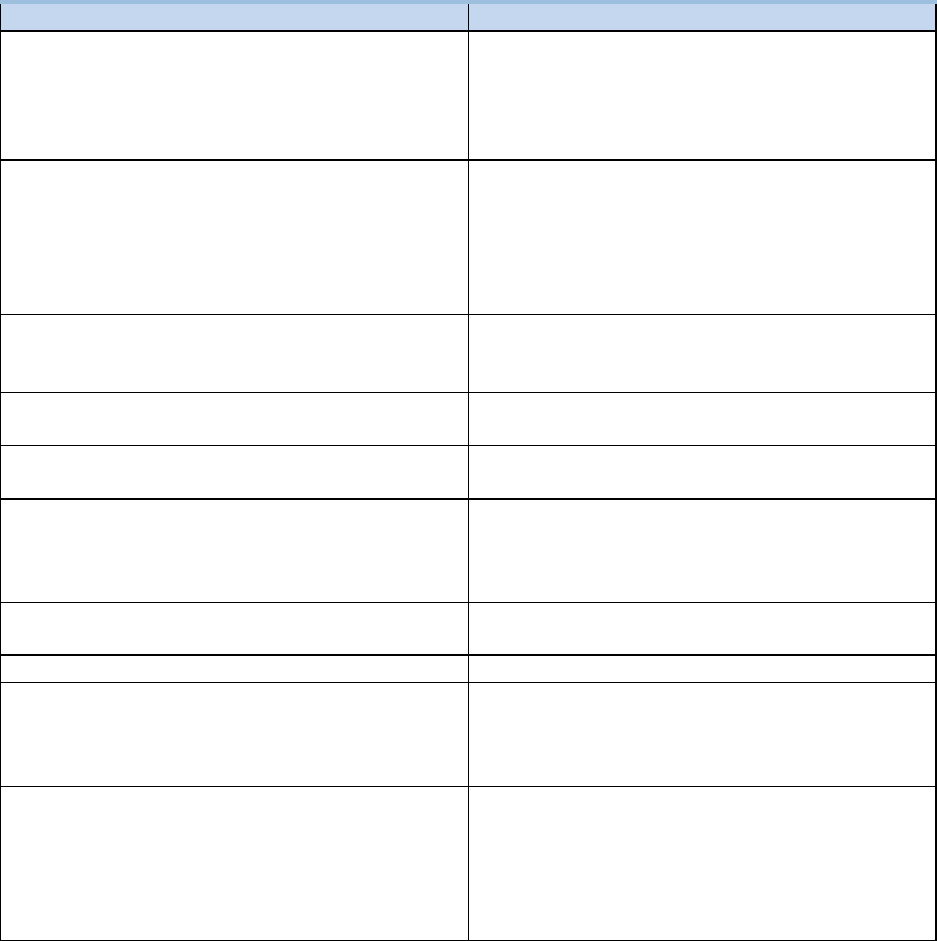
95
inadequate for entry-level practice, leaving the possibility for legal implication, and poor client
outcomes. It is the expectation of community healthcare facilities that our graduates possess this
skill.
Nursing Clinical-Ten Mandatory Elements
Action
Rationale
1. Check the physician’s prescription.
1. Many of the skills presented are
interdependent functions of nursing and
require a physician’s order. The physician’s
order may give guidance or identify
limitations for carrying out the skills.
2. Wash hands before and after the procedure.
Assemble equipment.
2. Hand washing is the single most effective
measure to decrease the transmission of
microorganisms from one person to another.
Assemble equipment before entering the
client’s room in order to perform the skill in
an efficient and organized manner.
3. Identify the client by checking the arm band and
bed tag, and by asking the client to state his or
her name.
3. Prevents the error of performing the skill on
the wrong client.
4. Introduce yourself to the client.
4. Identifies you to the client and helps to
establish rapport with the client.
5. Provide for privacy needs and confidentiality.
5. Demonstrates respect for the individual.
Demonstrates legal and ethical responsibility.
6. Explain the procedure to the client using
developmentally appropriate language and
technique. Be sensitive to cultural
differences.
6. Prepares the client for the procedure,
decreases client anxiety, and elicits client
cooperation and assistance.
7. Use standard/universal precautions at all
times.
7. Standard/universal precautions protect you
from contact with blood or body fluids.
8. Use proper body mechanics at all times.
8. Protects the nurse and client from injury.
9. Refer to the textbook and skills checklist to
accompany the textbook for the steps of the
skill you are performing, maintaining safety
considerations at all times.
9. Promotes safe/optimal care for the client.
10. If abnormal responses are noted, notify your
instructor and the staff nurse assigned to the
client. Document the skill and client
response.
10. Abnormal responses may warrant further
nursing or medical intervention or both.
Documentation provides a way to
communicate with other members of the
healthcare team and provides a legal record
of care given to the client.
Nursing Skills Laboratory
The Skills Lab is located on the CSUSB main and Palm Desert Campuses. In addition to its use for
practice in several courses in the curriculum, the skills lab provides an opportunity for additional
supervised practice for students who need extra time to master technical skills or wish to review
procedures. Please inquire as to the open laboratory hours.
96
Simulation
Simulation at CSUSB main and Palm Desert Campuses is embedded into all clinical courses.
Simulation typically runs once or twice per course and is an active learning tool that allows the
student learner to function in an environment that is as close as possible to a real-life. Simulation
also provides the student an opportunity to make mistakes without patient harm and an opportunity
to improve psychomotor skills. Simulation is utilized at CSUSB as an enriching learning tool for
both students and faculty.
Skills Lab Policy
It is the intent of the faculty and administration in the DON to provide a safe learning experience
for all students and provide guidelines for the development, implementation, and maintenance of
a comprehensive department safety program.
The following guidelines are established to provide instructions in maintaining safety for
students, staff, and faculty when using the Skills laboratory. All concerned shall adhere to these
guidelines. Any revision(s) shall be posted in the skills lab.
1) General Guidelines
a) The Skills lab is locked unless occupied by faculty during class or practice. To
gain access during business hours, the faculty must obtain the key to unlock the
doors. The key is to be returned immediately at the conclusion of use. After hours,
arrangements with the Skills Lab Coordinator must be made prior to the lab need.
b) Locking of the lab doors is the responsibility of the faculty at the end of the lab’s use.
During business hours, the faculty must notify the department office to lock the
lab doors. After hours, communication with the Skills Lab Coordinator or
University Police is necessary.
c) It is the responsibility of the faculty to log off or shut down the computer(s) in the
skills lab after use. Passwords for computer access will be given to faculty at their
orientation. Any break in security must be reported immediately to University
Police, Department Chair, and Skills Lab Coordinator at that campus.
d) All faculty, staff, and students must know and practice the safety guidelines at all times
while using the Skills labs. Failure to adhere to general guidelines can result in
disciplinary action. See Student Needlestick; Hand Hygiene; Stand Precautions;
Uniform; Student Illness; Latex; Medication Administration; IV Push; 10 Mandatory
Elements Policies.
i) Students must report any misconduct occurring in the Skills labs immediately to the
faculty, Department Chair / Chief Nurse Administrator, Program Director, and/or
Skills Lab Coordinator at that campus. Failure to report misconduct can result in
disciplinary action.
e) Students must come to the lab prepared by having read the lab objectives and
assignments prior to the start of the lab session. Students must be knowledgeable of the
care, handling, and proper use of equipment prior to using it in the laboratory.
f) There shall be no drinking, eating, or smoking/electronic vaping in the
practice/computer areas of the Skills Labs. Water will be permitted at the student desks
that are away from the practice/computer areas.
97
g) Access to the doorways in the labs must be clear at all times to allow exit of the labs in
emergency situations. Personal articles (i.e., backpacks) must be stored out of walkways.
h) All doors and cabinets will remain closed when not in use.
i) Return equipment used during lab practice to the proper location as directed by the
instructor. Pick up and dispose of trash into trash containers. Keep the labs neat and
clean, i.e. remake disheveled hospital beds and wipe up non-hazardous spills. The Skills
lab will not be used as a health center for ill students, staff, or faculty, except in publicly
proclaimed emergencies.
j) Children or unauthorized personnel are not allowed in the labs at any time.
k) Gloves are worn by students and faculty during any contact with body fluids. Gloves are
utilized for practice and demonstration of skills. The DON will provide sterile and non-
sterile gloves for faculty and students. (Refer to “Gloving Latex Sensitivity) Policy and
Student Needle stick Blood and Body Fluid Exposure Guidelines”)
l) The labs are not to be used as a social area.
m) General rules for equipment check-out are:
i) Most lab equipment cannot be checked out of the lab by students – the exception is
equipment used in health assessment and community nursing courses, this equipment
may be checked out for up to one (1) term depending on reason and equipment.
ii) Students are responsible for the equipment and will return it to the CSUSB
Nursing Department in working condition.
iii) Failure to return equipment will result in revoking a student’s checkout privileges and
the student will not be allowed to register for future classes, graduate, or obtain
transcripts until the equipment is returned in working order or the CSUSB Nursing
Department has been reimbursed.
2) Skills Lab Safety: (Refer to Student Needle stick/Blood and Body Fluid Exposure
Guidelines) Medication and Fluid Administration Safety
a) Students will be instructed to practice and return to demonstrate only those skills for
which they have had prior instruction and gained familiarity with content and proper
procedure.
b) Students must practice safe techniques while learning in the Skills labs. See Student
Needlestick Guidelines.
c) Needles provided for practice of injections and venipunctures are used in the Skills lab
only and only when faculty members are present for assistance.
d) Students must demonstrate safety precautions while utilizing needles during practice as
instructed in class. Any irresponsible use of needles will result in disciplinary action and
possible failure in that lab course.
e) Needles and other sharp objects must not be discarded in the trash or left out open in the
Skills lab at any time.
f) Students are to practice injections and venipunctures only on the manikins provided in
the Skills lab.
g) Under NO circumstances should a faculty inject a student/faculty with a needle, or a
student inject another student/faculty with a needle.
h) Placebos (commercially prepared practi-med and water) will be used for simulation
98
of oral/topical medications. Old medicine bottles are labeled to use when simulating
preparation of a practice medication order.
i) Intravenous (IV) fluids used beyond their expiration date may be used for practice and
demonstration only. These fluids are not for internal use.
3) Electrical Safety
a) Wet materials may not be used around electrical outlets or equipment.
b) Faculty and students are responsible for reporting any frayed electrical cords, cracked
plugs, missing outlet covers, etc., as well as any problems encountered while using
electrical equipment.
c) No electrical cords will be left in the pathway of walking traffic. Extension cords will be
properly taped to the floor if used over a walkway.
d) Electrical hospital beds in the Skills lab will be inspected as needed for repairs.
Electric beds will be maintained in the lowest position.
e) Only three-prong plugs that contain a ground wire will be used to power equipment in the
Skills lab.
4) Physical Safety
a) Students will be instructed in principles of body mechanics prior to practice and
return demonstration of moving, lifting, and transferring skills.
b) Students must use caution when practicing lifting skills and should not lift another
student without assistance. Irresponsible behavior will result in disciplinary action.
c) The wheels of all equipment (wheelchairs, stretchers, and beds) are to be locked
during practice and return demonstration.
d) Equipment needed for body mechanics practice must be kept in good working condition.
Any broken part will be reported immediately to the Skills Lab Coordinator.
e) Clinical Lab Safety the policies and procedures of the specific clinical agency will be
adhered to as well as the policies and procedures of CSUSB’s DON.
f) Refer to “Unsafe Clinical Behavior Policy”.
5) Reporting an injury
a) Any incident occurring in the Skills, or during on and off campus clinical times must be
reported to the faculty, Compliance Coordinator, Department Chair/Chief Nurse
Administrator, Undergraduate Program Director, and Skills lab coordinator (as
appropriate) within 24 hours.
b) If the injury involves a needle stick/blood and body fluid exposure, refer to the
“Student Needle stick Blood and Body Fluid Exposure Guidelines”.
c) Incident Report must be submitted to the Department Chair/Chief Nurse
Administrator or Undergraduate Program Director within 24 hours of the incident.
6) Cleaning of Laboratory and Equipment
a) The Skills Lab Coordinator will be responsible for the disinfection and maintenance of
equipment, and monitoring of the labs at all times. The Skills Lab Coordinator may
delegate this task, but will be responsible for the overall performance of these duties.
b) Appropriate personnel at the end of each term and more frequently if needed will
clean floors, counters and furniture.
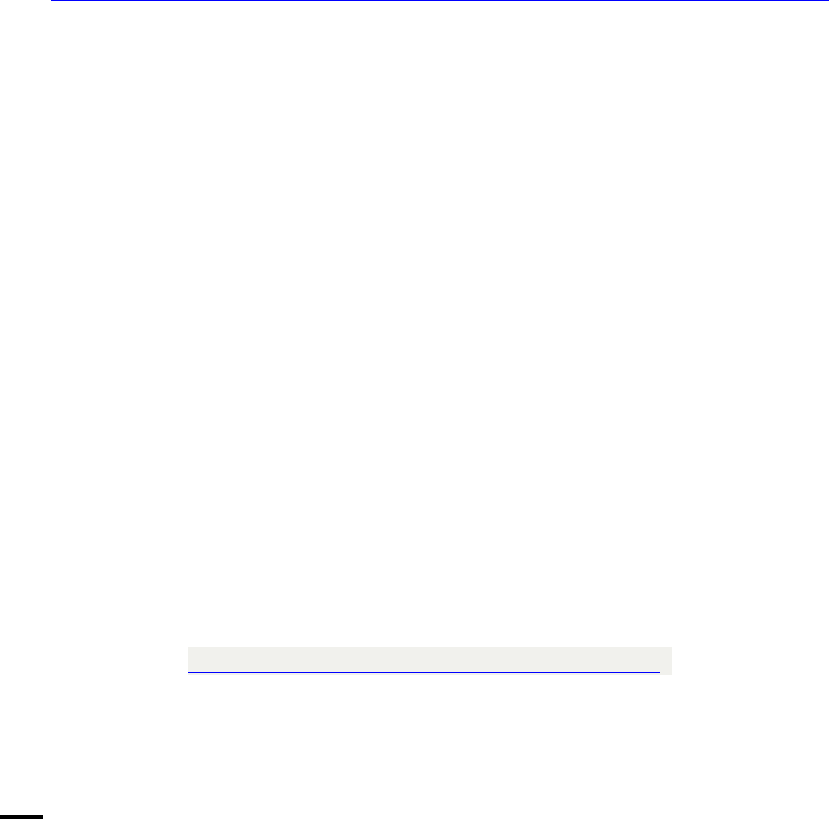
99
c) Equipment/manikins located in the Skills lab will be cleaned each term and more
often if necessary.
d) Linen on beds will be changed and laundered when soiled, after extensive use, and at
the end of each term.
e) Hazardous Waste Disposal:
Potential infectious and hazardous wastes are collected, contained, stored, and
disposed of according to the Occupational Safety and Health Administration (OSHA)
guidelines and the CSUSB Environmental Health and Safety (EHS) Department
guidelines.
f) Current definitions and guidelines can be found at:
i) https://www.csusb.edu/sites/csusb/files/BIOHAZARDManagementPlan2015.pdf
ii) Select “Waste” from the menu.
g) All biohazard contaminated supplies used during Skills labs are collected and stored
in the locked storage room within HP 234. All biohazard waste is labeled and
transported to the Student Health Center’s biohazard container by the Skills Lab
Coordinator, or their designee, at the end of each term or as necessary.
7) Fire and Emergency
In case of fire or emergency, the University protocol will be followed. Protocol is posted in
the Skills and Media labs.
1) Fire
a) Alert people in the area to evacuate.
b) Pull the fire alarm in the area.
c) Call Emergency 911, state your name and where the fire is located.
d) Attempt to put out the fire with an extinguisher, if it is safe to do so.
e) Do not use the elevators. Use the stairs to exit the building.
2) Emergency
a) Use the San Bernardino campus the phone in hallway outside of HP-246 (Media Lab)
b) Call Emergency 911 and state your name, where, and the nature of the emergency.
Weapons on Campus
Weapons are not allowed anywhere on the grounds or buildings of any clinical or class site. This
includes parking lots and personal vehicles. This is consistent with university policy prohibiting
weapons on CSUSB campus https://www.csusb.edu/policies/weapons-campus. This applies to all
CSUSB nursing students, faculty, and staff when in clinical, class, and/or representing CSUSB.
Testing Lab Security Policy
The Testing Lab is located in HP-246. This lab is used for administering online exams. There
shall be NO drinking, eating, or smoking in the Testing Lab. Bottled water will be permitted,
away from the computer areas.
The following Rules and Regulations shall be followed:
100
1) The Testing Lab is to have limited access and will only be available for courses
administering online exams.
2) Before using a testing laptop, students must be assigned a laptop number by their
faculty.
3) After using a testing laptop, students are responsible for properly storing the laptop
in the laptop cart and ensuring the power adapter is connected.
4) Students must follow the CSUSB “Acceptable Use Policy for Electronic
Communications”, the “Campus Email Policy” and all other campus policies related to
media use. Failure to do so may result in disciplinary action and/or removal from the
nursing program.
a) Students may not download or install software or applications (including
and especially, internet chat, or instant messengers.)
b) Since the testing lab is for academic purposes only, students who access
sites that the campus considers lewd, obscene or indecent may be violation of
both the university’s student conduct policies and its sexual harassment
policies.
5) The lab is not to be used as a social area and noise is to be kept at a minimum in the lab.
6) Children, pets or unauthorized personnel are not allowed in the lab at any time.
7) The laptops are for nursing students only.
8) Students must provide their own earphones if required for an assignment.
9) Students must report any misconduct occurring in the Testing Lab immediately to the
faculty, Department Chair, or Information Technology Consultant at that campus.
Failure to report misconduct can result in disciplinary action.
10) Documents and media saved on the testing laptops is automatically deleted at the end of
each day. Because of this, if any files need to be saved, students must bring their own form
of backing up their data.
11) If problems with any of the testing lab equipment occur, the student is to report to their
faculty or the department Information Technology Consultant (HP-232). Student users
are not to fix the equipment themselves.
12) CSUSB and the DON are not responsible for property left in any of the labs. Please
check with the office staff in HP 215 or with University Police for items lost.
a) When done using a laptop, please shut-down the laptop, push-in your chair, and
clear the testing area.
Certified Nursing Assistant
To obtain certification as a Certified Nursing Assistant in California, you must successfully
complete a nursing assistant or equivalent training program and pass the federal competency
exam.
Training requirements for nursing assistants are 50 hours of theory (classroom) and 100 hours
of supervised clinical. These hours must be obtained through an Aid and Technician
Certification Section (ATCS) approved certification training program in California. Upon

101
successful completion of training, programs directly sponsor students for competency testing.
Upon successful completion of competency testing with the testing vendors, and the vendor’s
notification to the Department, the California certificate will be issued by the Department. The
initial certificate is issued for a minimum of 13 months to a maximum of 3 years. CSUSB
nursing students may qualify to take the CNA exam after the second term in the program.
For further information, please visit the Department of Public Health: https://www.cdph.ca.gov/
102
SECTION VII: RECOGNITION AND CEREMONIES
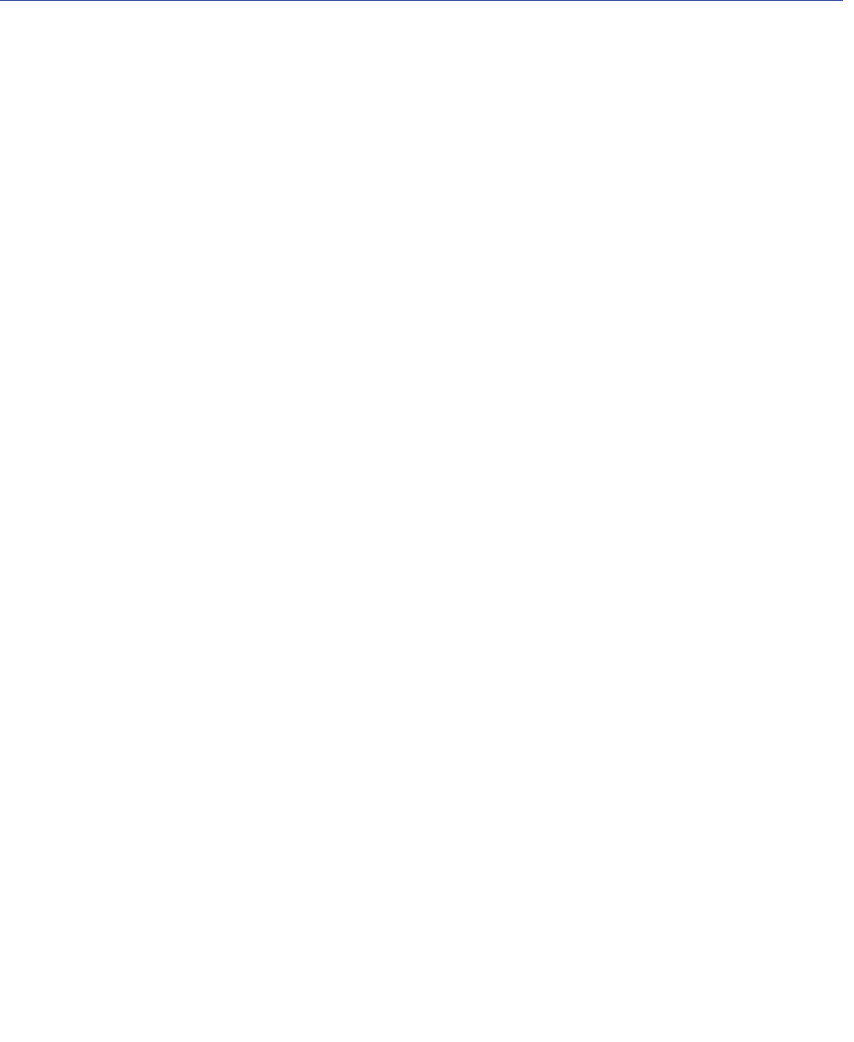
103
Commencement Ceremonies
Participation in commencement activities is voluntary. CSUSB has two commencement
exercises, one in December and one in June. The Palm Desert Campus holds one
commencement exercise in June. For information on commencement registration, please visit:
https://www.csusb.edu/commencement/preparing-graduate/commencement-registration
Academic Regalia
Caps, tassels, gowns, and hoods are available for purchase at the Coyote Bookstore to
students who have registered and paid the commencement fee. Caps and gowns are available
for purchase until the last week before commencement.
Honors for Graduation
To be considered for University Honors for graduation, an undergraduate student must have
completed a minimum of 45 units of work at CSUSB in courses for which letter grades (A,
B, C and D) were received. University Honors for commencement are based on the
student's units and GPA through the end of the term prior to commencement (i.e. winter for
spring commencement and summer for fall commencement).
⧫ Summa Cum Laude: an overall cumulative undergraduate grade point average of
3.9 or above and a grade point average of 3.9 or above in all work attempted at
this university.
⧫ Magna Cum Laude: an overall cumulative undergraduate grade point average of
3.75 or above and a grade point average of 3.75 or above in all work attempted at
this university.
⧫ Cum Laude: an overall cumulative undergraduate grade point average of 3.5 or above
and a grade point average of 3.5 or above in all work attempted at this university.
In determining eligibility for graduation with University Honors with a second bachelor's
degree, all baccalaureate-level coursework completed past high school will be used in the
GPA calculation.
Department of Nursing Honors
Department of nursing honors are awarded based on recommendation by the faculty of the
Department of Nursing.
1. A clear demonstration of professionalism in all aspects of their educational experience.
o Demonstrates and models behaviors that display the mission, vision, and values of
the Department of Nursing
o Demonstrates and models behaviors that elevate the practice of professional
nursing.
o Demonstrates respect to peers, faculty, staff, patients, and facility staff
o Abides by CSUSB and Department of Nursing policies and guidelines and deadlines
including compliance and other expected documentation.
o Engages in appropriate interpersonal communication and conflict resolution
strategies, while respecting the dignity of others and the chain of command
o Behavior reflects positively on CSUSB and the nursing program.
2. Integrity in academic performance.
o Demonstrates responsibility in maintaining quality and timeliness of all work
submitted
o Abides by CSUSB Student Conduct Code
▪ No incident of cheating
▪ No incident of falsifying documents
o No evidence of Health Insurance Portability and Accountability Act (HIPAA)
violations
o No evidence of inappropriate discussion of others (i.e., slander)
o No evidence of inappropriate use of social media
3. No substantiated violation of the standards and guidelines of the university, college,
department and the profession of nursing as determined by the Chair.
4. Minimum GPA of 3.6 on all nursing courses taken at CSUSB.
Approved APR 08/31/2022 FO 09/23/2022
Department of Nursing Outstanding Academic Achievement Award
The recipient of this award is selected by the Department of Nursing faculty. One award is given
to a member of each graduating cohort who consistently demonstrated outstanding academic
performance in all nursing theory and clinical courses. The student with the highest nursing GPA
who is also eligible for department honors award and who did not repeat, withdraw from, and
receive an incomplete in nursing courses (e.g. W or I in a nursing course) will be selected for this
award. In the event of a tie, more than one award may be given.
Department of Nursing Outstanding Student Leadership Award
Awarded to one student in each graduating cohort.
Faculty will invite students with a GPA in the top 10% of their cohort to submit an application
for the leadership award. The application must include a personal statement describing their
leadership activities. Students are encouraged to describe leadership among peers, in the clinical
setting, the nursing program, community, or the profession.
Approved by FO 2.22.19.
Honor Cords
Honor cords are purchased through the Bookstore during Grad Days during the graduating
term.
Dedication to the Profession Ceremony
The CSUSB nursing department faculty recognize their incoming nursing students with a
dedication to the profession ceremony. This ceremony for nurses is held early in the nursing
student’s journey as a caring and compassionate practitioner. The purpose of this ceremony is to
welcome new nursing students to healthcare practice and to convey the importance of caring as
the core of healthcare and the giving relationship between nurse and patient. The emphasis of
compassion in combination with scientific excellence is communicated.
Representatives of the beginning student class are encouraged to participate in the planning of
this ceremony. Faculty invite and thank nursing faculty, students, and staff who volunteer to
help plan the ceremony and assist with the event’s activities.
Recognition & Pinning Ceremony
The CSUSB nursing faculty invite their nursing students to join them in the sisterhood and
brotherhood of the honored and most trusted profession, nursing, at the end of program
recognition and pinning ceremony. This CSUSB pin is awarded to recognize completers of the
CSUSB nursing programs, Pre-licensure BSN, RN to BSN, and MSN. It includes new BSN
graduates, entering the profession for the first time, and experienced RNs, RN to BSN and MSN
graduates, entering new roles in the profession of nursing. These graduates recite the
International Pledge for Nurses and are presented with a pin representing nursing and CSUSB.
A special and solemn ceremony, it is rich with symbolism. The significance of the ceremony and
pin are traced back to the Crusades of the 12th century when knights were given a Maltese cross
as recognition of their vow to serve the injured and infirmed. Modern nursing ceremonies are
traced back to Florence Nightingale who presented medals of excellence to her graduates.
Pinning ceremonies of today recognize the importance of professionalism, knowledge, caring
and compassion of nurses who are devoted to the welfare and well-being of society.
Representatives of the pre-licensure, RN to BSN, and MSN classes are encouraged to participate
in the planning of this ceremony. Faculty invite and thank nursing faculty, students, and staff
who volunteer to help plan the ceremony and assist with the event’s activities.
Responsibilities for Pre-Licensure Dedication to the Profession Ceremony
A. Department Chair
a. Set Date & Time
b. Set Location
c. Approve overall event program and music selections
d. Confirm commitment of Platform Party (i.e., speaker, faculty participants)
e. Engage Keynote Speaker
B. Staff Responsibilities
a. Attend Planning Meetings
b. Reserve location
c. Send save the date to special guest and university officials
d. Prepare Program with current speakers, titles, etc.
e. Order Printing of program
f. Ensure all materials (Honor Code Book are present at ceremony and returned to Department after
ceremony)
g. Engage Student involvement
1. Confirm assistance of Student Nurse Association (SNA) members before and after event
h. Provide set up and clean up - guide assisting students
i. Confirm AV is available and functioning
j. Arrange platform and reserved seating including special guests and university officials
k. Run rehearsal
C. Student Nurse Association (SNA) Representatives Responsibilities
a. Assist with set up and take down
b. Usher guests
Responsibilities for Recognition and Pinning Ceremony
A.
Department Chair
a.
Confirm budget amount and source
b.
Approve overall program
B.
Admission, Progression, and Recognition (APR) Committee
a.
Set Date & Time
b.
Set Location
c.
Select processional and recessional music
d.
Review and approve speeches, videos, and music selections
C.
Faculty
a.
Pre-licensure (PL) BSN Faculty Advisor to graduating cohort
1.
Assist students with pin ordering (paid by students) no later than 7 weeks prior to ceremony
b.
RN-BSN Coordinator
1.
Discuss event and attendance with students
2.
Help students plan photos, videos, and other participatory activities (if students choose to create)
3.
Assist students with pin ordering (paid by students) no later than 7 weeks prior to ceremony
c.
MSN Coordinator
1.
Discuss event and attendance with students
2.
Help students plan photos, videos, and other participatory activities (if students
3.
Gather and submit (to staff) master’s project title information for pinning program
4.
Assist students with pin ordering (paid by students) no later than 7 weeks prior to ceremony
D.
Staff Responsibilities
a.
Attend Planning Meetings
b.
Reserve location
c.
Notify graduating students and program coordinators of date of event
d.
Send save the date to special guest and university officials
e.
Create graduate picture slideshow
f.
Assist with elections of participants
g.
Hire photographer for ceremony
h.
Prepare Program with current speakers, titles, etc.
i.
Prepare graduate name cards with phonetic spelling
j.
Order Printing of program and tickets
k.
Confirm assistance of non-graduating student organization members before and after event
l.
Ensure all materials (Pins, award Certificates, Candle lights, programs, tablecloths, graduate name cards)
are present at ceremony and returned to Department after ceremony
m.
Guide assisting students with set up, ushering, clean up
n.
Confirm AV is available and functioning
o.
Arrange platform and reserved seating including special guests and university officials
p.
Survey graduating cohort during week 4 of graduating term for the following:
1.
Student Speaker
2.
2 Faculty Pinners (Full-time serialized or Tenured/Tenure-Track Faculty)
3.
Faculty member to assist with candle lighting (Full-time serialized or Tenured/Tenure-Track
Faculty)
E.
Student Responsibilities of graduating classes
a.
Graduating students participate in survey provided by Department to elect Student Speaker from all programs.
Each speaker allotted 2 minutes each.
b.
PL BSN Cohort participates in survey provided by Department to elect 2 faculty members to assist with
Pinning based on list of full-time faculty provided by department of nursing
c.
Cohorts plan video
1.
Submit Videos/photos to APR Committee for review no later than 4 weeks before the ceremony
2.
Journey through Nursing Video – 3-4 minutes max
3.
Submit graduate photo picture and verbiage to staff for Graduate Picture Video (as directed)
d.
Follow Department Dress Code Policy
F.
Student Nurse Association (SNA) Representatives Responsibilities
a.
Solicit student volunteers to usher, take tickets at door, hand out programs, take down/clean up
Dress Code for Nursing Ceremonies
The purpose for the dress code is to ensure that all student participants in a ceremonial
event are professionally and uniformly attired.
1. Attire: Solid colors only (all black or all dark blue). No visible underwear.
2. Hem of the skirt or dress must be no higher than the top of the kneecap. Hem of the slacks should reach below
the ankle.
3. The garment must be opaque with sleeves and a neckline that does not reveal cleavage.
4. All clothing must be clean and pressed.
5. Hosiery must be non-textured, non-patterned, non-mesh, in a skin tone.
6. A collared shirt and necktie or turtleneck are required if not wearing a skirt or dress.
7. Shoes: Black or Navy. Shoe color should be the same color as slacks/skirt/dress. Heels are not to exceed 3
inches. Platform shoes and flip flops are not acceptable.
8. Accessories, such as jewelry must be minimal and professional, one small stud in each ear, is allowed. No other
visible body piercings are allowed. All body piercings must be covered or removed.
9. All students must wear their white lab coats for Recognition & Pinning.
10. All students will bring and don their white coat at the Dedication to the Profession ceremony.
Students who are not professionally dressed and in accordance with these guidelines, may not be allowed to
participate in the ceremony. Requests for exceptions to the dress code standard for medical or cultural/religious
accommodations will be considered on an individual basis.
Approved by APR 1.28.22 FO 3.18.22
SECTION VIII: STUDENT ACTIVITIES

109
STTI, International Nursing Honor Society
RHO BETA is the CSUSB chapter of Sigma Theta Tau International (STTI) which was
established at CSUSB DON in 1994. In the spring of 2000, the society became the 408th
Chapter (Rho Beta) of Sigma Theta Tau International – The Honor Society of Nursing. The
purposes of Sigma Theta Tau International are to recognize superior achievement, recognize
the development of leadership qualities, foster high professional standards, encourage creative
work, and strengthen the commitment to the ideals and purposes of the profession.
Membership
Membership is by invitation during the eligible student’s junior and senior years. Criteria for
membership are a CSUSB cumulative GPA of 3.5 or above, demonstrated leadership,
creativity and overall ability in nursing. The eligibility committee will extend invitations to
candidates in the spring term; the induction ceremony is held during the spring term. There is
an annual fee for membership in a Sigma Theta Tau International (STTI) Chapter, part of
which is returned to Rho Beta to support local programs. All nursing students may attend
program meetings of the Nursing Honor Society.
STTI officers may be students, alumni and/or community members. Several academic events will
be held each year (for continuing education credits); all students are encouraged to participate in
these events.
STTI has over 120,000 active members and is the second largest nursing organization in the
world. Members are active in more than 90 countries and territories, and the 423 chapters are
located on 523 college and university campuses in the US and countries including Canada, Hong
Kong, Pakistan, South Korea, Australia, The Netherlands, and Brazil. Membership is by
invitation to baccalaureate and graduate nursing students who demonstrate excellence in
scholarship, and to nurse leaders exhibiting exceptional achievements in nursing. Sixty percent of
members hold Master’s and/or Doctoral degrees. More than 60 percent are clinicians, 23 percent
are administrators or supervisors and 17 percent are educators or researchers. The overall vision
of STTI is to create a global community of nurses who lead in using scholarship, knowledge and
technology to improve the health of the world’s people. To learn more about STTI, consult the
website.
Nursing Student Organization
The students at the San Bernardino campus and Palm Desert Campus participate in a nursing
student organization. The nursing student organization is recognized by the Associated
Students, Inc. (ASI). All enrolled nursing majors are automatically members of this nursing
student organization. The purpose of this organization is threefold:
1) Professional development
2) Student-faculty communication and
3) Social activities.

110
The nursing student organization also provides services to the students such as campus-wide
publicity and representation on standing faculty and ASI committees. This organization supports
a student mentorship program for the DON and its generic BSN students.
Student organization apparel is available for purchase with funds going toward delegate
representation at state and national conventions. Additional information is available about activities
of this organization and ASI. Officers are elected each spring in a general election.
The current constitution/bylaws for this organization can be located at:
https://csusb.campuslabs.com/engage/organization/coyote-student-nurses
Student Nurses Association/ National Student Nurses Association (SNA/NSNA) &
California Student Nurses Association (CSNA)
With a membership of approximately 50,000 nationwide, the National Student Nurses' Association
mentors the professional development of future nurses and facilitates their entrance into the
profession by providing educational resources, leadership opportunities, and career guidance.
NSNA members have an opportunity to maximize their leadership potential and thus enhance their
career development. Self-governance opportunities are available at the school, state and national
levels. https://www.nsna.org/
The mission of NSNA is to:
● Bring together and mentor students preparing for initial licensure as registered nurses, as well
as those enrolled in baccalaureate completion programs.
● Convey the standards and ethics of the nursing profession.
● Promote development of the skills that students will need as responsible and accountable
members of the nursing profession.
● Advocate for high quality, evidence-based, affordable and accessible health care.
● Advocate for and contribute to advances in nursing education.
● Develop nursing students who are prepared to lead the profession in the future.
https://www.nsna.org/about-nsna.html
Top ten reasons to join:
● Career Planning opportunities
● Subscription to Imprint, the professional magazine for student nurses
● Discounts on study tools/NCLEX Reviews, Health & Liability Insurance, Apparel, School
Supplies and Hotels
● Discounts on NSNA Annual Convention & Mid-Year Career Planning Conference
registration fees
● Discounts on student membership in select professional nursing organizations
● Leadership development and community outreach opportunities

111
● Earn school credit through NSNA Leadership U
● Awards program
● Scholarship Opportunities
● Preparation for the NCLEX. Preparation for practice (NSNA members receive 25% discount
on Lippincott NCLEX-RN PassPoint)
Coyote Student Nurses and Coyote Student Nurses of the Desert are also the local chapters
of the National Students Nurses’ Association and the California Students Nurses’
Association (CSNA) https://www.cnsa.org/
There is a fee which entitles the student too many valuable benefits, discounts and enables
CSUSB to send delegates to the state and national conventions to represent our school.
Membership information and applications are given to incoming sophomores.
While membership in NSNA is voluntary at this time, all CSN & CSND officers are required
to join NSNA.
NSNA Code of Academic and Clinical Conduct
PREAMBLE
Students of nursing have a responsibility to actively promote the highest level of moral and
ethical principles and to embody the academic theory and clinical skills needed to continuously
provide evidence-based nursing care given the resources available. Grounded in excellence,
altruism and integrity, the clinical setting presents unique challenges and responsibilities while
caring for people in a variety of health care environments.
The Code of Academic and Clinical Conduct is based on an agreement to uphold the trust that
society has placed in us while practicing as nursing students. The statements of the Code
provide guidance for nursing students in the personal development of an ethical foundation for
nursing practice. These moral and ethical principles are not limited to the academic or clinical
environment and have relevance for the holistic professional development of all students
studying to become Registered Nurses.
CODE OF ACADEMIC AND CLINICAL CONDUCT
As students who are involved in the clinical and academic environments, we believe that ethical
principles, in adherence with the NSNA Core Values, are a necessary guide to professional
development. Therefore, within these environments we:
1. Advocate for the rights of all patients.
2. Diligently maintain patient confidentiality in all respects, regardless of method
or medium of communication.
3. Take appropriate action to ensure the safety of patients, self, and others.

112
4. Provide care for the patient in a timely, compassionate, professional, and culturally
sensitive and competent manner.
5. Are truthful, timely and accurate in all communications related to patient care.
6. Accept responsibility for our decisions and actions.
7. Promote excellence and leadership in nursing by encouraging lifelong learning,
continuing education, and professional development.
8. Treat others with respect and promote an inclusive environment that values the
diversity, rights, cultural practices and spiritual beliefs of all patients and fellow
healthcare professionals.
9. Collaborate with academic faculty and clinical staff to ensure the highest quality of
patient care and student education.
10. Use every opportunity to improve faculty and clinical staff understanding of the nursing
student’s learning needs.
11. Encourage mentorship among nursing students, faculty, clinical staff,
and interprofessional peers.
12. Refrain from performing skills or procedures without adequate preparation, and
seek supervision and assistance when necessary.
13. Refrain from any deliberate action or omission in academic or clinical settings that
create unnecessary risk of injury to the patient, self, or others.
14. Assist the clinical nurse or Clinical RN/Preceptor in ensuring that adequate informed consent is
obtained from patients for research participation, for certain treatments, or for invasive
procedures.
15. Abstain from the use of any legal or illegal substances in academic and clinical settings
that could impair judgment.
16. Strive to achieve and maintain an optimal level of personal health.
17. Support access to treatment and rehabilitation for students who are experiencing
impairment related to substance abuse and mental or physical health issues.
18. Uphold school policies and regulations related to academic and clinical performance,
reserving the right to challenge and critique rules and regulations as per school
grievance policy.
https://www.dropbox.com/s/a229ong58d5jx4p/Code%20of%20Ethics.pdf?dl=0
First adopted by the 2001 House of Delegates, Nashville, TN. Amended by the House of
Delegates at the NSNA Annual Convention on April 7, 2017 in Dallas, TX.
113
SECTION IX: APPENDICES
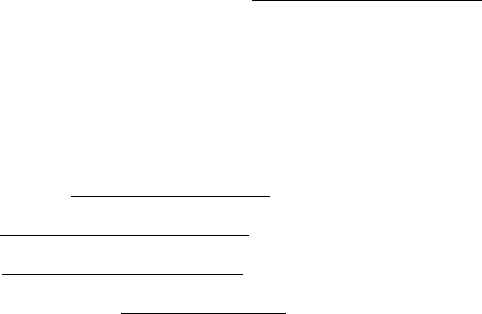
114
CSUSB Incident and Near Miss Report
A student/faculty incident report is completed when any event (such as a fall, being struck by a
patient, medication error, IV error, student injury, faculty injury, and any other non-injury event
that needs to be documented) occurs which may cause potential harm to a student, faculty
member, or a client in the clinical setting or during any course-related activity. The form should
be completed as soon as the student and/or faculty member have knowledge of the event. The
form is then immediately sent to the Department Chair. See Policy near page 68.
1. Date of this report:
⧫ Date of Incident
2. Name of person completing this report:
⧫ Names and titles of all individuals involved in incident (i.e. Nurse Manager, Faculty,
Staff Nurse, Patient, Physician, etc.):
3. Name of student:
⧫ Cohort (graduation date):
⧫ Name of faculty:
4. Academic program and campus in which this student is enrolled:
5. Time and date of student incident/injury/near miss:
6. Name of Setting (exact location of incident), (clinical/class/course‐related experience, agency
and/or unit or other site) and course number where this incident/injury/near miss occurred:
⧫ Agency phone number, if applicable:
7. If an incident occurred, was a clinical agency incident report completed?
8. Description of the incident/injury/near miss and circumstances surrounding the
incident/injury/near miss by faculty/student (who, what, when, where and how):
9. Describe treatment received:
⧫ Date of treatment:
⧫ Treated at:
⧫ By whom?
⧫ If not treated, why not?
12. Medication related:
⧫ Diet related
⧫ Client physical injury related:
⧫ Procedure related:
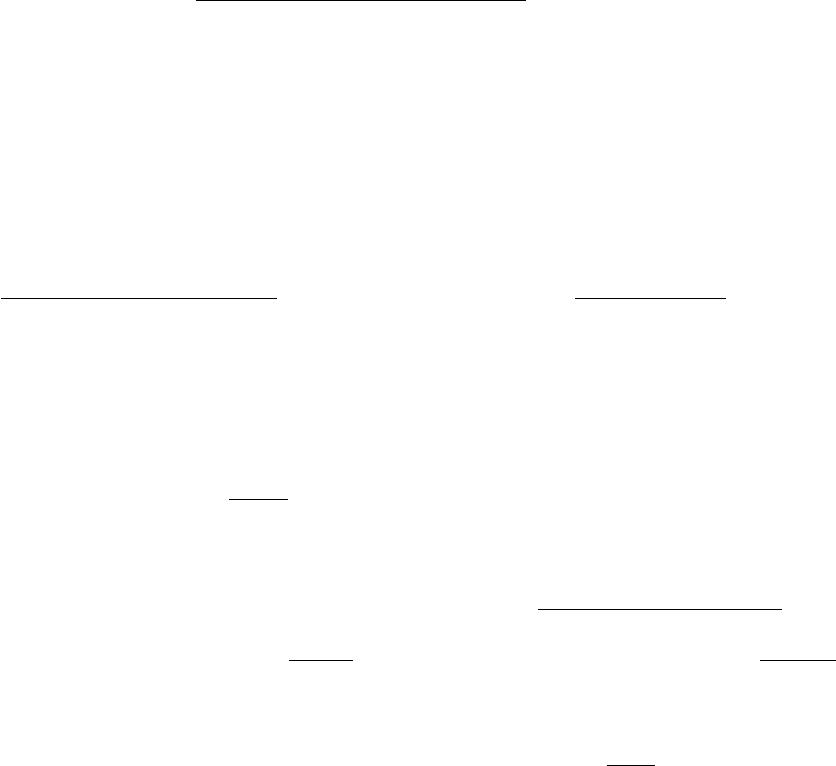
115
⧫ Other:
I attest that the information provided on this form, to the best of my knowledge, describes the
cited incident or near miss.
Signature and Date:
This document must be transmitted to the Department Chair or designee, if unavailable as soon
as possible but no later than 24 hours following the incident or near miss. In the case of serious
incident, the reporting party must contact the Department Chair immediately or designee if they
cannot be reached. It is understood that the Department Chair or designee will contact the
appropriate university officials.
I have reviewed this report:
Signature of the Chair of the DON: Date:
The Department Chair will retain a copy of this report.
FOLLOW-UP ACTION REQUIRED
(To be completed by the Department
Chair):
Individual Interviewed Reported to
Agency’s
Risk
Management
Education/Training Provided Reported to Dean of CNS
Other: Reported to CSUSB Risk
Management
Reviewed 2016
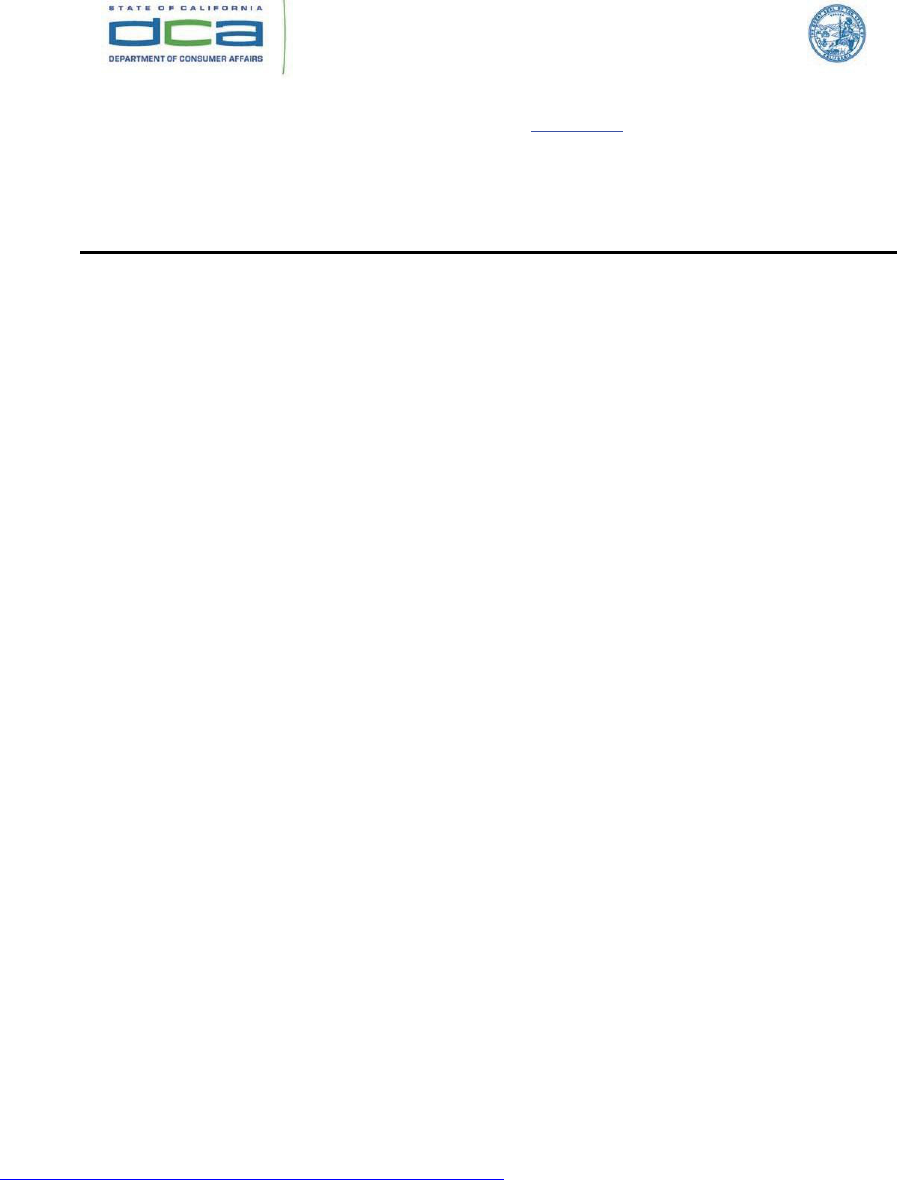
116
Abandonment of Patients
BUSINESS, CONSUMER
SERVICES, AND HOUSING
AGENCY • GOVERNOR
EDMUND G. BROWN JR.
BOARD OF
REGISTERED NURSING
PO Box 944210, Sacramento, CA 94244-2100
P (916) 322-3350 F (916) 574-8637 | www.rn.ca.gov
ABANDONMENT OF PATIENTS
Inquiries have been received by the Board of Registered Nursing (BRN) regarding which actions by a nurse
constitute patient abandonment and thus may lead to discipline against a nurse's license.
Generally for patient abandonment to occur, the nurse must:
a) Have first accepted the patient assignment, thus establishing a nurse-patient relationship, and then
b) Severed that nurse-patient relationship without giving reasonable notice to the appropriate person
(e.g., supervisor, patient) so that arrangements can be made for continuation of nursing care by others.
A nurse-patient relationship generally begins when responsibility for nursing care of a patient is accepted by the
nurse. Failure to notify the employing agency that the nurse will not appear to work an assigned shift is not
considered patient abandonment by the BRN, nor is refusal to accept an assignment considered patient
abandonment. Once the nurse has accepted responsibility for nursing care of a patient, severing of the nurse-
patient relationship without reasonable notice may lead to discipline of a nurse's license.
RNs must exercise critical judgment regarding their individual ability to provide safe patient care when declining
or accepting requests to work overtime. A fatigued and/or sleep deprived RN may have a diminished ability to
provide safe, effective patient care. Refusal to work additional hours or shifts would not be considered patient
abandonment by the BRN.
The RN who follows the above BRN advisory statement will not be considered to have abandoned the
patient for purposes of Board disciplinary action. However, it should be noted that the BRN has no
jurisdiction over employment and contract issues.
NPR-B-1 REAFFIRMED 4/1998 ABANDONMENT OF PATIENTS
REV. 11/2001, 01/2011, 04/13/2011
https://www.rn.ca.gov/pdfs/regulations/npr-b-01.pdf
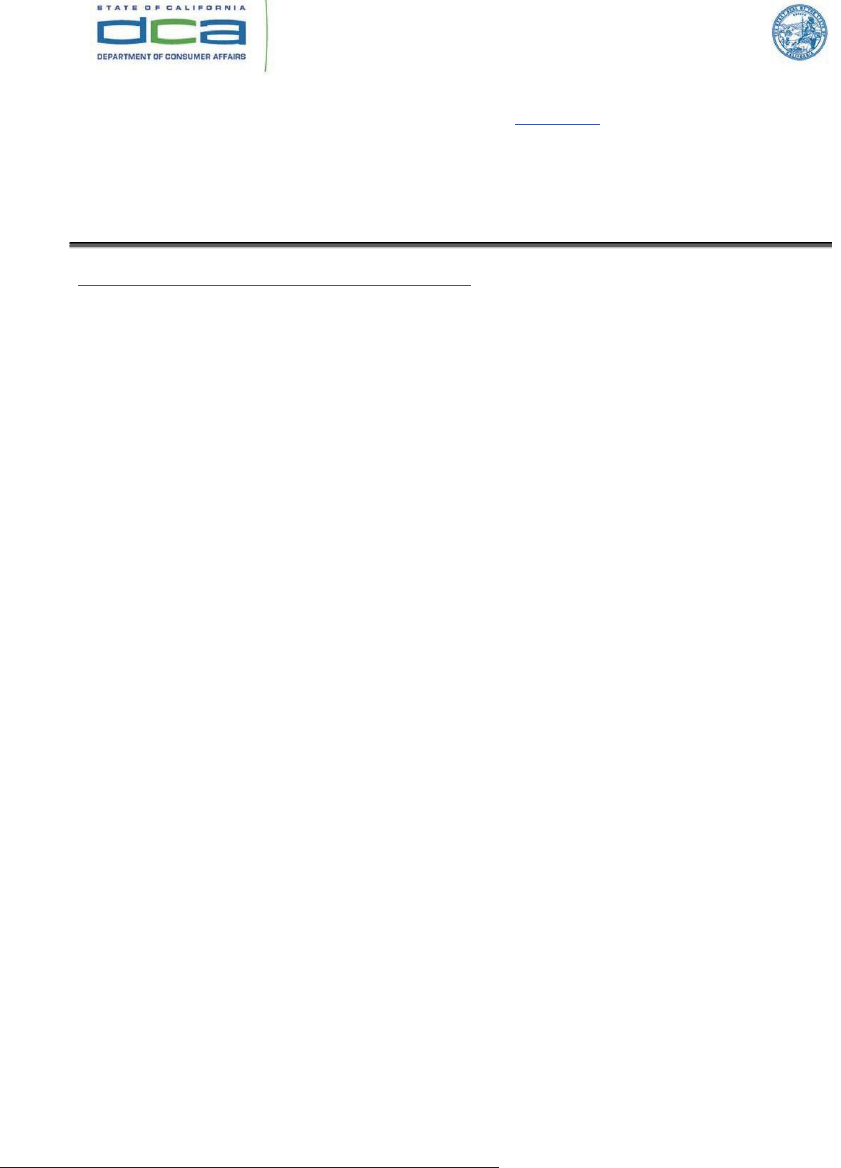
117
Standards of Competent Performance
PO Box 944210, Sacramento, CA 94244-2100
P (916) 322-3350 F (916) 574-8637 | www.rn.ca.gov
BUSINESS, CONSUMER
SERVICES, AND HOUSING
AGENCY • GOVERNOR
EDMUND G. BROWN JR.
BOARD OF
REGISTERED
NURSING
STANDARDS OF COMPETENT PERFORMANCE
Website:
http://www.rn.ca.gov/regulations/title16.shtml#1443.5
1443.5. STANDARDS OF COMPETENT PERFORMANCE
A registered nurse shall be considered to be competent when he/she consistently demonstrates the ability
to transfer scientific knowledge from social, biological and physical sciences in applying the nursing
process, as follows:
(1) Formulates a nursing diagnosis through observation of the client's physical condition and behavior,
and through interpretation of information obtained from the client and others, including the health
team.
(2) Formulates a care plan, in collaboration with the client, which ensures that direct and indirect
nursing care services provide for the client's safety, comfort, hygiene, and protection, and for disease
prevention and restorative measures.
(3) Performs skills essential to the kind of nursing action to be taken, explains the health treatment
to the client and family and teaches the client and family how to care for the client's health needs.
(4) Delegates tasks to subordinates based on the legal scopes of practice of the subordinates and on the
preparation and capability needed in the tasks to be delegated, and effectively supervises nursing care
being given by subordinates.
(5) Evaluates the effectiveness of the care plan through observation of the client's physical condition
and behavior, signs and symptoms of illness, and reactions to treatment and through communication
with the client and the health team members, and modifies the plan as needed.
(6) Acts as the client's advocate, as circumstances require by initiating action to improve health care or
to change decisions or activities which are against the interests or wishes of the client, and by giving
the client the opportunity to make informed decisions about health care before it is provided.
NPR-I-20 06/1995 STANDARDS OF COMPETENT
PERFORMANCE REV 01/2011
https://www.rn.ca.gov/pdfs/regulations/npr-i-20.pdf
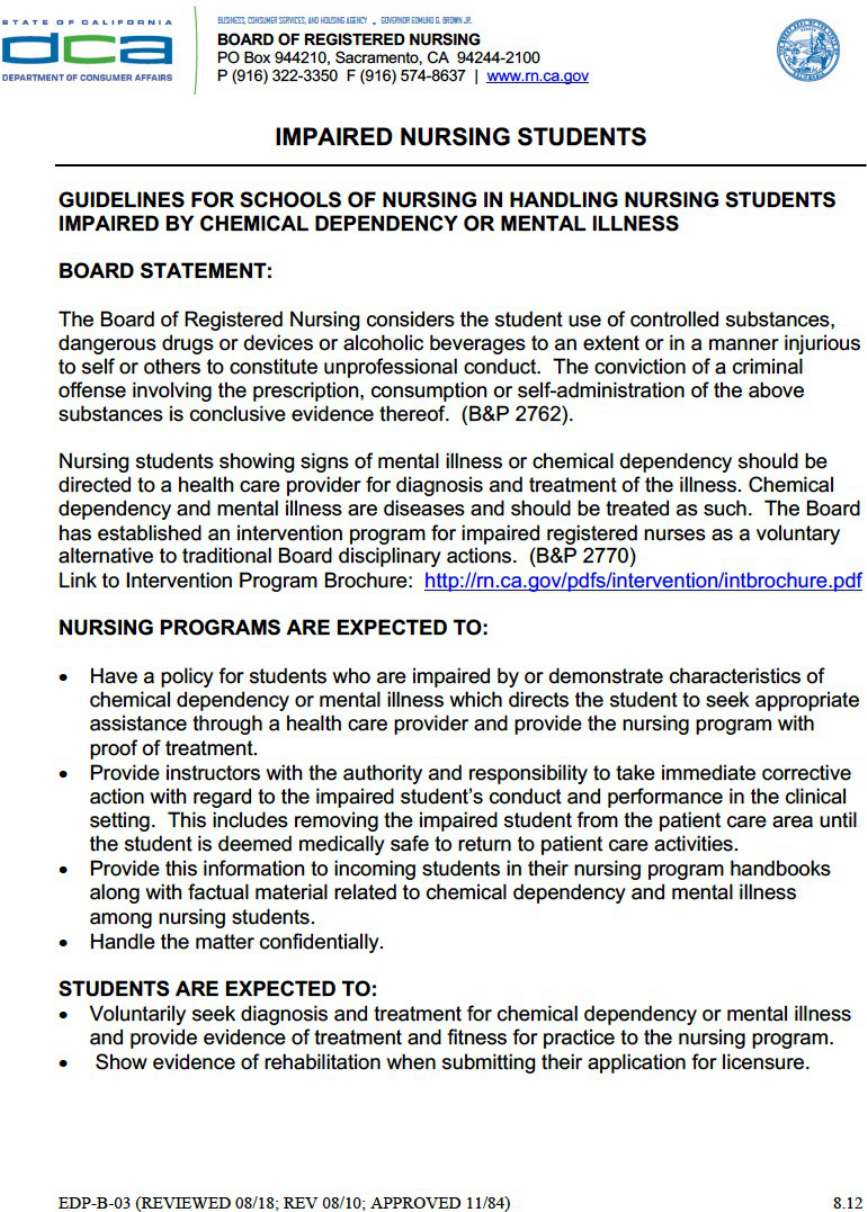
118
BRN Impaired Policy
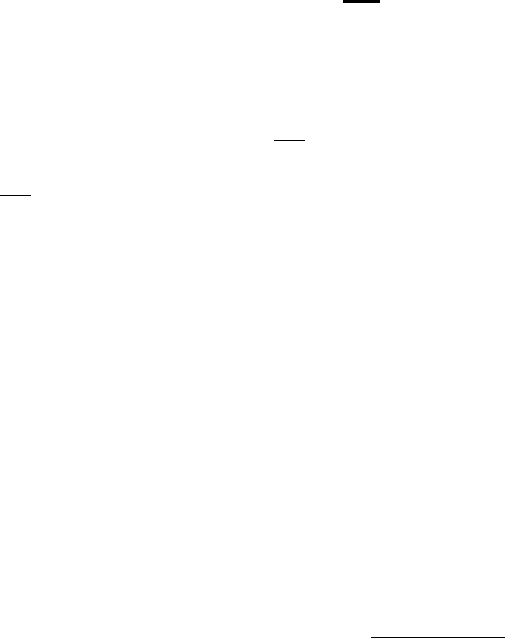
119
Other Department of Nursing Pathways
Licensed Vocational Nurses (LVN) Thirty (30)- Unit Option at CSU San
Bernardino (CSUSB)
Background to the 30-Unit LVN Option per California Board of Registered Nursing
(BRN) Guidelines
(Not a Pathway to a BSN)
The LVN “30-Unit Option” is a pathway for LVNs currently licensed in California to become
eligible to take the NCLEX-RN examination to be licensed as a Registered Nurse in California.
The LVN 30-Unit Option is not a pathway to a Bachelor of Science in Nursing (BSN) degree.
CSUSB does not offer an LVN-to-BSN program. LVNs who complete the 30-Unit Option will
not earn any degree from CSUSB.
CSUSB is pleased to offer nursing courses meeting the BRN requirement for a 30-Unit Option
for those LVNs for whom it would be a good career choice. Ultimately the responsibility for
qualifying to take the NCLEX-RN rests on the individual LVN completing the Option.
CSUSB Department of Nursing Policy and Procedure for the LVN 30-Unit Option
1. To be admitted to the LVN 30-unit Option at CSUSB, applicants must be currently
licensed as a Vocational Nurse in California.
2. Interested California LVNs are required to obtain objective counseling from the
Department of Nursing Chair or designee to clarify that the LVN 30-unit Option does
NOT lead to a degree.
a. LVNs who complete the 30-Unit Option may sit for the NCLEX-RN examination
and if successful may be licensed in the state of California with a “non-graduate
license.” There may be no reciprocity for licensure in any other state.
b. LVN candidates, during the objective counseling session, will be asked to sign a
statement acknowledging item 2 above. The statement will be placed in their
student file in the Department of Nursing.
3. Applicants must apply for admission to the University with a Non-Degree Seeking
(Transitory) Application; they will not enter as nursing majors.
4. Applicants are not required to complete University division general education
requirements, pre-requisite nursing core courses or additional preparatory courses in the
major.
5. Applicants are required, prior to receiving permission to enroll in the courses in the 30-
Unit Option, to take the exams associated with the following courses to identify areas
where remediation might assist them in completing the courses required for the 30-Unit
LVN Option:
a. NURS 3016 Health Assessment
b. NURS 3221 Nursing Care of Adults & Older Adults I
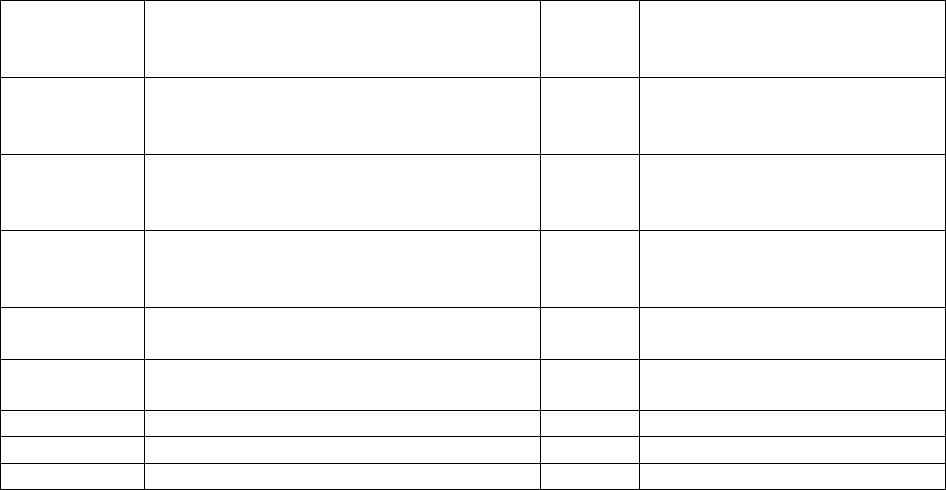
120
6. In compliance with California Code of Regulations Section 1429, a maximum of thirty
semester units of nursing courses may be required for the 30-Unit LVN Option. At
CSUSB the following nursing courses are required:
Course
Prefix and
Number
Course Title
Units
Comments
BIOL 2230
Human Anatomy & Physiology I for
Allied Health Majors
4 units
Equivalent course may be
transferred in or may exercise
Challenge option
BIOL 2240
Human Anatomy & Physiology II for
Allied Health Majors
4 units
Equivalent course may be
transferred in or may exercise
Challenge option
BIOL 2200
Microbiology for Allied Health Majors
4 units
Equivalent course may be
transferred in or may exercise
Challenge option
NURS 3082
Pharmacology & Therapeutics for
Nursing Practice
3 units
NURS 4415
Psychiatric & Mental Health Nursing
Practice
5 units
Includes a clinical component
NURS 4833
Nursing Care of Adults & Older Adults II
7 units
Includes a clinical component
NURS 4840
Leadership & Management in Nursing
3 units
Total
30 units
7. Applicants qualifying for admission to the required nursing courses will be considered
along with all other qualified students on a space available basis as the prelicensure BSN
program is impacted.
8. Admitted LVNs are responsible for meeting all health, background, insurance, and other
compliance requirements for courses that include clinical experiences.
Once the LVN successfully completes all required courses in the 30-Unit Option, the
Department of Nursing Chair or designee will complete all required California Board of Nursing
documents.
Approved by FO 3.15.2019; Effective Fall 2020

